ICG MAGAZINE

WANNA DANCE WITH SOMEBODY + YELLOWSTONE + GENERATION NEXT
I


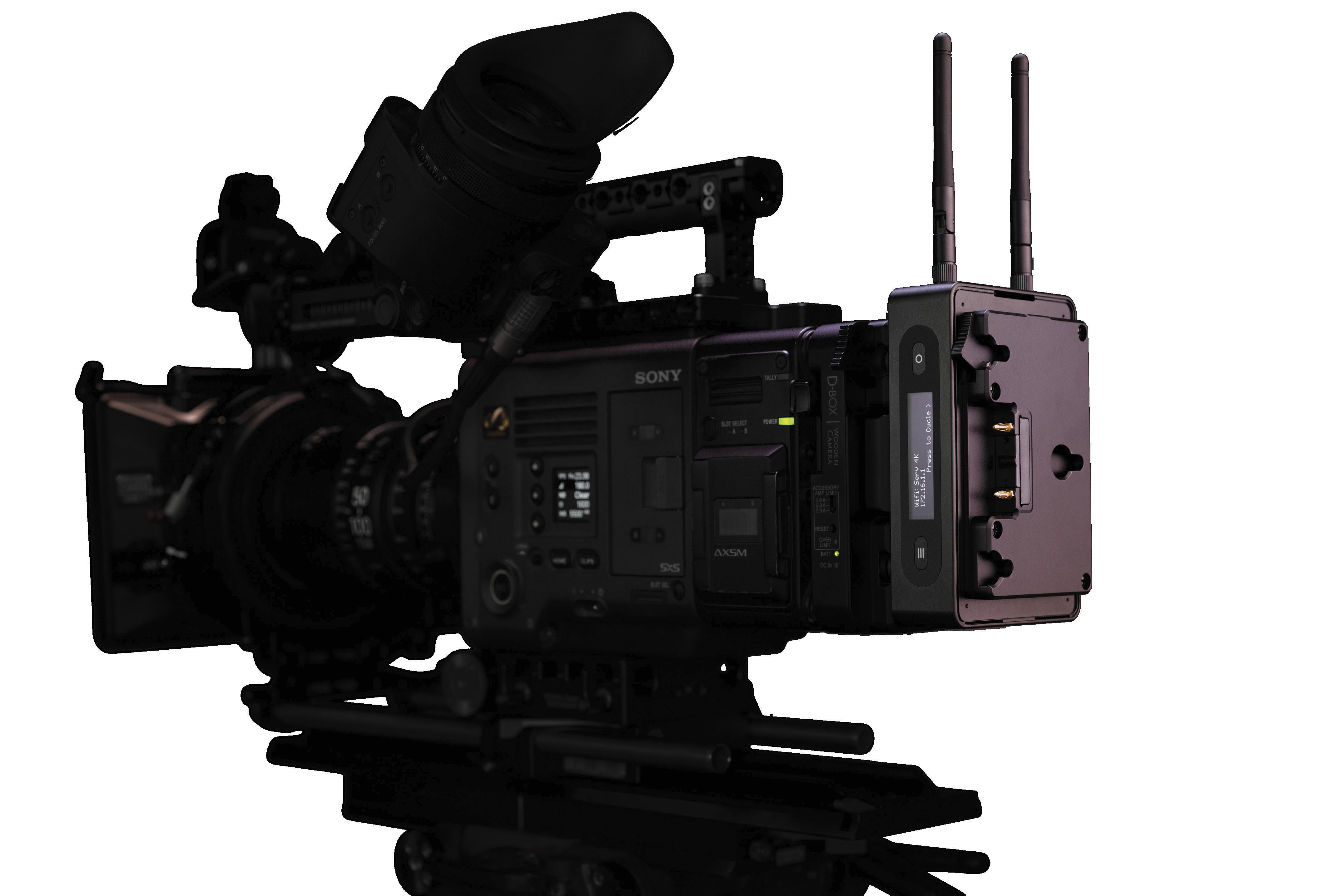



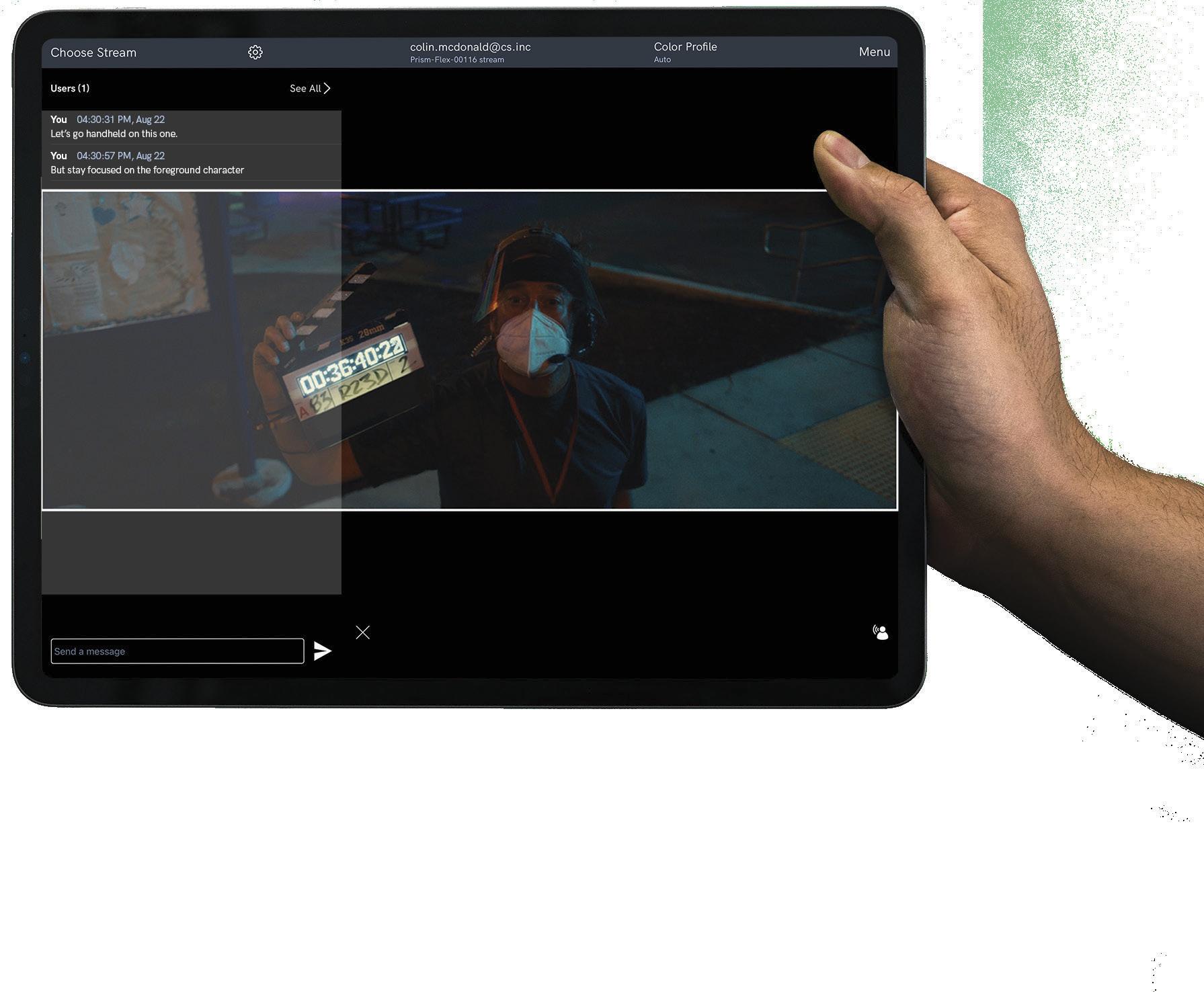





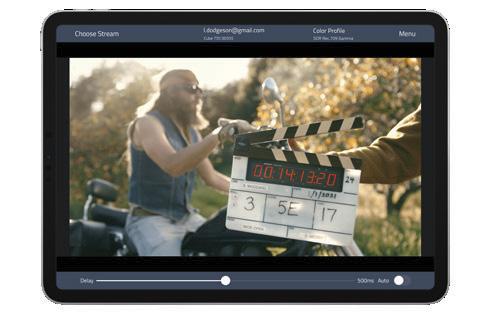




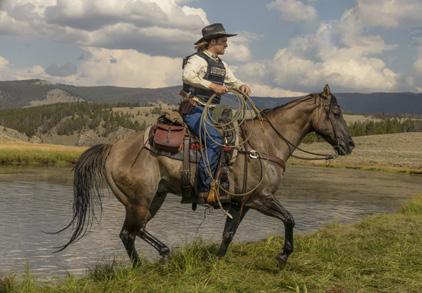
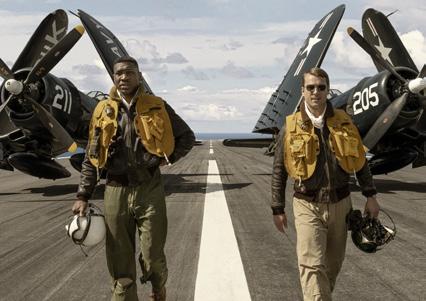
6 DECEMBER 2022 THE VOICE FEATURE 01 Barry Ackroyd, BSC, finds an intimate tempo to help visualize the life of one of the most beloved singers of all time. 32 GENERATION NEXT DEPARTMENTS gear guide ................ 14 first look ................ 22 zoom-in ................ 26 book review ................ 30 exposure ................ 32 production credits ................ 106 stop motion .............. 114 SPECIAL Innovation Nation ...... 84 December 2022 / Vol. 93 No. 10 contents Taylor Sheridan’s Yellowstone has brought the luster back to the TV western; and, as its longtime Guild camera team tells it, the only limits are the endless Montana skies. Erik Messerschmidt, ASC, goes “above” and “beyond” for Sony Pictures’ Korean War-era drama, Devotion FEATURE 02 FEATURE 03 52 68 BIG COUNTRY FLYBOYS

“A MASTERPIECE…gorgeously photographed ” FOR YOUR CONSIDERATION IN ALL CATEGORIES INCLUDING BEST PICTURE BEST CINEMATOGRAPHY Ben Davis , BSC
Baird B Steptoe
Silver Linings
After nearly three years of a global pandemic, we’re beginning to see the light at the end of the tunnel... although the impact that first began in 2020 has not left us yet. But there’s also another side to the pandemic, and a perspective that offers some silver linings.
One of those has been the wave of new product, mainly from streaming companies, affording many more opportunities for union film crews, including Local 600 members. By “opportunities,” I mean not only the increase in union labor but the chance for some of our DP members to shoot their own shows (or co-DP a series) for the first time. That includes members who are part of the next generation this December issue of ICG Magazine showcases. And, strange as it may sound, the first hint of this beneficial production boom came during the height of COVID – not long after this industry came together (in record time) to create workplace protocols that would ensure a safe return to work for everyone on a film or TV set.

Another positive (and one that also extends to Generation NEXT) has been the need for even more innovation in various union crafts. This Guild has seen its members respond to pandemic safety protocols by creating new remote technology and workflows (i.e., with camera operators and assistants being safely distanced from each other and talent) that may well become standard on union sets moving forward. For me, the most
tangible evidence of a pandemic silver lining has been the large number of new membership applications I have signed in just the few months since I’ve become ICG’s president. And this surge in those wanting to join this union is not limited to one region – it’s happening in New York, Los Angeles, Atlanta, and all over the Central Region (including right-to-work states).
This is no small thing. Even though new members’ initiation fees are often spread out over several years, it still represents a commitment on the part of a person (some of whom are still in their 20s and not long out of school) to want to join this union. All these new applications are most likely a response to the increased demand for product, as I noted above. But I feel they also represent an attitude and desire – created and fostered by the pandemic – to be a part of an organization whose mission is to guarantee workplace safety and health and pension benefits for their entire careers in this industry. Local 600 is a family, and when times are at their toughest, as they have been since this pandemic began, people want support from those they know will have their backs.
That’s why for this next generation of union workers, your future is now. And your brightest silver lining, especially in these past few years, has been this Guild.
Wishing everyone a safe and happy holiday season.
8 DECEMBER 2022 president's letter
photo by Quantrell D. Colbert
National President International Cinematographers Guild IATSE Local 600


Publisher
Teresa Muñoz
Executive Editor
David Geffner
Art Director Wes Driver
STAFF WRITER
Pauline Rogers
COMMUNICATIONS
COORDINATOR
Tyler Bourdeau
COPY EDITORS
Peter Bonilla Maureen Kingsley
CONTRIBUTORS
Eli Joshua Adé
Margot Lester Kevin Martin Derek Stettler
COMMUNICATIONS COMMITTEE
John Lindley, ASC, Co-Chair Chris Silano, Co-Chair
CIRCULATION OFFICE
7755 Sunset Boulevard Hollywood, CA 90046
Tel: (323) 876-0160 Fax: (323) 878-1180 Email: circulation@icgmagazine.com
ADVERTISING REPRESENTATIVES
WEST COAST & CANADA
Rombeau, Inc.
Sharon Rombeau
Tel: (818) 762 – 6020 Fax: (818) 760 – 0860 Email: sharonrombeau@gmail.com
EAST COAST, EUROPE, & ASIA
Alan Braden, Inc.
Alan Braden
Tel: (818) 850-9398
Email: alanbradenmedia@gmail.com
Instagram/Twitter/Facebook: @theicgmag
December 2022 vol. 93 no. 10
IATSE Local 600
NATIONAL PRESIDENT Baird B Steptoe
VICE PRESIDENT Chris Silano
1ST NATIONAL VICE PRESIDENT Deborah Lipman
2ND NATIONAL VICE PRESIDENT Mark H. Weingartner
NATIONAL SECRETARY-TREASURER Stephen Wong
NATIONAL ASSISTANT SECRETARY-TREASURER Patrick Quinn
NATIONAL SERGEANT-AT-ARMS Betsy Peoples
INTERIM NATIONAL EXECUTIVE DIRECTOR Chaim Kantor
ADVERTISING POLICY: Readers should not assume that any products or services advertised in International Cinematographers Guild Magazine are endorsed by the International Cinematog raphers Guild. Although the Editorial staff adheres to standard industry practices in requiring ad vertisers to be “truthful and forthright,” there has been no extensive screening process by either International Cinematographers Guild Magazine or the International Cinematographers Guild.
EDITORIAL POLICY: The International Cinematographers Guild neither implicitly nor explicitly endorses opinions or political statements expressed in International Cinematographers Guild Magazine. ICG Magazine considers unsolicited material via email only, provided all submissions are within current Contributor Guideline standards. All published material is subject to editing for length, style and content, with inclusion at the discretion of the Executive Editor and Art Director. Local 600, International Cinematographers Guild, retains all ancillary and expressed rights of content and photos published in ICG Magazine and icgmagazine.com, subject to any negotiated prior arrangement. ICG Magazine regrets that it cannot publish letters to the editor.
ICG (ISSN 1527-6007)
Ten issues published annually by The International Cinematographers Guild 7755 Sunset Boulevard, Hollywood, CA, 90046, U.S.A.
Periodical postage paid at Los Angeles, California.
POSTMASTER: Send address changes to ICG 7755 Sunset Boulevard Hollywood, California 90046
Copyright 2021, by Local 600, International Alliance of Theatrical Stage Employes, Moving Pic ture Technicians, Artists and Allied Crafts of the United States and Canada. Entered as Periodical matter, September 30, 1930, at the Post Office at Los Angeles, California, under the act of March 3, 1879. Subscriptions: $88.00 of each International Cinematographers Guild member’s annual dues is allocated for an annual subscription to International Cinematographers Guild Magazine. Non-members may purchase an annual subscription for $48.00 (U.S.), $82.00 (Foreign and Canada) surface mail and $117.00 air mail per year. Single Copy: $4.95
The International Cinematographers Guild Magazine has been published monthly since 1929. International Cinematographers Guild Magazine is a registered trademark.
www.icgmagazine.com www.icg600.com


FILM.NETFLIXAWARDS.COM BEST CINEMATOGRAPHY Darius Khondji, ASC, AFC CONSIDER A WORK OF DIZZYING VIRTUOSITY AND SURPRISE “A TRANSCENDENT MASTERPIECE.” “A work of exacting craftsmanship. ravishing visuals, shot on 65mm by the great cinematographer . ” darius khondji WINNER CAMERIMAGE FILM FESTIVAL BEST PICTURE FIPRESCI AWARD WINNER CAMERIMAGE FILM FESTIVAL SILVER FROG AWARD CINEMATOGRAPHY DARIUS KHONDJI
This labor union has so much talent that, occasionally, one of our best and brightest vaults to the stars without having been part of our annual Generation NEXT roundup of up-and-coming Guild members. (I’ll wait for the snickers and giggles.)
Seriously, though, it’s always a point of pride with our staff when, year in and year out, the filmmakers profiled in our Generation NEXT issue show up on Oscar/Emmy short-lists; on the call sheets of hit network, cable, and streaming series; and killing it on unscripted/ live events/awards shows for the ages (often covered in our November Unscripted Issue ).
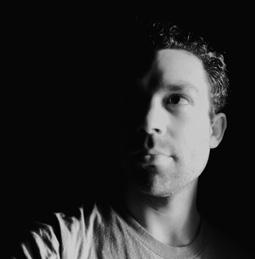

And this year will be no exception.
Our Generation NEXT class of ’22, themed around “Innovation Nation,” includes Olga Abramson (1st AC), Andy Bader (DIT), Sam McConville (DIT), Stephanie Mei-Ling (unit still photographer), Rosala Sanchez (unit publicist), Tari Segal (director of photography), Oren Soffer (director of photography), Adam Tsang (2nd AC), Zoe Van Brunt (operator) and Rina Yang (director of photography), filmmakers who are not only on the cusp of big things, but also embrace bettering their chosen crafts, as well as improving the lot of their fellow union members. It’s a remarkable, electrifying group, whose stories are, as always, insightfully brought to life by longtime ICG writer Margot Lester (page 84).
So, with apologies to this year’s amazing class, along with the dozens of ICG members highlighted over the 15 years of Generation NEXT , how the heck did we ever miss labeling Director of Photography Christina Voros as an up-and-coming filmmaker?
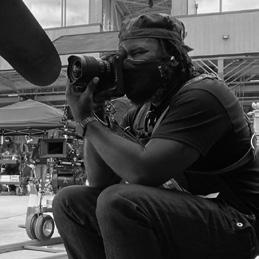
To be fair, Voros was profiled in our First Look department in the Interview Issue June/ July 2019, where she told ICG Staff Writer Pauline Rogers all about her less-than-linear career to becoming a 2022 primetime Emmy nominee for Paramount+’s 1883 , one of several spin-off shows in Taylor Sheridan’s Yellowstone universe. And, after reading the effusive quotes about Voros (in first-time ICG writer Derek Stettler’s feature story, page 52),
I went to rummaging back through this woman’s story just to confirm it’s as Generation NEXT-worthy as they get.
The daughter of Hungarian immigrants, Voros grew up in the restaurant business in Boston (bartending at the age of 16), moved to Hungary to train with its national fencing team, studied poetry and theater at Harvard, before being granted a Dean’s Fellowship at NYU’s Tisch School of the Arts in the graduate film and television program (where she later received a Master of Fine Arts in directing and cinematography). While non-traditional, Voros’ road has been paved by many prominent industry helpers, including Oscar-winning documentarian Carol Dysinger; pioneering Guild Director of Photography Sandi Sissel, ASC; Jay Anania; Spike Lee; James Franco; Danny Boyle; Stephen Goldblatt, ASC; Ben Richardson, ASC; and Ava DuVernay – the last of whom hired Voros as a director on Queen Sugar [ICG Magazine October 2022].

The Queen Sugar breakthrough is noteworthy, as Voros has (starting with Season 4) directed all the Yellowstone episodes she’s shot. For Season 5 (which premiered in November), Voros had Mark Parry as an alternating DP, while also directing half the season with Stephen Kay. (Just to ensure she’s not confused with a slacker, Voros will be directing all of the episodes she shoots on another upcoming Yellowstone spin-off series, Bass Reeves .) Oh, and did I forget to mention that Voros – whose cowboy husband, Jason Owen, has wrangled on Yellowstone – was honored in 2021 by The National Cowgirl Museum and Hall of Fame with the Patsy Montana Award, given to workers in the entertainment field who advance the cowgirl tradition? (Past winners include Emmylou Harris, Jessie the Cowgirl from Toy Story 2 , and Callie Khouri.)
So, can we all agree that a big mea culpa from ICG Magazine is due for all the wonderful young filmmakers (like Christina Voros) who have, somehow, skipped under our Generation NEXT radar over the last 15 years? As I said, there’s a ton of talent in this labor union (and only so many pages in our magazine). Which means someone like Christina Voros will have to make do with an Emmy nomination and five seasons of employment (she started in Season 1 as an operator) on a show that garnered more than 16 million viewers in its Season 5 premiere.
Oh well.
Geffner Executive Editor Email: david@icgmagazine.com
Derek Stettler
Big Country
“Growing up, I was always fascinated with how movies came to life and how ‘impossible’ shots were accomplished. Even now, I am just as amazed – though admittedly a bit less bewildered than I once was – at what it takes to bring stories to life through moving images. Magazines like this one proved invaluable in helping uncover the magic I saw on screen, and it is a pleasure and privilege to speak with talented filmmakers from the Guild and beyond, to reveal some of that magic to you in these prestigious pages.”
Eli Joshua Adé Flyboys, Stop Motion
“Early on I learned that a documentary/street photography style of shooting was my strength, and it has served me well as a unit still photographer. Being a fly on the wall allows me to document history, which is also extremely rewarding. I can remember being told when I joined the union: ‘Eli, you won’t work. Folks have more experience and connections you don’t have. I just hope you can make the best of it.’ So grateful for those words as I was pushed to prove him wrong. I didn’t feel malice, only motivation. I honestly feel I’m making the best of it.”
12 DECEMBER 2022
CONTRIBUTORS
David
ICG
MAGAZINE
Cover photo by Emily Aragones
Photo by Sara Terry
wide angle
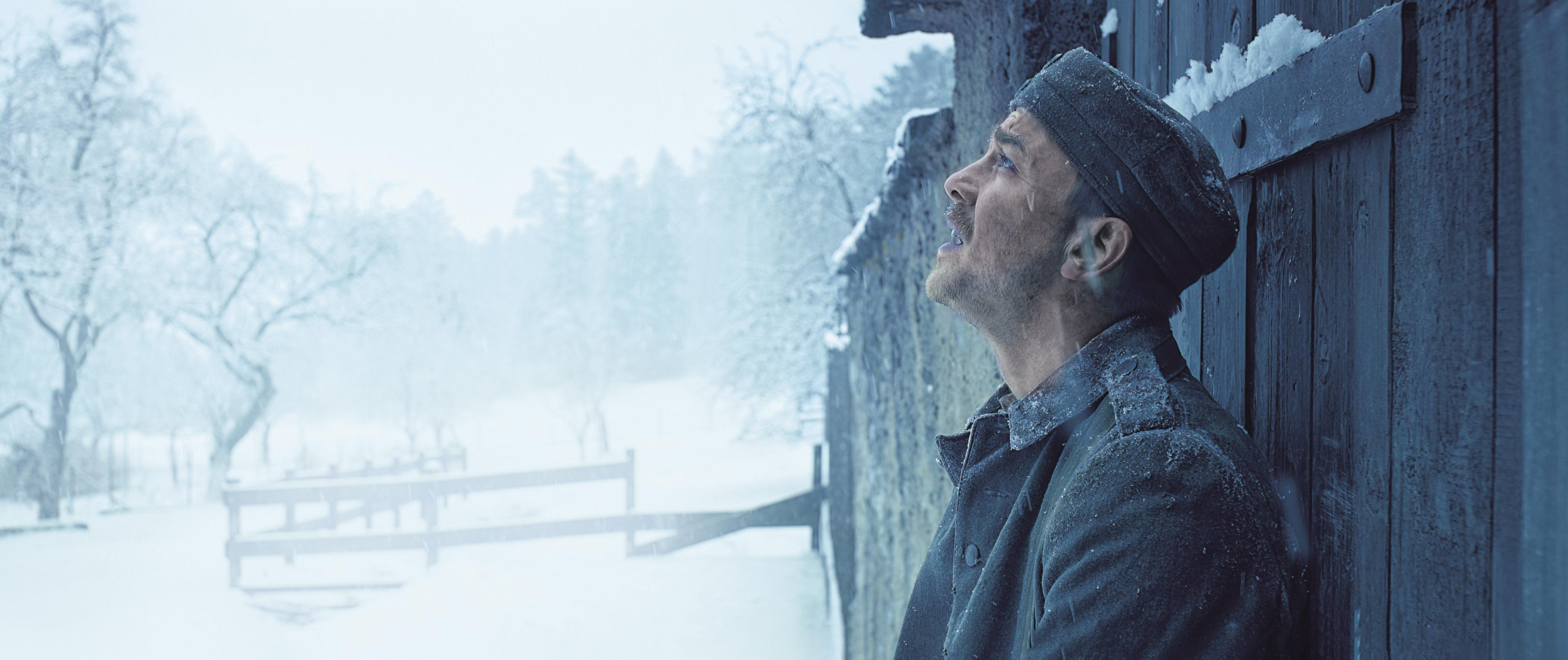


FILM.NETFLIXAWARDS.COM
GERMANY’S OFFICIAL SELECTION FOR INTERNATIONAL FEATURE FILM AT THE 95 TH ACADEMY AWARDS ® “A BIG-SCALE EPIC.” DEADLINE “ VISUALLY SPECTACULAR.” THEWRAP “A STAGGERING ACHIEVEMENT. James Friend’s stunning cinematography highlights the claustrophobia and unpredictability of life in World War I.” AWARDSWATCH FOR YOUR CONSIDERATION BEST CINEMATOGRAPHY JAMES FRIEND, ASC, BSC
DIRECTED BY EDWARD BERGER
Steadimate-RS
PRICING: $395+ WWW.TIFFEN.COM
Steadimate-RS enhances the capabilities of DJI’s handheld motorized gimbal by refining the camera stabilization and improving operator comfort, creating a movement similar to a traditional Steadicam sled. It converts the handheld motorized gimbal into a full-body-worn stabilizer by attaching a new mechanical gimbal and pan bearing to the Ronin, along with a weighted gimbal post extension with a fine-tuned balance adjustment. Adding a stabilizer arm greatly reduces the bouncing image effect on the z-axis while walking with handheld gimbals, allowing for more natural-looking manual camera-pan movements. It also helps to reduce operator fatigue (and extend operating time) by helping translate system weight across the torso and through the spring arm and vest. Steadimate-RS comes in several kits. The RS features a gimbal, base and balance stud; RS-A15 adds the A15 arm and aero vest; and the RS-A30 features the A30 arm and zephyr vest.
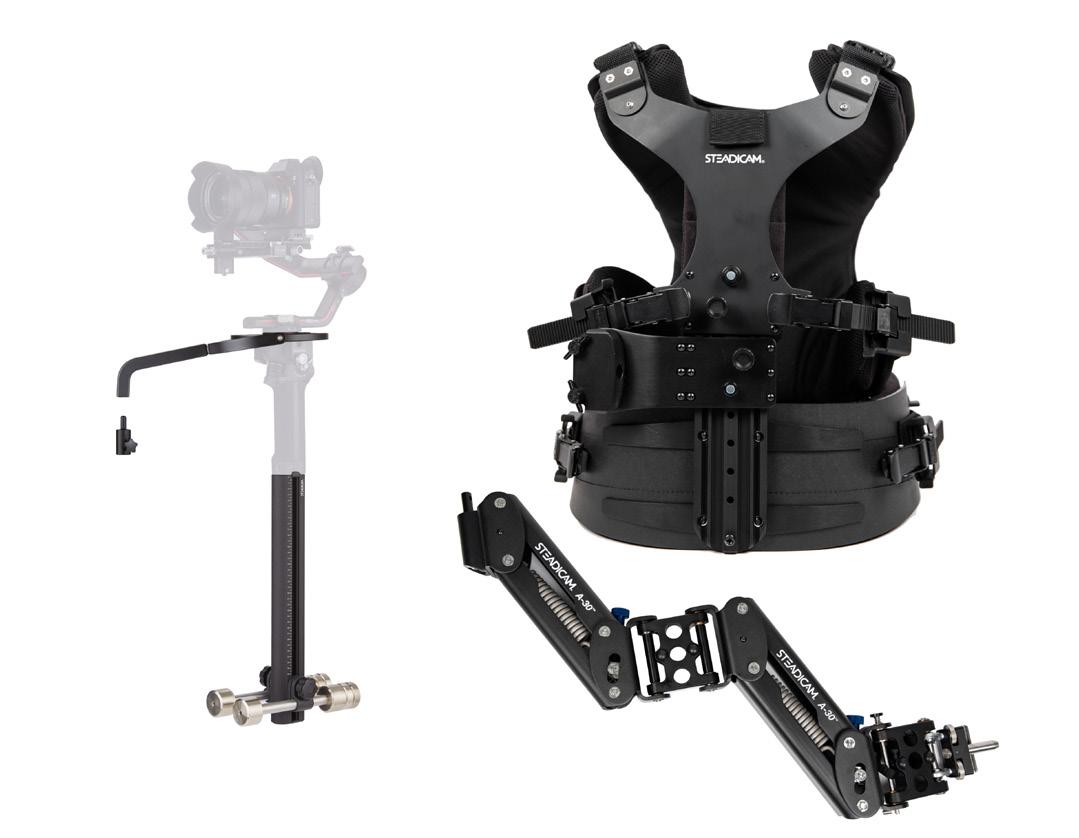
Auroris X System
PRICING: 25,990 (AURORIS X, TWO LITEDIMMER SPECTRUM AC600, TWO 28-PIN CABLES, TWO POWERCON CABLES) WWW.LITEGEAR.COM
From a repurposed warehouse to a large sound stage and everything in between, the Auroris X can be set up in less than 20 minutes. Just unfold the Auroris and attach it to your rigging with integrated straps, hoist it, and you are ready to go. This overhead light source combines high-quality color rendition and precision control, powered by Spectrum technology from LiteGear. It is built with 24 large-format pixels, creating a pixelmappable source that can cover a 100-square-foot area with just one fixture. The cinema-quality color output offers highquality white light from 2,000 to 11,000 K and a wide-gamut hue selection with full-spectrum desaturation. The color control is spread over 24 individual large-format pixels in the Auroris X model and 12 individual large-format pixels in the Auroris V.
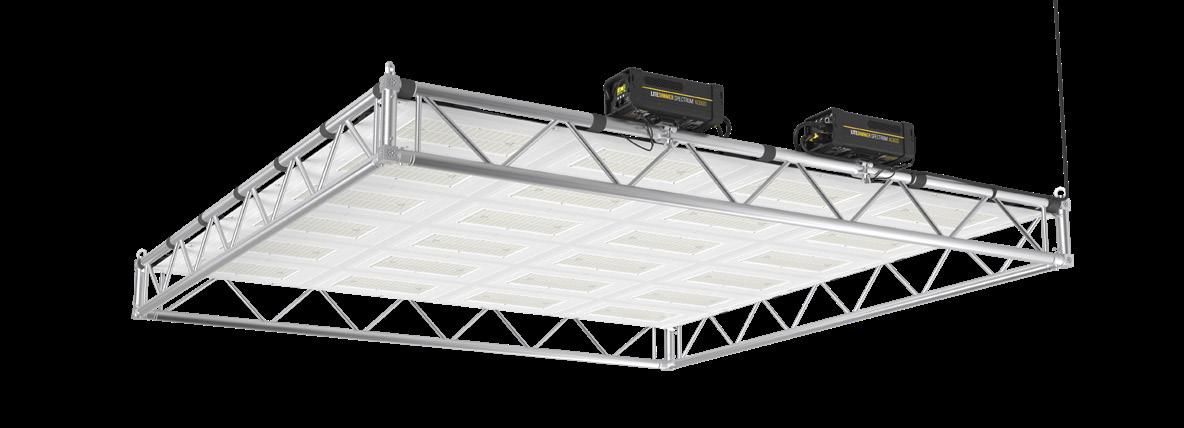
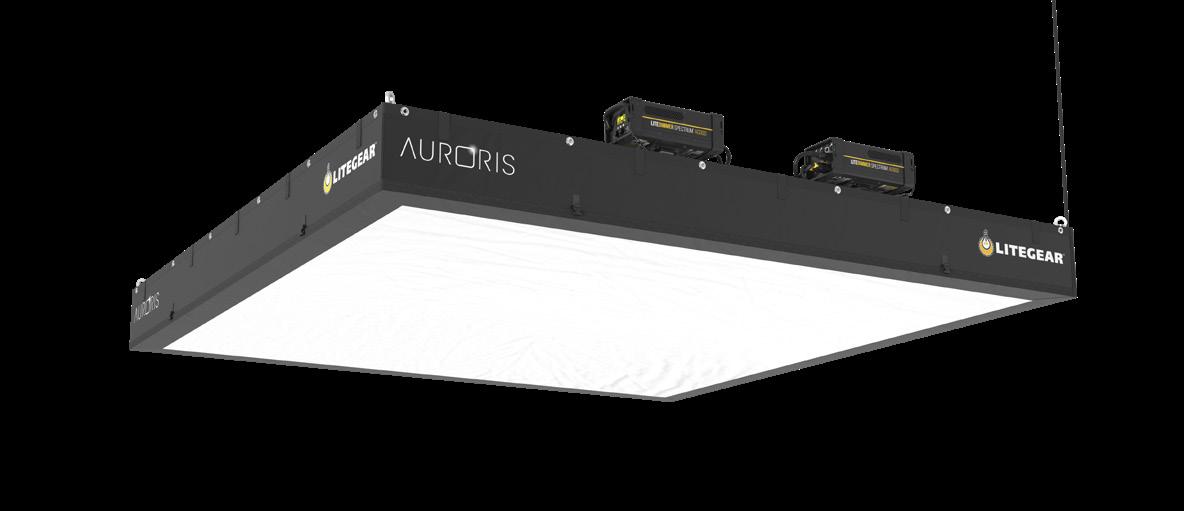
14 DECEMBER 2022 12.2022
GEAR GUIDE
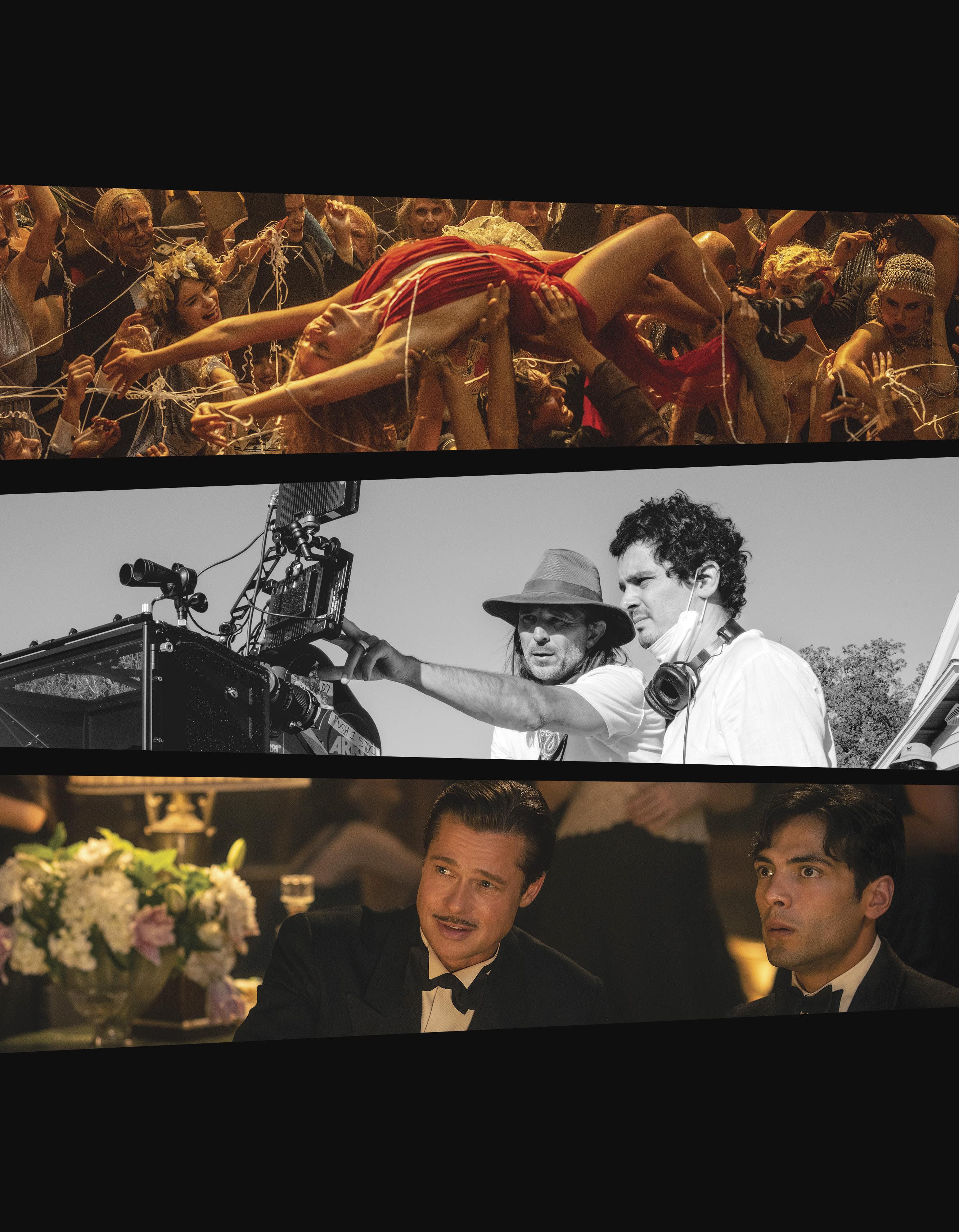
Shogun CONNECT
PRICING: $1,299
WWW.ATOMOS.COM
With a brighter 7-inch screen and multiple recording options, Shogun CONNECT brings a premium experience to HDR monitoring and RAW recording. This new system includes a range of features for new workflows and ATOMOS Cloud Studio, including a loop-through 12G SDI IN and OUT interface with an option to send a video signal to multiple devices; ATOMOS AirGlu wireless timecode to synchronize cameras, dedicated audio recorders, smart slates, logging applications or other compatible software; and NDI|HX, which enables customers to share the picture among multiple devices locally and select a specific device (or devices) to record the NDI-encoded source. With options for different power sources, plus WiFi 6, Gigabit Ethernet, Bluetooth LE and USB C – there is all-around connectivity for different production environments. Shogun CONNECT transforms professional cinema, mirrorless, and DSLR cameras into fully integrated devices that support a range of advanced cloud-based workflows.

Sony FX30

PRICING: $1,800 WWW.SONY.COM
“With Fall temperatures beginning to hit further north, I flew to Montana to film and explore Glacier National Park with the Sony FX30,” says cinematographer Will Walker. “The FX30 was so easy to pick up and immediately use because of how similar it is to the FX3 body and menu layout. On the trip, the camera stayed in Cine El mode, utilizing the dual base ISOs of 800 and 2500. Even while shooting in the early-morning hours, the sensor always had enough light.” The FX30 is the first Super 35 camera in the Cinema Line. It offers many professional features, including Log shooting modes and user-import LUT’s. It has a new back-illuminated 20.1-megapixel APS-C Exmor R CMOS sensor for high sensitivity and low noise and 14+ stops of latitude. The camera can also shoot at high frame rates, including 4 K at 120 fps and full HD at 240 fps. Both 16:9 recording modes can shoot at 10-bit 4:2:2, while the HDMI Type-A port outputs 4 K, 26-bit RAW for an external recorder.
16 DECEMBER 2022
12.2022 GEAR GUIDE

Atlas Mercury Series
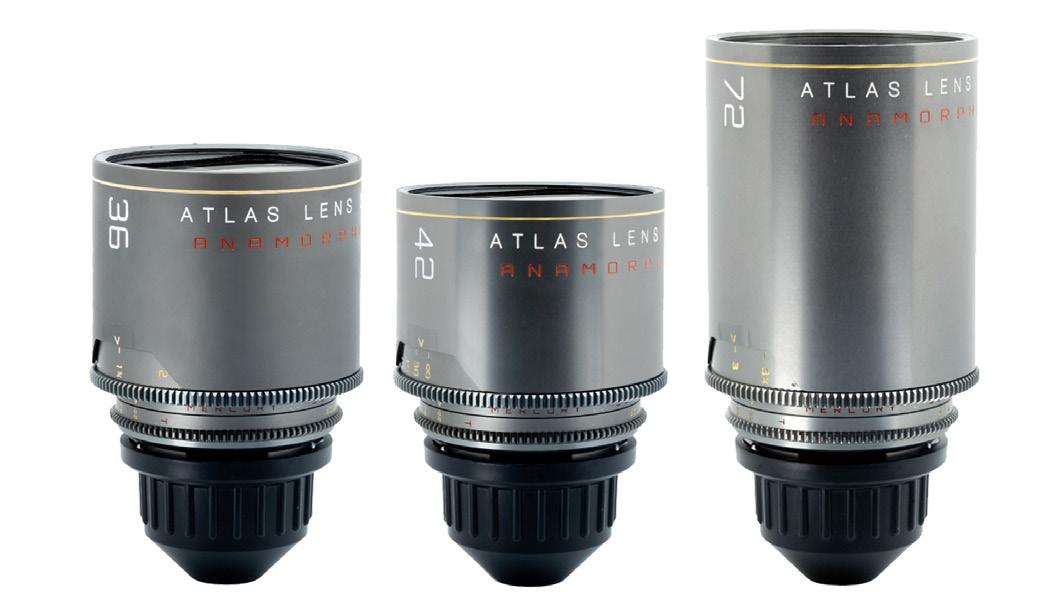
The Mercury series of lenses provides Guild cinematographers with vintage anamorphics, disproportionate perspective magnification, tasteful geometric distortion, warm flares and a classic oval bokeh in a compact and lightweight package – roughly the length of a soda can. The lenses are fast (T2.2 for 36/42/72 mm) and equally at home on S35 or full-frame film and digital. Their 1.5× squeeze diverges from the classic 2× Cinemascope anamorphic ratio, offering enhanced versatility for modern recording and delivery formats. On a 16:9 sensor, Mercury offers a 2.66:1 aspect, just like 2× lenses on 4:3 capture. 4:3 or 3:2 capture yields a 2:1 or 2:25:1 ratio. Director of Photography Daniel Vilar says that “with all the lenses on the market, and cameras going smaller and smaller each day, Atlas understood the importance of supporting cinematographers in a direction no one was covering. I used both the Orion and the Mercury for the first time together in an upcoming feature, and they combined well. The Mercury had the right size to be able to stay anamorphic on previously impossible rigs, drones and bikes.”
Rotolight Electronic SmartSoft Box

PRICING: $499 WWW.ROTOLIGHT.COM
Rotolight’s SmartSoft Box was developed to allow photographers and filmmakers to electronically adjust diffusion, focus and spread without the need for gels or additional modifiers. Like a LEE 216 on an adjustable dial, SmartSoft provides 1.5 stops of electronically variable diffusion thanks to Rotolight’s patented technology, providing the flexibility of a soft output and a harder light source all in one. For the first time, this technology has now been adapted into a removable electronic softbox for its recently launched AEOS 2 fixtures, which weigh just 1.5 kg (3 lb), making them the world’s thinnest, lightest 1×1 style lights on the market. “It simply allows me to create pictures with just one modifier that have never been possible before,” describes photographer Sam Nash. “It’s a game-changer in how I control light for my commercial photography. It saves so much time.” (iOS and Android app version 1.0 will be available in 2023.)
18 DECEMBER 2022
SINGLE LENS $5,995
SET $17,985
12.2022 GEAR GUIDE
PRICING:
3-LENS
WWW.ATLASLENSCO.COM



universalpicturesawards.com © 2022 UNIVERSAL STUDIOS AND STORYTELLER DISTRIBUTION CO., LLC
WRITTEN
“THE TEAM AROUND SPIELBERG IS PERFECT, INCLUDING MASTERS LIKE CINEMATOGRAPHER JANUSZ KAMINSKI, DOING TOP-TIER, IMPECCABLE WORK.” FOR YOUR CONSIDERATION IN ALL CATEGORIES INCLUDING BEST CINEMATOGRAPHY JANUSZ KAMINSKI BEST PICTURE Produced By KRISTIE MACOSKO KRIEGER p.g.a. STEVEN SPIELBERG p.g.a . TONY KUSHNER p.g.a.
DIRECTED BY STEVEN SPIELBERG
BY STEVEN SPIELBERG & TONY KUSHNER
Prolycht Orion 675 FS
PRICING: $3,495 FOR HEAD - $3,795 WITH HARD CASE WWW.PROLYCHT.COM
The Orion 675 FS color LED spotlight has, with its optional Fresnel, similar output to a 1.2-K HMI or 2-K tungsten Fresnel. Red, green, blue, amber, cyan and lime (RGBACL) LEDs emit strong, accurate colors across the spectrum. Adjusting from 1,800 to 20,000 K, it is ideal for anything from warm candlelight to full daylight to moonlight. There are hundreds of color filter emulations plus programmable effects built-in. As a single-box unit, it is designed to be easy to rig and transport. The 675 has a Bowens mount with a positive-locking mechanism to stop wiggling when using heavier modifiers. The Fresnel lens increases the light’s focus ability while remaining incredibly compact. It can be controlled via CRMX, DMX, Art-Net or Bluetooth. Multiple lights can even be adjusted from the Chromalink app on a phone or tablet. One neat trick is that the Orion can track the color and intensity of points selected either live from a phone’s camera or from recorded files played back through the app – useful for process driving shots.

Lilliput HT7S
PRICING: $339 WWW.LILLIPUT.COM
Lilliput has upped the ante with the new HT7S 7-in. Ultra High 2000-nits brightness touch on-camera control monitor. If you are shooting outdoors and battling the sun, this just-announced monitor is the perfect solution. Its 1920-by-1200-pixel resolution has a full 2000-nits ultra-high brightness. Color calibration supports the PROLITE ColourSpace CMS provided by Light Illusion. Details in HDR are lighter and darker and displayed more clearly. The display supports ST 2084 300/ST 2084 1000/ST 2084 10000/HLG and features a built-in 3D LUT with 17 default logs and six user logs. Touch control is easy and convenient, with quick wake-up commands on the menu screen to quickly adjust camera assist functions, display and settings.
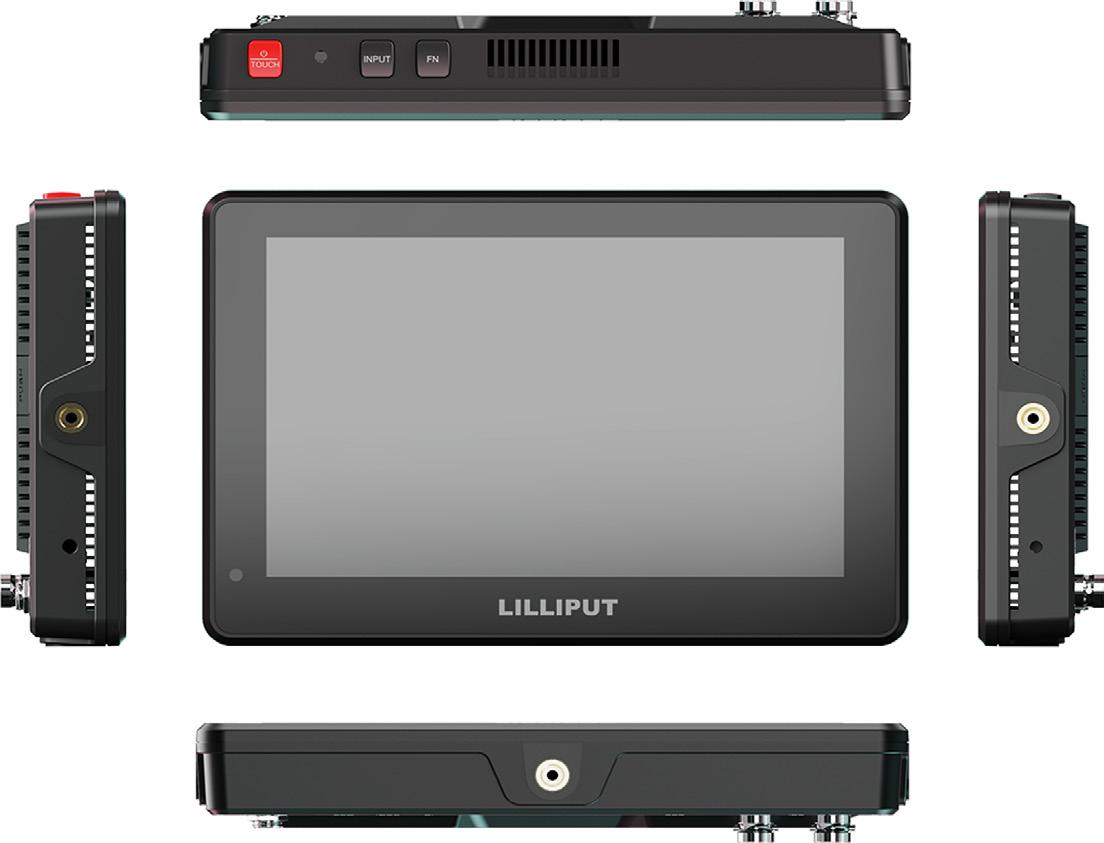
20 DECEMBER 2022 12.2022
GEAR GUIDE
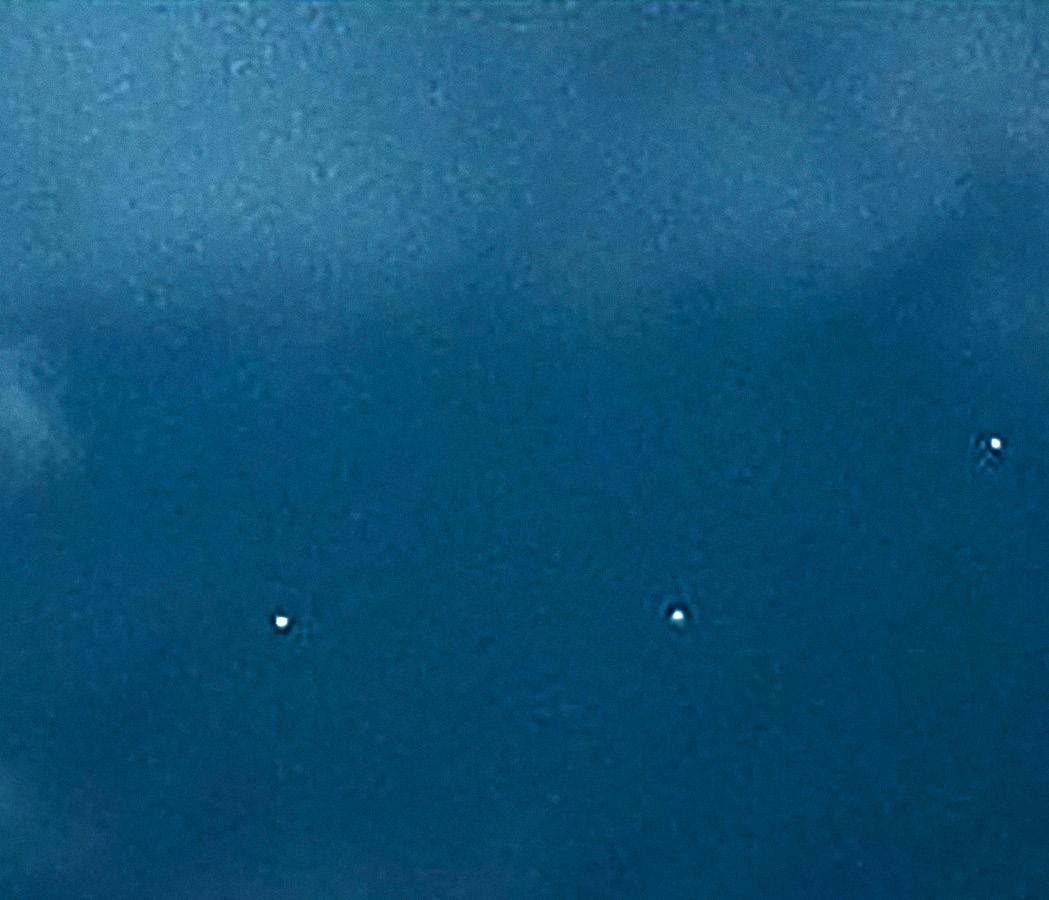




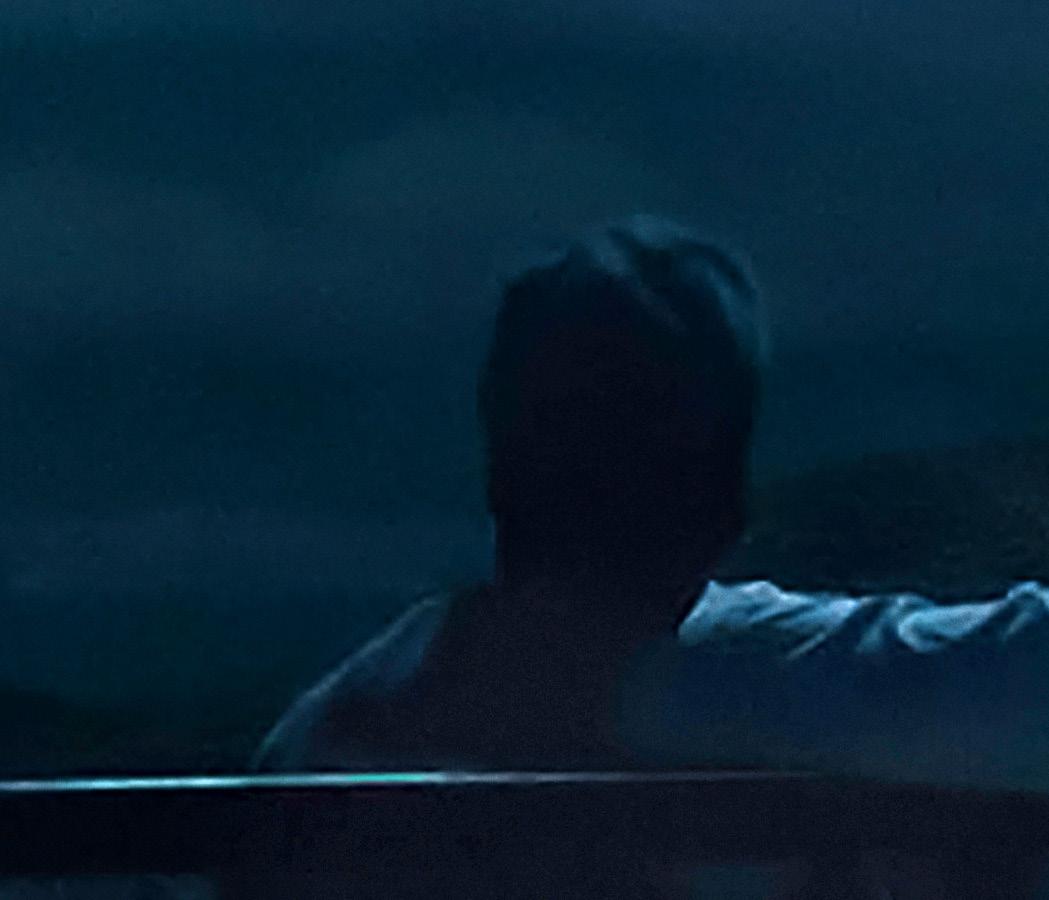

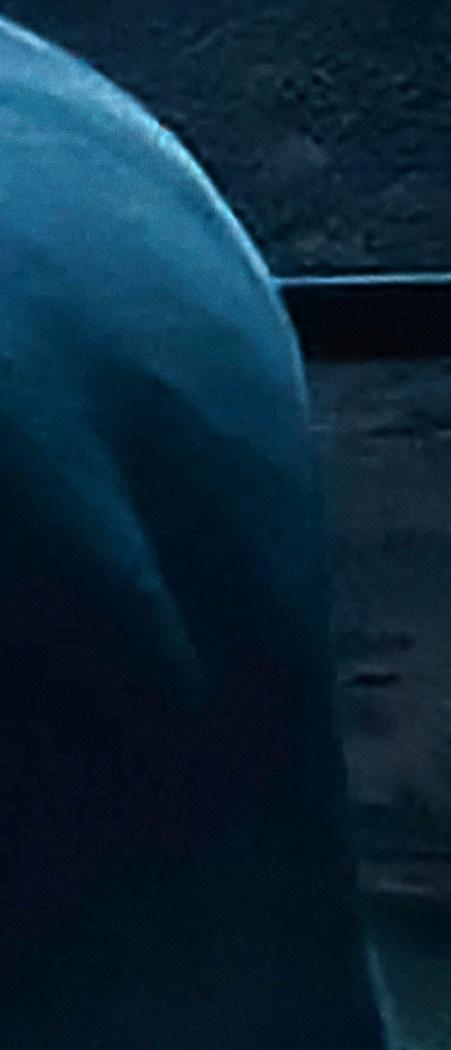
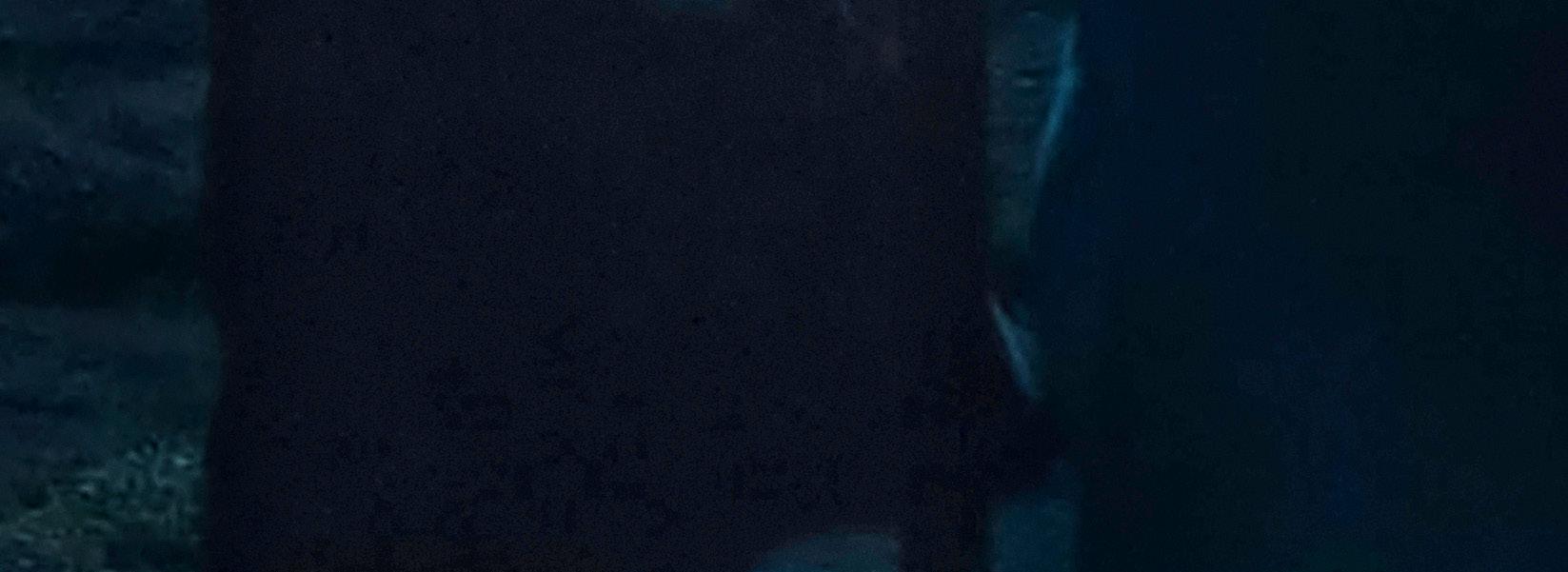
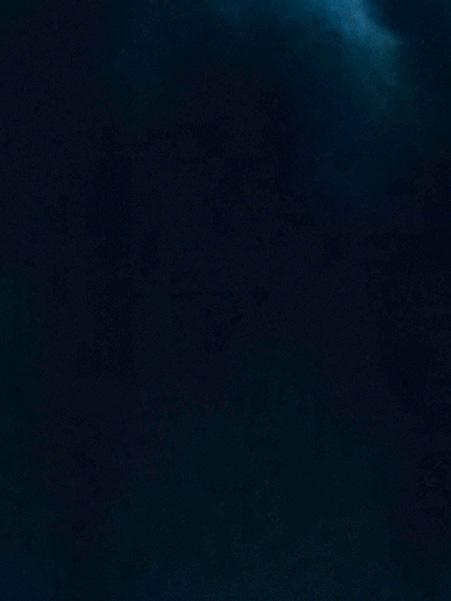


DECEMBER 2022 © 2021 UNIVERSAL STUDIOS universalpicturesawards.com For Your Consideration BEST CINEMATOGRAPHY HOYTE VAN HOYTEMA ASC , FSF, NSC AN INTERGALACTIC SCALE THAT MAKES EVEN THE FILM’S MOST FAMILIAR TROPES FEEL BRACINGLY NEW...” “HOYTE VAN HOYTEMA’S 65MM COMPOSITIONS LEND THE CARNAGE
There was never anything more that young Julia Swain wanted than to be around films – and their ability to immerse people in new and exciting worlds. As such, every job she had growing up was connected to filmmaking, including working at a movie theater during high school so she could watch films for free, operating news cameras as a teenager and then diving into narrative and commercial work while attending film school.
Shooting was what she wanted to do – made a little harder during a very rough patch of poor health in college. “I had to do months of chemotherapy, and the ability to keep shooting small projects when I was feeling well enough kept me pushing forward toward my goal of being a professional DP,” she shares. “I wanted to be the best visual storyteller
Julia Swain
BY PAULINE ROGERS PHOTO TOBIN YELLAND
and leader I could be, to have a camera in my hands and be lighting as much as possible. The more I shot, the more directors and producers I met, the more I was able to be selective about the work I chose.”
Attending UCLA for her MFA helped position her to shoot at higher levels. She learned from such cinematographers as Mandy Walker, ASC, ACS; Bradford Young, ASC; and Rodrigo Prieto, ASC, AMC. “It was such an informative experience to watch other cinematographers lead sets,” she reflects. “Artists I admired did not just come and talk to us –they lit the soundstages with us and made us work. Unless you’re on a crew, you don’t get to see other cinematographers on set, so it was invaluable to watch the best of the best shoot and delegate to their teams.” Swain was also able to win fellowships and
scholarships that connected her to more mentors, including the first ASC Vision Scholarship.
Her early focus in filmmaking began with short films, which have been integral to finding her voice as a storyteller. “[Shooting shorts] allowed me to dive into feature films by having a range of genres to present and the ability to create consistent looks and tell poignant stories,” she explains. “I shot a short with my dear friend Ryan Jow for a feature concept, Windfall , where I learned how much I love to play with color and how it elevates emotion. Mary Meet Grace , for Faryl Amadeus, taught me how to create visual tension and speak to subtext. I’m all about diving into subtext: what’s not written on the script’s page and how we as filmmakers allude to it visually.”

22 DECEMBER 2022 FIRST LOOK
22 DECEMBER 2022
12.2022

universalpicturesawards.com © 2022 UNIVERSAL STUDIOS
I
K “ ” “A SENSITIVE, EMOTIONALLY ASTUTE FILM.” – THE GUARDIAN Natasha Braier ASC, ADF BEST CINEMATOGRAPHY FOR YOUR CONSIDERATION IN ALL CATEGORIES INCLUDING
–
B
A S E D O N T H E N E W Y O R K T I M E S P U L I T Z E R P R I Z E W I
N N I N G
N V E S T I G A T I O N A N D B E S T S E L L I N G B O O
joins the pantheon of great journalism movies of the past, from All the President’s Men, to Broadcast News, to Spotlight.
HUFFINGTON POST
Swain’s first breakout began with the SXSW festival hit Lucky , which, she says, allowed her to make a statement with the kinds of movies she wanted to make. “It had something to say about the experience of women that had not been tackled in this way before,” Swain details. “It was not only visual but ultimately very surreal. We shot it in 15 days, and to give it the most sophisticated look we could, we had to have a solid plan and move quickly. I remember my key grip, Brendan Riel, made a rig on the roof of the main house location that could swing from the front yard to the backyard. Suddenly, our moonlight for the night exteriors on either side of the house was up much faster. It was innovations like that across all my departments that allowed us to push what we were able to accomplish in such little time.”
The film also allowed Swain and Director Natasha Kermani to develop a process together. “We learned that even though we pull references initially to get our points across to the studio, we aren’t ones to copy technique. Instead, we find a lot of what we do organically and keep it rooted in the script without constantly referencing other work. Lucky was also

our first feature together and when you have to move that fast on a film, everyone is looking to the director and DP to get the job done and make their days. We were in it together, pushing each other creatively and problem solving when things would change on us. A deep trust was formed.”
Swain joined Local 600 in 2021, allowing her to transition into more Union work. It was important to get to this milestone, she says, and to be able to do bigger shows and films in the future. This year alone she shot three movies that will all be released in 2023: The Wrath of Becky (BoulderLight Pictures), Scrambled (Megamix/Lionsgate), and The Mattachine Family (Huckleberry Media). “All of them had incredible filmmakers behind them and great scripts with meaningful things to say,” Swain says proudly. “I was able to get heavily invested, which I think is imperative when taking on a movie for months at a time. I’m excited for audiences to experience them.”
Currently, Swain is preparing to work with Kermani on an adaptation of Abraham’s Boys , by Joe Hill, for which she says, “We are hoping to push the boundaries of period photography and lighting
by using colors and techniques that are not as common for a story set in the early 1900s.”
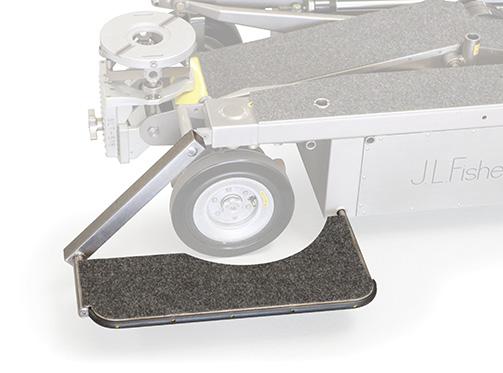




Swain offers solid counsel for those who contemplate filmmaking yet often eschew shorts, indies, and festivals. “These will remain important going forward,” she says adamantly. “Shorts and smaller features are more accessible to cinematographers starting out and help shape their portfolios. You can try out techniques on smaller projects that you may not have done otherwise, and find what you’re drawn to in terms of visual language. They connect you to filmmakers with similar tastes and goals. Ultimately, you open doors for yourself by working hard on things you can invest in fully.
“Festivals, too, connect us and allow us to experience films from all over the world that we might not have been exposed to otherwise,” she concludes. “They give indies a platform and bring filmmakers together. Most importantly, the short films and indie features you choose should be projects you truly care about. You are showing the world the type of work you want to do and your voice as a storyteller.”
24 DECEMBER 2022 24 DECEMBER 2022
FIRST LOOK 12.2022

Louie Northern
“I’m an FAA-licensed pilot, a SAG-AFTRA stunt driver, and a Local 600 director of photography,” shares Louie Northern. “I’ve got one of the most unbelievably fun jobs out there, and I sometimes can’t believe I get paid to do it.”
Born in Washington State but raised in Georgia, the family’s favorite pastime was the movies. “I will always remember how much fun movies infused into our lives and my childhood, from the theaters on special occasions to Blockbuster visits every Friday night,” Northern reflects. “But I never even contemplated the idea of making [films] until my first interaction with drone technology many years later.”
That happened well into his tenth year as a landscape architect, designing resorts all over the world. In 2012, Northern purchased his first drone for fun, and “it began an adventure of a lifetime,” he smiles. In 2013, he traded aerial footage with a neighboring resort in Mexico for a free stay. “It was the beginning of an idea,” he describes. “I returned to Atlanta to make the move from hobby flying to a brand-new profession as a drone pilot.”
It was at this time the FAA revealed its regulatory pathway for operating drones. “I’ll never forget the moment I learned that to operate commercially, I would need to earn my manned-aircraft pilot’s

license,” Northern shares. “Before I finished reading that sentence, I had already decided I would attend flight school.”
In 2015, Northern earned his pilot’s license and launched his drone company, Ascend Aerials. Since that auspicious day, he’s filmed all manner of projects, all over the world – from the Brazilian Amazon to the Maldives, from the Super Bowl Halftime Show to landmark feature films, from groundbreaking news to blockbuster streaming shows.
“While flying in the Brazilian Amazon for Disney’s The Jungle Cruise,” he remembers, “we flew dozens
26 DECEMBER 2022 ZOOM-IN 26 DECEMBER 2022
PHOTOS COURTESY OF LOUIE NORTHERN

27 DECEMBER 2022 12.2022 27 DECEMBER 2022
of flights from a small boat while operating on a moving river. This meant that the boat’s landing pad was never stationary, and safely landing was a real concern. My team worked diligently to efficiently execute each mission with precision so that we could return to camp each evening with success. It was the challenge of a lifetime and one of the more rewarding experiences we’ve been privileged to have.”
Another challenging flight was during Super Bowl 52’s Halftime Show. “We were flying in frigid temperatures in Minneapolis,” he continues, “and, to protect battery health, we needed to fix hand warmers to the flight batteries. This was one of the most grueling flight environments we’ve encountered, but we could safely accomplish our shots.”
The work kept coming in, and Northern’s team, all Local 600 members, continued to grow their specialty camera offerings. Recently, Ascend provided a custom-designed 360-degree camera array for the upcoming Sony Feature Madame Web “Our Blackjack 360 is a groundbreaking new VFX tool that we are excited to continue offering at the industry’s apex,” Northern exclaims.
Of course, when it comes to aerial capture, safety is always paramount. Northern says he typically carries “a slightly larger team than others, which translates to a more efficient workflow and the reduction of role-splitting,” he explains. “Recently,
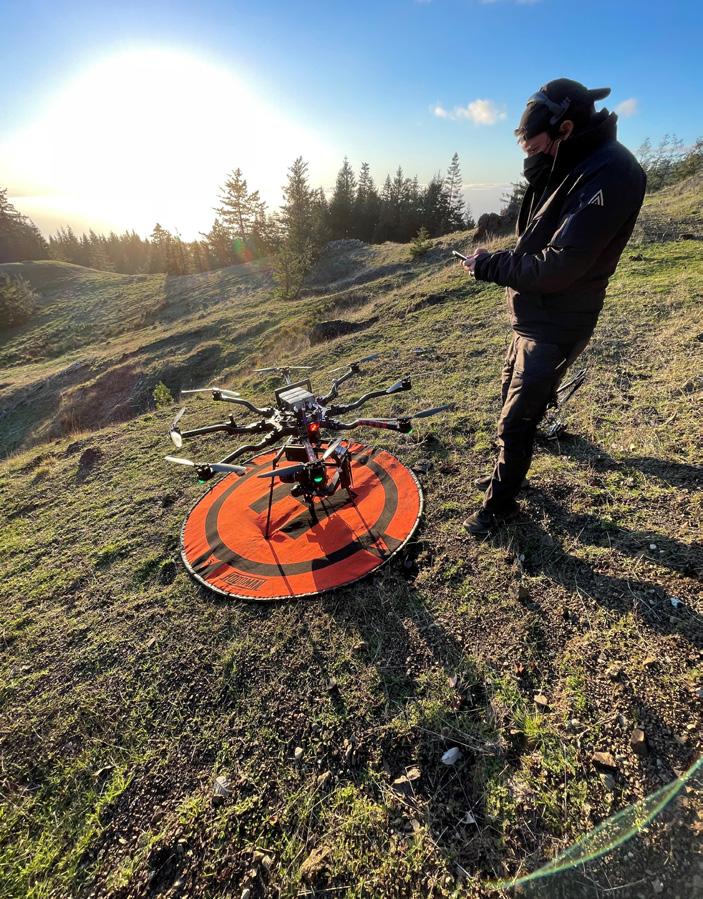
we provided the arm car and the drone on the same day for the Netflix episodic A Man in Full. To safely accomplish this, we always make sure that we carry enough players to deliver.”

Northern and his team have resisted the trend of illegally operating without proper FAA authorizations. “From the beginning,” he explains, “we’ve needed to petition the FAA for special authorizations in order to ensure our operations do not endanger the safety of our important cast and crew,” he adds. “One of the things that we have been observing is that multiple companies have been illegally operating drones over 55 pounds. Currently, it is not possible to legally operate any drones over 55 pounds within 100 feet of anyone on set, and we are seeing many companies do exactly that,” Northern explains. “When aerial vendors join a production, they [not the production] provide the insurance coverage that protects everyone on that set; if the drone company knowingly operates outside the legal limitations, then they void the coverage they are providing. It is irresponsible to the extreme, and it exposes our cast and crew to unnecessary and preventable safety risks.” (Ascend is always working with Local 600 and industry safety reps to educate AD’s and on-site safety supervisors on how to disallow and avoid this dangerous activity.)
“There are so many things that need to be looked out for,” Northern continues. “It’s imperative
that the pilot speak during the ‘safety minute’ to explain what the cast and crew should expect during their operations. This way, there are no surprises, which goes a long way to maintaining safety. What’s also important is to make sure that the drone shot really should be a drone shot,” he adds. “If the objective for the shot is more easily –and safely – accomplished with the arm car, then we are also able to offer that tool.”
Northern says that as drone capture moves forward in the industry, he hopes that “drone technology and FAA regulations will meet to allow the safe confluence of ideation and image making. For now, it’s only up to each vendor to adhere to legal standards – and, like our people at Ascend, continue to maintain set safety wherever possible.”
What other tools does Northern plan to add in the future? “Ascend is pursuing new and innovative VFX 360 array solutions,” he explains. “At the moment, we are proud to provide the most advanced stabilized VFX 360 arrays that technology allows. We are also eager to pursue additional innovations for the arm car and other tracking vehicles.”
“As a child, I could never have imagined that I would one day be a stunt driver and drone pilot in the film industry,” he concludes. “But I’m super excited to try and inspire my own children’s imaginations in this wonderfully creative part of our industry.”
28 DECEMBER 2022 ZOOM-IN 12.2022 28 DECEMBER 2022

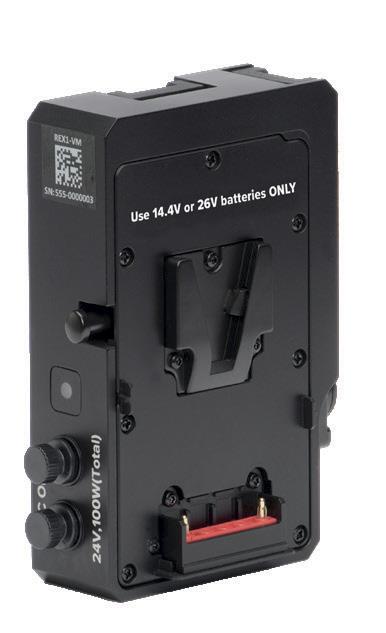

29 DECEMBER 2022 V-Mount RuntimeExtender Connect camera batteries to Astera lights RUNTIME www.astera-led.com/runtimeextender RuntimeExtender is a battery plate to connect standard camera batteries to many Astera lights. This enables you to extend your production and work without worries when shooting films or lighting events. The RuntimeExtender supports a wide range of Astera products. One RuntimeExtender can power: • 2 x Titan Tube • 2 x Helios Tube • 1 x Hyperion Tube • 4 x HydraPanel • 4 x PixelBrick RuntimeExtender Gold-Mount
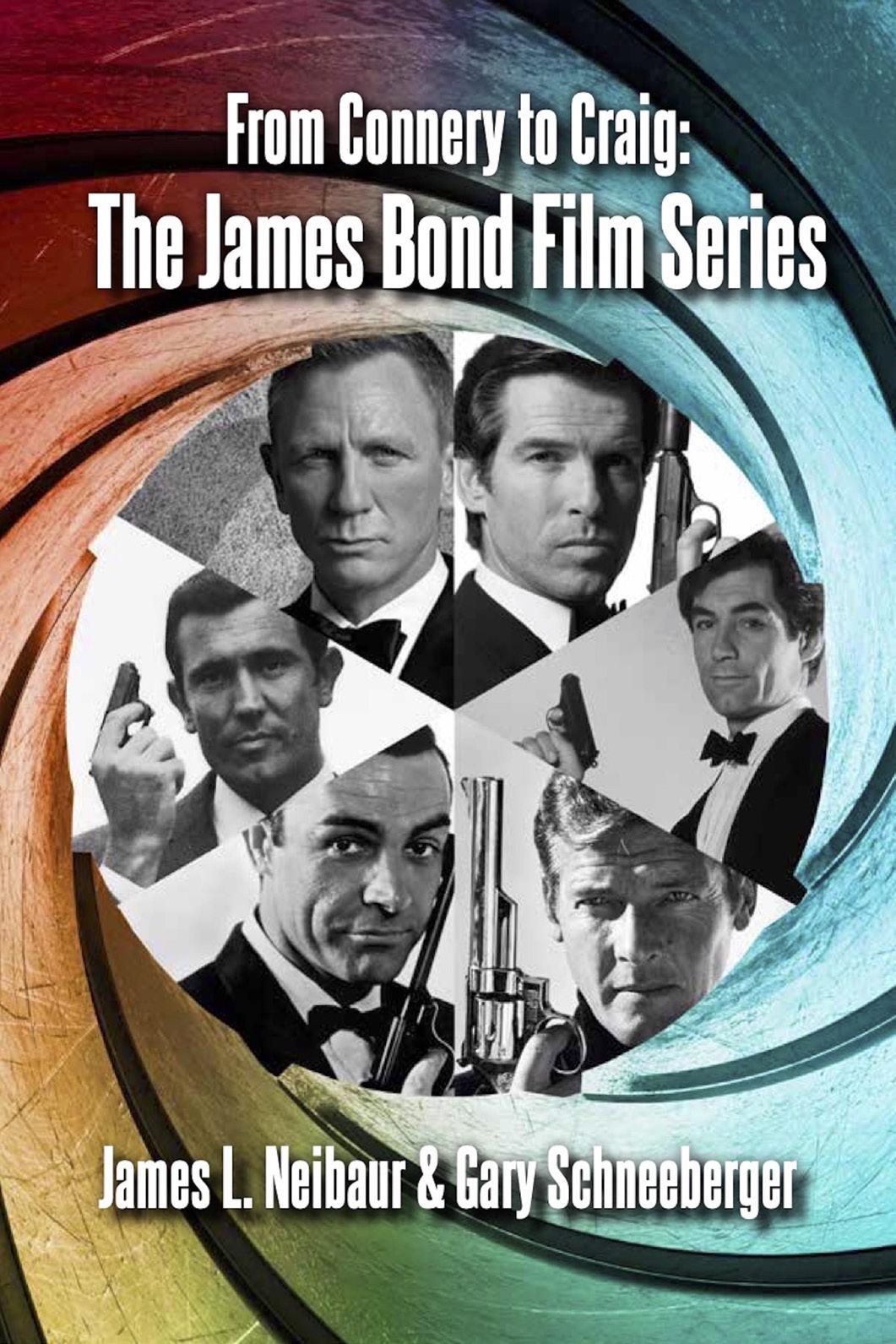
30 DECEMBER 2022 BOOK REVIEW 30 DECEMBER 2022
From Connery to Craig: The James Bond Film Series
REVIEWED BY PAULINE ROGERS
Full disclosure. I’m not a James Bond fan. I’m more of a Broadway and black-and-white era type of viewer. It’s something I’ve kept hidden, as one of my former neighbors has produced most of the Bond films (and getting his horses out during a fire or navigating the canyons during a flood or earthquake felt like more essential topics of conversation than my film preferences).
All of that is to say I did not come into this book predisposed to love it simply for the franchise’s legendary status in the movie world. But when I started digging into From Connery to Craig: The James Bond Film Series by James L. Neibaur and Gary Schneeberger, I quickly realized there are many layers to the Bond phenomenon. To start, the authors know their stuff – Neibaur is a film historian and educator with more than 30 published books and hundreds of articles, and Schneeberger is a former journalist and president of the publicrelations firm ROAR.
Each chapter (organized by film) begins with mundane details – the production team, the actors and the release date – that quickly turn fascinating. The release dates in particular help place each Bond film in its time and era. We meet each Bond actor and dive deeper into the culture of the time – how that social era shaped Bond, and even more, how Bond influenced the culture.
“I think the success of Bond is an enigma,” says one of the series’ most prolific directors, John Glenn, in the forward. “Fleming’s original character served up a man attractive to women and admired by men. Practical in many ways, a killer if necessary, and a patriot with a love of Queen and country. He embodied a little of us, our aspirations, and most importantly, tongue-in-cheek humor.”
Glenn credits director Terence Young with shaping the foundations of Bond. “Terence was a real-life Bond in some ways and an English gentleman with impeccable taste who served in the Second World War with distinction,” Glenn continues.
“He guided Sean Connery in his first outing as Bond, bringing a mixture of raw masculinity and charm.”
The writers tell us that “everything the world would need to know about James Bond, it learned the moment it met him.” Their proof is a quote by Ian Fleming in the second paragraph of Casino Royale. “James Bond suddenly knew he was tired,” Fleming wrote. “He always knew when his body or his mind had had enough, and he always acted on the knowledge. That helped him to avoid staleness and the sensual bluntness that breeds mistakes.”
Fleming once wrote that he wanted James Bond to be “an extremely dull, uninteresting man to whom
things happened. I wanted him to be the blunt instrument.”
Well, guess what? That didn’t happen.
James Bond shucked the Fleming persona and took on his own life. Six different actors brought six different approaches to the character, which could be roughly thumbnailed as Sean Connery: above it all, George Lazenby: equipped for it all, Roger Moore: bemused by it all, Timothy Dalton: resigned to it all, Pierce Brosnan: seen it all, Daniel Craig: causes it all.
As the authors write: “[Bond] was not just played by different leading men, he was set into and against a society that experienced, during his run, the height of the Cold War, the Civil Rights movement, man’s race to the moon, the Baby Boomer generation coming of age, the sexual revolution, women’s liberation, Wall Street unease and abuse, the fall of Communism (at least in the Soviet Union), a growing political and ideological divide in the U.S., increasing globalization and breakthroughs in technology that were unimaginable when Fleming and the filmmakers who brought his creation to theaters were trying to imagine them. And 007 remained relevant to them all.”
in Goldfinger , which is thought to be the most important Bond movie in terms of its impact on the series and the spy/action movie genre. And, as the writers note, it appears regularly on lists of the best British films.
U.K. culture and its influences on the Bond universe may never have been more pronounced than in License to Kill. As the writers note: “A tug of war had existed since the 1962 christening of the franchise between the Bond films influencing the world in which they were released and shaping the on-screen adventures of 007.”
We also learn that sixty years – twenty-five films, six actors and more than $7 billion in box office receipts (before adjusting for inflation) – may be the tip of the iceberg. We learn how the industry struggled with the first Bond – and the pressure that was on Daniel Craig and the team behind the 25th Bond film No Time to Die, which was thought to be the last.
This is about the point in the book where I really started to learn how much more there is to this series than (my words) “a sexy know-it-all.” This book spurs readers to go see a Bond movie and understand the subtle commentary of each era at play, as well as to take a prime peek into how Hollywood works. The book contains thoughts about how audiences have responded over the years, where the critics fit in, and the thought process behind each character, including how the “Bond Girls” responded to their parts. The writers interviewed several Bond Girls about how they and their characters were viewed and approached throughout the years.
Here are a few of the things I discovered that may tease readers to take a deeper dive: President John F. Kennedy was a huge fan of Fleming, and was, in a way, a significant force in driving Hollywood to make the series into a movie. From Russia with Love was the first James Bond film to utilize ideas that would become common to the series. The Bond helicopter and the secret weapon gadgetry are all enhanced, supported and implemented through each actor change. Television’s response to the Bond series, preFrom Russia with Love , was the hit The Man from U.N.C.L.E.
That dry Bond humor fans love was established
The title of the book is prophetic, at least to producer Michael G. Wilson (stepson of Eon Productions co-founder Cubby Broccoli and a producer on half of the films), who is “bullish about the future.” When asked by Fred Topel in 2012 (for the release of Skyfall ) if 007 will always return, Wilson responded, “I’m sure he will, because he’s a fictitious character [that’s] part of our culture. He’s like Batman or Superman. These characters are perennials.”
Director Glenn comes off a bit more circumspect. “We live in a different age of Bond,” he is quoted as saying. “Computer technology has changed everything. There aren’t any more gritty stories. No one is fooled by computer-generated images. Original action is hard to find.”
Personally, I wouldn’t bet on either side. It’s a fickle time in the world and the industry, and hard to predict where Agent 007 fits in. But for this Bond doubter (or maybe just an ignorer), one thing is certain after reading this book: Fleming’s “blunt instrument” has had a real impact on pop culture over the years, and vice-versa; and the franchise has filled a thirst for entertainment, that – at times – was just what the world needed.
Bearmanormedia.com ISBN 979-8-88771-004-4
31 DECEMBER 2022 12.2022 31 DECEMBER 2022
Amazon Paperback: $32.00 Hardcover: $46.76 Barnes and Noble Paperback: $32.00 Hardcover: $42.00

32 DECEMBER 2022 EXPOSURE 32 DECEMBER 2022
Kasi Lemmons
DIRECTOR | I WANNA DANCE WITH SOMEBODY
 BY PAULINE ROGERS
PHOTO BY EMILY ARAGONES / TRISTAR PICTURES
BY PAULINE ROGERS
PHOTO BY EMILY ARAGONES / TRISTAR PICTURES
“Own it. No matter what – bring your A-game,” counsels actor, director, producer, librettist, mentor, and educator Kasi Lemmons. Born in St. Louis, Lemmons caught the acting bug at age nine, appearing in her first professional job for a local TV studio in Boston. She studied at Strasberg and Circle in the Square, where she remembers “we were doing the same scenes over and over. Friends asked me to write something fresh.”
33 DECEMBER 2022 12.2022
33 DECEMBER 2022
The urge to write her material, and seeing D.A. Pennebaker editing his documentaries in her building, ultimately resulted in a short film, Dr. Hugo , which starred Vondie Curtis-Hall and Michael Beach. That film was a proof of concept for her first feature screenplay, Eve’s Bayou , which endured many rounds of rejections – even with Samuel Jackson attached. Then one day, Lemmons recalls, “I got a call from London. Mark Amin – who was the driving force behind Trimark Films – and his team had hired Ray Price to find them a “small gem” and were interested in Eve’s Bayou
The “green light” meeting was a bit of a bump (pun intended) as Lemmons walked into the hotel room nine months pregnant. Eve’s Bayou (1997) not only won a slew of awards, including a 1998 Indie Spirit honor, but it also kicked off a partnership with a young female cinematographer named Amy Vincent (now vice president of the ASC) that would pay creative dividends for years to come. ( Eve’s Bayou was recently selected for preservation in the National Film Registry of the Library of Congress.)
Lemmon’s second film, The Caveman’s Valentine opened the 2002 Sundance Film Festival, while Talk to Me (2007) won Outstanding Directing in a Motion Picture at the NAACP Image Awards. Other feathers in Lemmons’ glorious career cap include producing a stunning tribute to Sidney Poitier for the 74th Academy Awards; adapting Langston Hughes’ musical Black Nativity (2013) to the screen; and directing her last feature film, Harriet [ICGmagazine.com November 2019], which won Best Director from the Black Film Critics Circle.
Lemmons also adapted Charles Blow’s Fire Shut Up in My Bones into an opera libretto for Terence Blanchard, which opened The Metropolitan Opera’s 2021-2022 season. Talking with ICG Staff Writer Pauline Rogers, Lemmons shared the motto she teaches her students at NYU’s Tisch School for the Arts and AFI, as well as other schools: “They are looking for you, and you have to walk into every room as if that were true!”
ICG Magazine: What was going on in your mind before the TIFF [Toronto International Film Festival] premiere and theatrical release of Eve’s Bayou? The film helped kick-start your career
and that of a young DP named Amy Vincent. Kasi Lemmons: It was our first movie. Both of ours. Two women, neither of whom had done a feature. We had done a short together. The producer insisted he wanted to keep us together. We came up with a cut that was a bit contentious and tested weirdly – something, I think, we predicted from the beginning. The ending was strange. We honestly didn’t know how the movie would play until it hit the festival circuit. We still didn’t know if anyone would want to see the movie. The response was fifty-fifty. We weren’t sure something like this would translate from an African American movie. Honestly, we were humbled by the response.
Why did you select Amy to shoot that film? Did you have a shared background from when you were acting? We selected her carefully for the short ( Dr. Hugo ) because that was going to be a
proof of concept for the movie. I was looking for someone with emotional storytelling. When I got to look at AFI students, I liked the emotions she brought to Death in Venice, California
What was the world of indie filmmaking like when Eve’s Bayou came out relative to how it is now?
The indie world is always vibrant. But there are so many festivals and a smaller number of theaters. The big concern was whether things were going to play – and that’s changed a lot with streamers. Now there are a lot of places where you can show your project; yet, there is a distribution problem. For Black movies, there is a lot of excitement around certain movies, but it was heard that “Black movies don’t sell.” Like it’s hard to make a family drama with a great African American cast and be successful. We relied on our partners and Trimark to choose what was best. Do we do Toronto? Telluride was a great call. At that time, Eve’s Bayou was “hot off the presses.” Just completed. There was an incredible audience response. I know I was in the back row crying at the reaction. I remember walking out and running into Roger Ebert, and he winked at me and gave me a thumbs up. His review was so beautiful.
Outside of Julie Dash ( Daughters of the Dust , 1991), Eve’s Bayou blazed new ground for Black female directors. Was there a sense of your impact on other young Black women filmmakers, and did that find its way into your work on set in any way? I tried not to overthink it. The responsibility was so great. I am a nut over history. I like to stay true to the story and characters. I felt a responsibility as a Black woman who had just had a child. I wanted to show that a woman with a child could be a director. Not just a black woman with a baby in tow. I wanted people to know, and I’ve talked a lot about it in interviews.
You followed up Eve’s Bayou with The Caveman’s Valentine, adapted by George Dawes Green from his novel. Amy Vincent shot that film as well. How much did that experience differ from Eve’s Bayou? It wasn’t as successful. I thought I would never direct again after Eve’s! Anything I had to say – was said. Then I got the script. It was a beautiful mess. I loved the character and found myself involved. I wanted to keep doing this. Amy and I collaborated. We worked
34 DECEMBER 2022 EXPOSURE
“They are looking for you, and you have to walk into every room as if that were true!”
DECEMBER 2022
from character. Yes, there was a lot of anxiety. We were determined to be prepared. We storyboarded and talked about shots – the look and feel. It was a major expanded prep.
As an actress, you worked with some New York directing icons – Spike Lee and Jonathan Demme. Were you already thinking about a directing career on their sets, and what did you learn from them? It happened simultaneously. Film school. Acting in Silence of the Lambs . Spike was a big inspiration with You Gotta Have it . He was speaking to middle-class Black life. It was a seismic shift. I noted that Spike could be powerful without raising his voice, and it could be spooky. With Jonathan, I loved talking to him. “How can you be so calm?” He would say, “I wasn’t always that way!” So, I thought – if I ever directed, I wanted this focused presence, excited and calm. So, like Spike – you don’t have to raise your voice to be scary. And like Jonathan – be present.
You went six years after Caveman’s Valentine before making another feature ( Talk to Me ) and then another six before shooting a musical you adapted from a Langston Hughes play! It would be another six years before Harriet . In between, you did a lot of episodic TV. Was the gap because of the nature of making indie films? Or was it waiting for the right material? What was directing for television like? The differences [between feature and TV] are great. Episodic directing is quicker. I’m used to thinking about character and perspective. TV, there is a short time to edit. I’m used to five months. TV, you aren’t the boss. Features you are the head. That said, serving someone else’s vision was humbling. I learned how to move fast. Manage time. And work with a lot of different DP’s.
After working with Amy on two films, you worked with three different DP’s: Stéphane Fontaine [AFC], Tas Michos [ASC] and Oscarwinner John Toll [ASC]. Talk about your goals when hiring a DP. Episodic taught me a lot. With Amy, we did things stately and planned. For Talk to Me , it was about making the music fluid. Get to the heart. Make emotional and fluid camera movements – that was Stéphane. A lot of handheld camera. With Tas on Black Nativity , we were looking for emotion and feeling, but the moves were more traditional, even old-fashioned. We often stayed with one character and worked with that character a lot.
You just worked with Barry Ackroyd on I Wanna Dance with Somebody , who came up through BBC, shooting documentaries. Barry’s approach to camera has always been very
personal and humane. Why was he the right one for this project? I love Barry and his work on Captain Phillips . You never know where he is. Every time you go into dailies, he presents little gifts that I don’t remember seeing on the monitor. He would get little pieces of behavior. “Wow, that’s beautiful.” It’s kind of like Christmas. He captures beauty from different angles. One of my favorite things he did was intentionally finding her hands; they were very expressive and reflected a lot of what Whitney was thinking on her journey. There is movement and feeling – and it adds tension and immediacy. It’s my favorite way of shooting.
All of your stories have had strong Black characters – many strong Black females at the center. You told my editor that you viewed Harriet Tubman as a “superhero” on par with any Marvel character. Why haven’t there been more of those in cinema? There is a lack of real-life characters. Harriet has been heroic. The amount and extent of her bravery and commitment were unparalleled. This was about seeking freedom and helping others. We got the terror of escape in the night in the winter, saw her hide in cold streams in the woods, animals and slave catchers all around her. And miraculously, freedom. Then she goes back to get the family. It took a long time to get a Black woman in a period drama – a title character who actually lived.
Going back to Eve’s Bayou for a moment. Amy did a fabulous job of bringing out the Louisiana locations. How important is a sense of place, and how does cinematography factor as a storyteller? We looked at many different states before settling in Louisiana. We knew the location was going to be a character. Secretive and spooky. It was perfect for the hidden truth of a family. So location and character are the same principles. Whitney also had a family drama. A lot has to do with performance. A lot has to do with the impact of the crowd she was playing to. Impact on the country and the world. The scope of her power as a performer and that impact. It was also important to take the audience back to that certain period of time.
Critics have said Whitney Houston had the best natural singing voice of almost any modern vocalist. How do you, as a director, go beyond the traditional biopic when portraying an icon of her stature? I was trying to make each song a story and give each performance a distinct visual language and editorial style to reflect both what’s going on in Whitney’s mind and her life, but also to capture her growing influence. In her first song, “Greatest Love,” she’s singing to a small room of
people, but in some ways, she’s singing to one person, Clive Davis. Then as her popularity and influence grow beyond her family and closest friends, the scope and storytelling expand to reflect what’s happening in her life, but also her love story with the audience, which is what the movie is about in many ways. At other times the camera stays very close to her when she’s performing, in a very subjective way, to capture her interior life in that moment.
What was it like to do an opera? Writing a libretto was always on my bucket list. I’ve been a fan of opera since my parents took me to see Aida as a child. All the same, when my longtime collaborator, Terence Blanchard, reached out to me about writing a libretto for his second opera, I was initially hesitant. I was afraid I would let him down. In film, you are guiding the audience through the experience visually and editorially, making them see details, almost like reading a good novel. In an opera, the music and lyrics are taking you through the story and emotions. There’s pageantry – sometimes, many people are onstage together. What I learned is that in opera, anything can sing. Trees can sing. A house can sing. Once I embraced that, I even personified Destiny as a character who could sing. That was very freeing and allowed for such creativity. Also, there’s the wonderful possibility to have two characters singing in two different scenes on different parts of the stage, distinct from each other and yet in conversation with each other. That idea becomes more cinematic. And because I’m a filmmaker, I also wrote a film aspect into the libretto, which was incorporated and expanded on brilliantly by the director, James Robinson.
The people behind the lens are so important to achieving the look, feel, and emotions of any story. What was your takeaway of the Guild camera crew? I absolutely loved working with Barry Ackroyd and the camera team on this movie. Barry has a very distinct handheld style, as you mentioned, and an instinct for capturing the unexpected. His camerawork has so much life.
[A-Camera Operator] Tom [Fitzgerald] and [B-Camera/Steadicam Operator] Joel [San Juan] are both visual poets in their own ways. It was a joy to experience. Joel would capture details or unexpected angles and reflections. Tom would do that as well, but he’s also fantastic at sweeping crane moves and reflections. In the musical numbers, we could make the audience feel like they were in the crowd, experiencing Whitney in concert while also capturing her exhilaration onstage. The camera is a live participant in dramatic scenes, which adds tension and immediacy. With Barry and his team, I was able to capture the intimate and the epic, often at the same time, which was exactly what I wanted.
35 DECEMBER 2022 12.2022
35 DECEMBER 2022

FEATURE

1
THE voice
Barry Ackroyd, BSC, finds an intimate tempo to help visualize the life of one of the most beloved singers of all time.
by pauline rogers Photos by Emily Aragones / TriStar Pictures
Framegrabs Courtesy of sony/tristar pictures
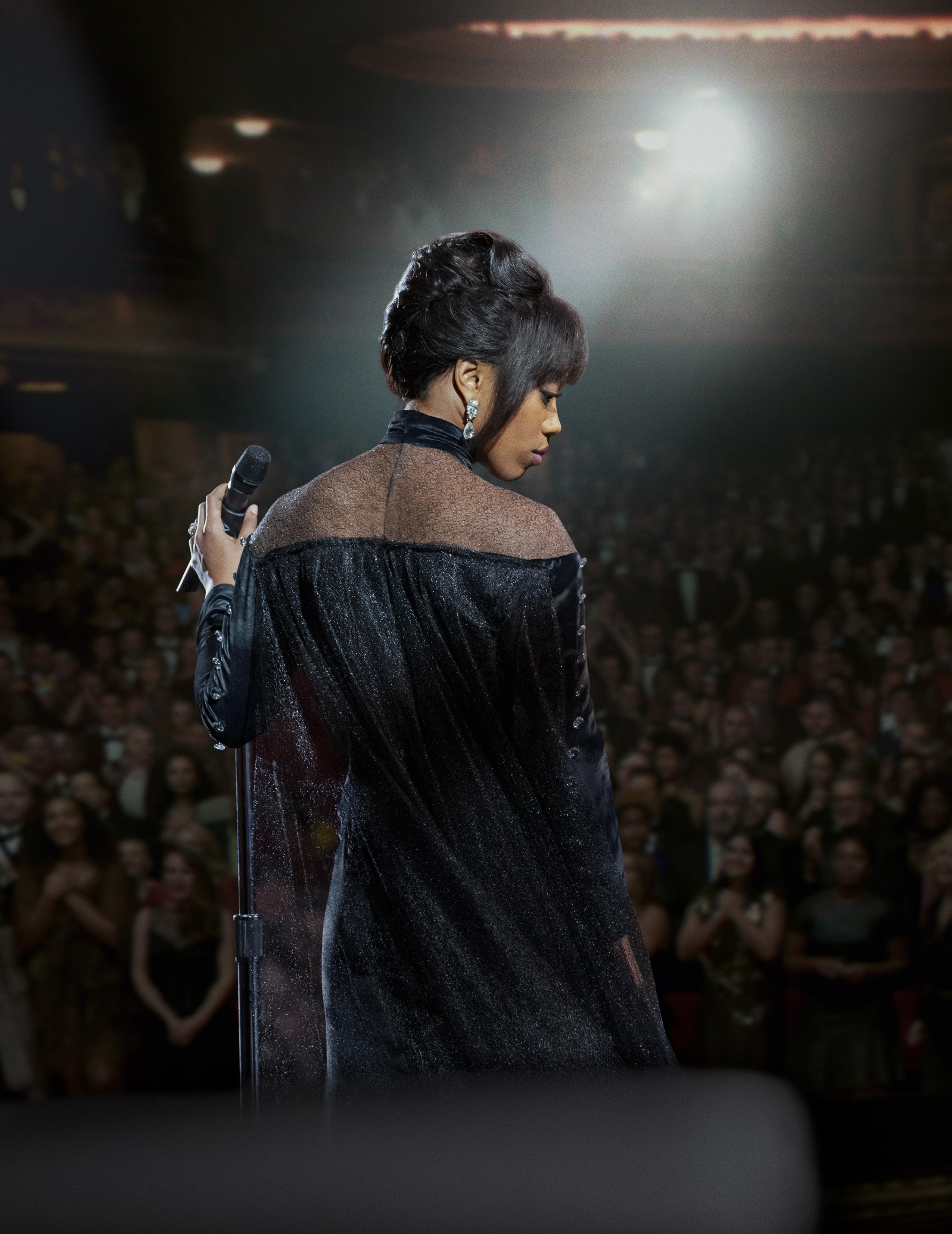
While making a film in South Africa with Charlize Theron and Javier Bardem, Director Sean Penn and Oscar-nominee Barry Ackroyd, BSC [ICG Magazine August 2017], found themselves out in a field discussing life and filmmaking. Penn concluded that Ackroyd was like the drummer in a band. At first, Ackroyd thought it was a “cheek” – cinematographers were much more than that. “But he was right, of course,” Ackroyd came to understand. “We are not the lead singer, the lead guitar or even the bass guitar. What Sean was saying is we are the ones who hold the whole thing together. We know how to keep the story on track, drive things on, hold things together and make sure that the gig finishes on time, while also giving the space for all those elements that make up the film.”
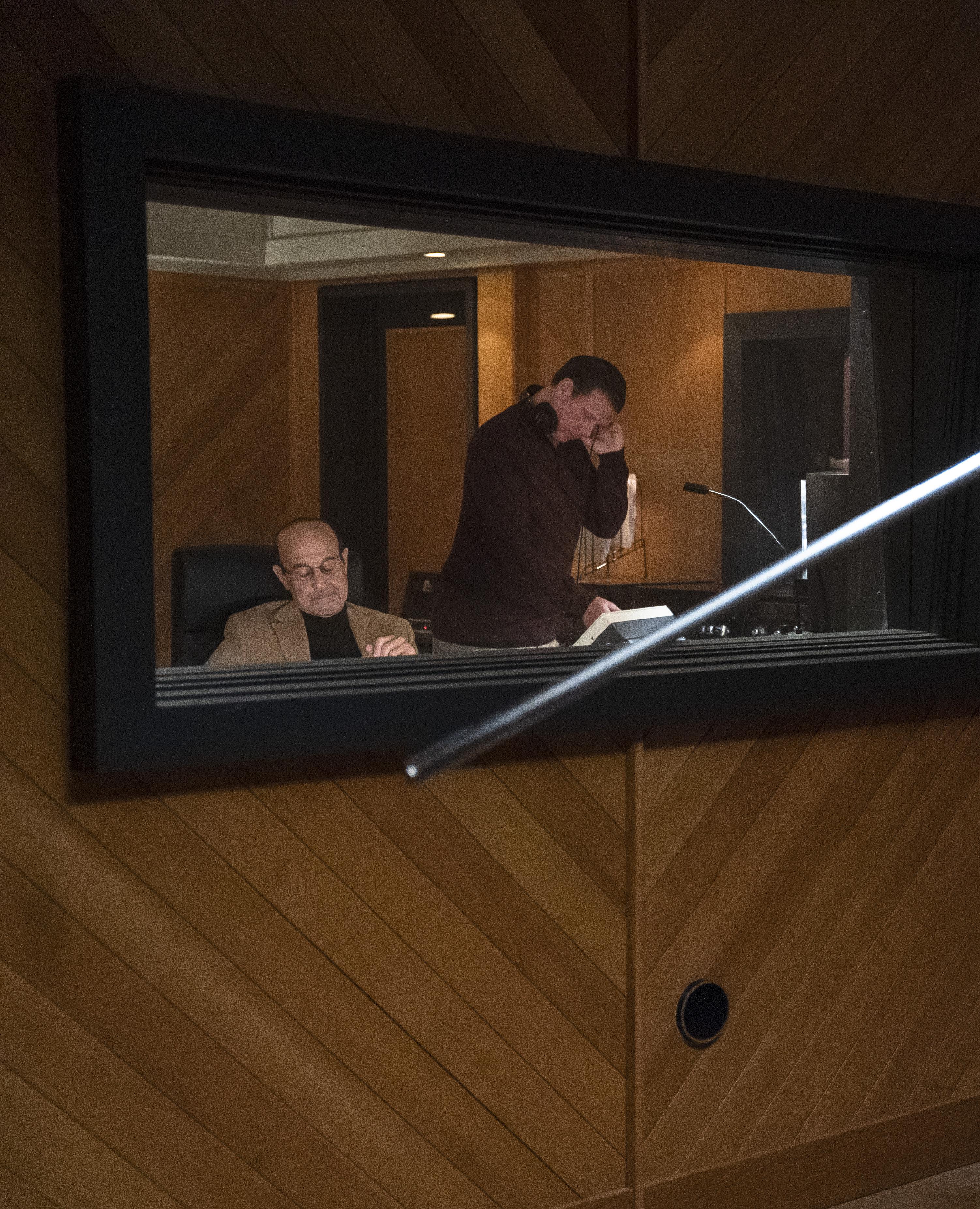
40 DECEMBER 2022
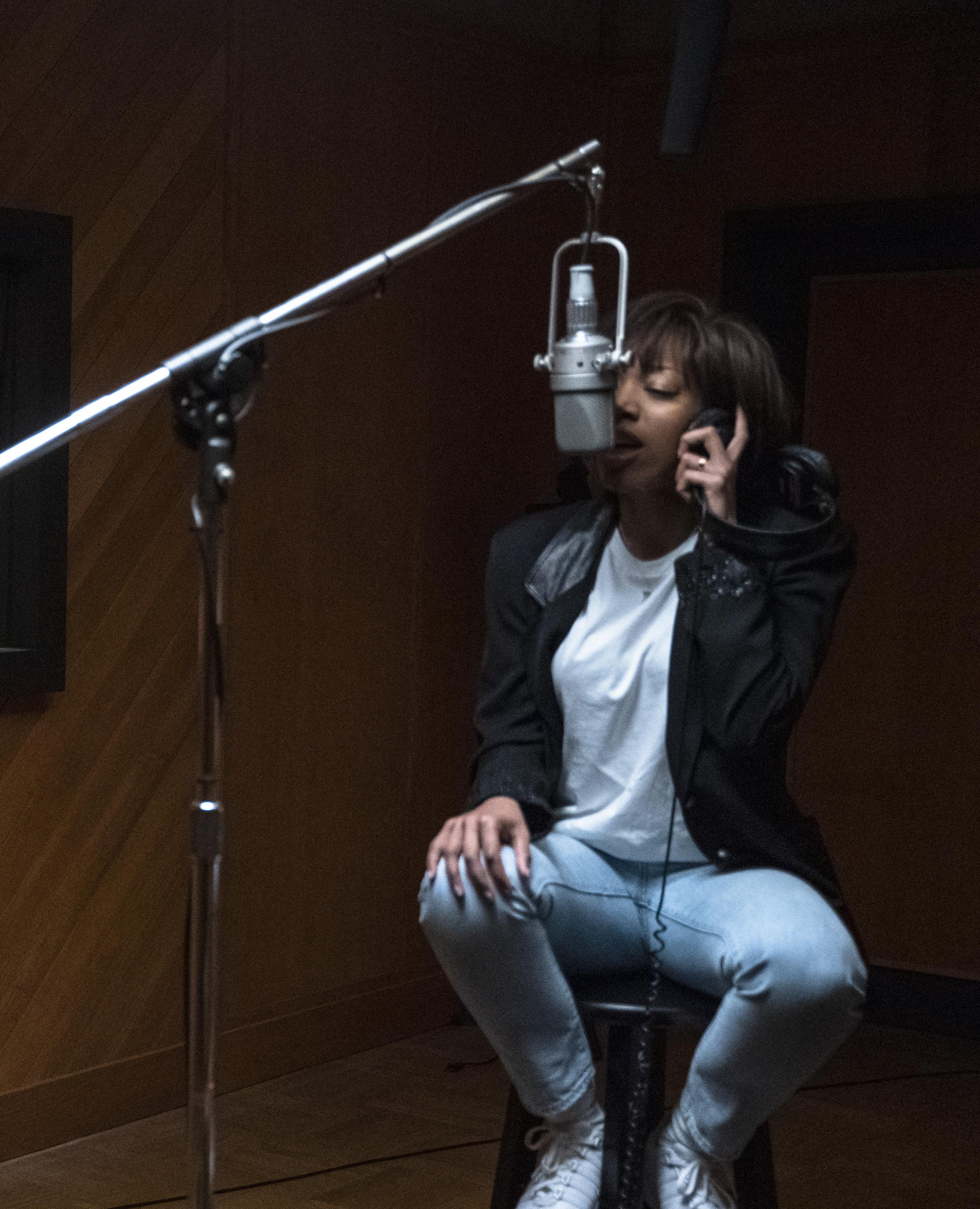
41 DECEMBER 2022
Maintaining the “visual rhythm” of a film, as Ackroyd describes, was very much at play in the new Sony/TriStar Pictures production of I Wanna Dance with Somebody , written by Oscar-nominee Anthony McCarten (The Theory of Everything ) and directed by Kasi Lemmons ( Exposure , page 32). The biopic of one of the world’s most well-known and beloved vocalists, Whitney Houston (played by Naomi Ackie), was produced by music icon Clive Davis and takes viewers through Houston’s emotional, inspiring, and very personal journey – from the Newark, NJ church choir where she began singing as a child, to her breakthrough in the music industry. The film includes everything from intimate performances to massive concerts at the VMA’s, The Concert for South Africa, and her memorable 1991 Super Bowl rendition of the national anthem.
And it was Ackroyd’s keen understanding of the “beat” of a story, along with his well-known documentary vision, that brought the project to life. Ackroyd laid out his shooting approach in preproduction, the most important part of which was placing no restrictions on the actors. He ran three cameras all the time in a free-form, jazz-like structure: “Three musicians get the vibe and often improv,” he explains. Ackroyd told his team that “focus is
the best tool. It tells you more about humanity,” he insists. He encourages his crew to take a page from his documentary days. “When I put the camera in my hand, I can feel the energy. I put my eye to the lens, but I still listen and observe what is going on around me.”
As 2nd AC Tom Bellotti remembers: “One of the first things Barry explained was the importance of capturing moments and staying out of the actors’ way. He likes to keep the lighting out of the way as well, to allow the actors to move throughout the set and not have any boxed-in spaces for them or the operators.

“Midway through the first week,” Bellotti continues, “we had an over-the-shoulder in a scene where Nafessa Williams (Robyn Crawford) and Whitney first meet at the basketball courts. We put a mark down for Robyn to ensure we could line it up properly. As we finished the setup, [1st AC] Nolan Ball and I were pulling the camera out, and Barry bent down and picked up the mark. He walked up to us, stuck the mark to my jacket, and said, ‘Hang onto this piece of tape. We might use it again before the show’s over.’ We probably did less than a dozen marks throughout the entire shoot.”
Ackroyd instilled a culture of “there are no mistakes.” As B-Camera 1st AC Rob Bullard
describes: “Barry would work with us to flush out where to put his camera, and then he’d leave us to our own devices, encouraging us to go for it. And no one got in anyone’s way. Well, at least not intentionally,” Bullard laughs. “I remember one shot where I had problems setting myself up. Then I saw a spot between the grip gear and a set piece – about a threeinch gap that was perfect. But when I looked up, there was Barry’s lens. We never knew where he would be!” One of the team tags was, “Where’s Waldo? as Barry was off doing his thing – and we just rolled with it,” Bullard adds. Ackroyd’s advice to all the crew was simply: “Think as if every shot you make is going to end up in the film.”
To give the Guild camera team the freedom to capture moments – expected and unexpected – Ackroyd and 1st AC Ball tested cameras and lenses. They came up with a versatile package, based around an ALEXA Mini LF in Super 35 mode with an aspect ratio of 2:39, and anamorphic lenses – Atlas Orion 2 x anamorphic primes – Angénieux Optimo 56 152 mm 2x Zoom T4.5, 30 72 mm 2x Zoom T 4 , and 42 420 mm 2x Zoom T 4 5 , as well as Angénieux Spherical Zooms 24 -29 0 T2.8,

42 DECEMBER 2022
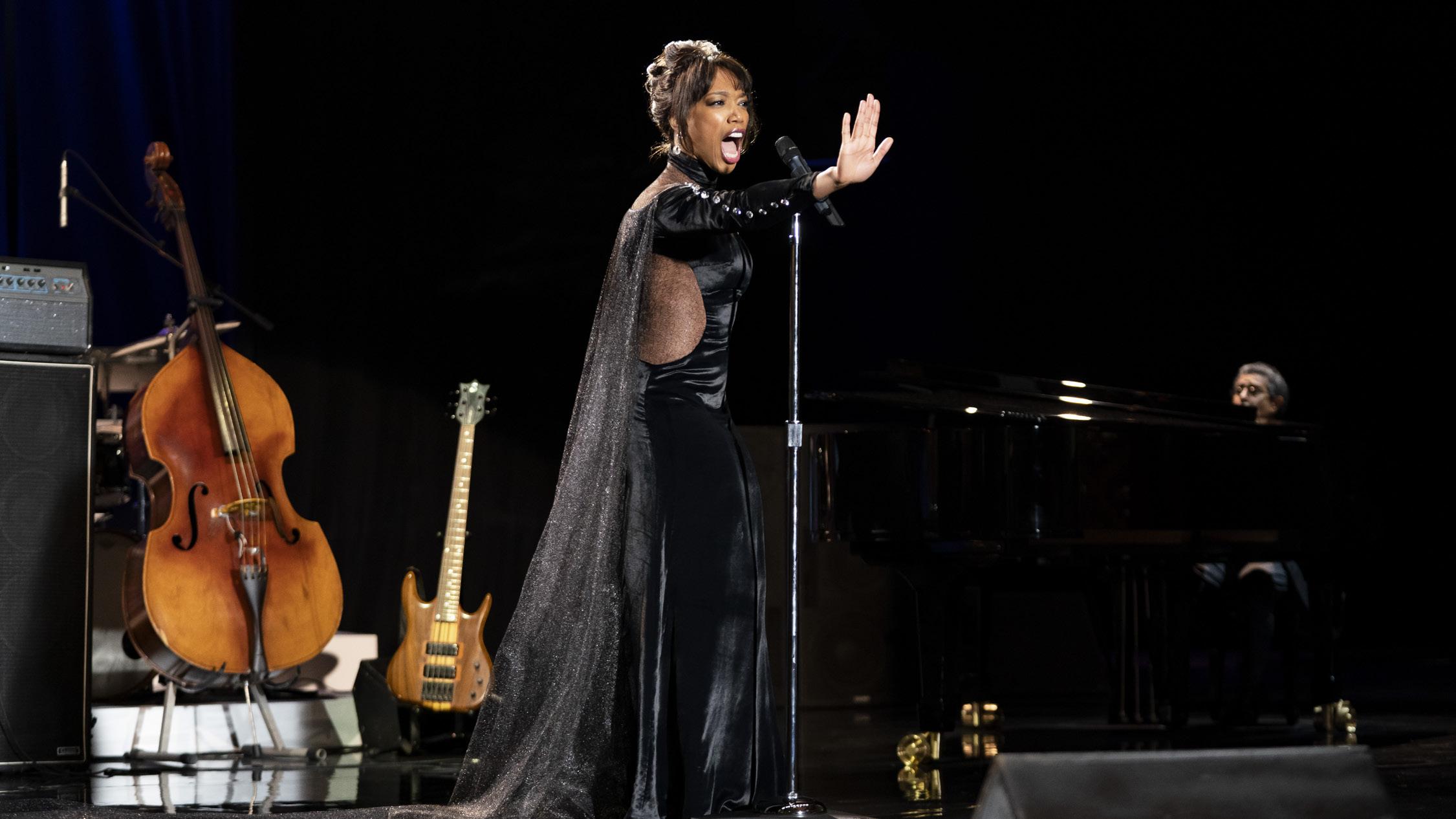

43 DECEMBER 2022
KEY GRIP WOODY BELL RECALLS: “THE OPRAH SET HAD A REALLY
AND WAS BLACK MARBLE. SO, WE ALL HAD TO WEAR BOOTIES AND USE CARPET RUNNERS FOR DOLLIES AND GEAR...WE MADE A CONTINUOUS LOOP
GRIP]
THE MANY PERFORMANCE SCENES (ABOVE/BELOW) REQUIRED CREATIVE PROBLEM-SOLVING. AS
SHINY FLOOR
WITH THE CARPET...WITH [DOLLY
ERIC KOMAR PUSHING THE DOLLY LIKE IN A HAMSTER WHEEL. WE GOT A STANDING OVATION FROM ALL THE BACKGROUND ARTISTS WHEN WE GOT ACROSS THE STAGE. IT WAS QUITE A SIGHT.”

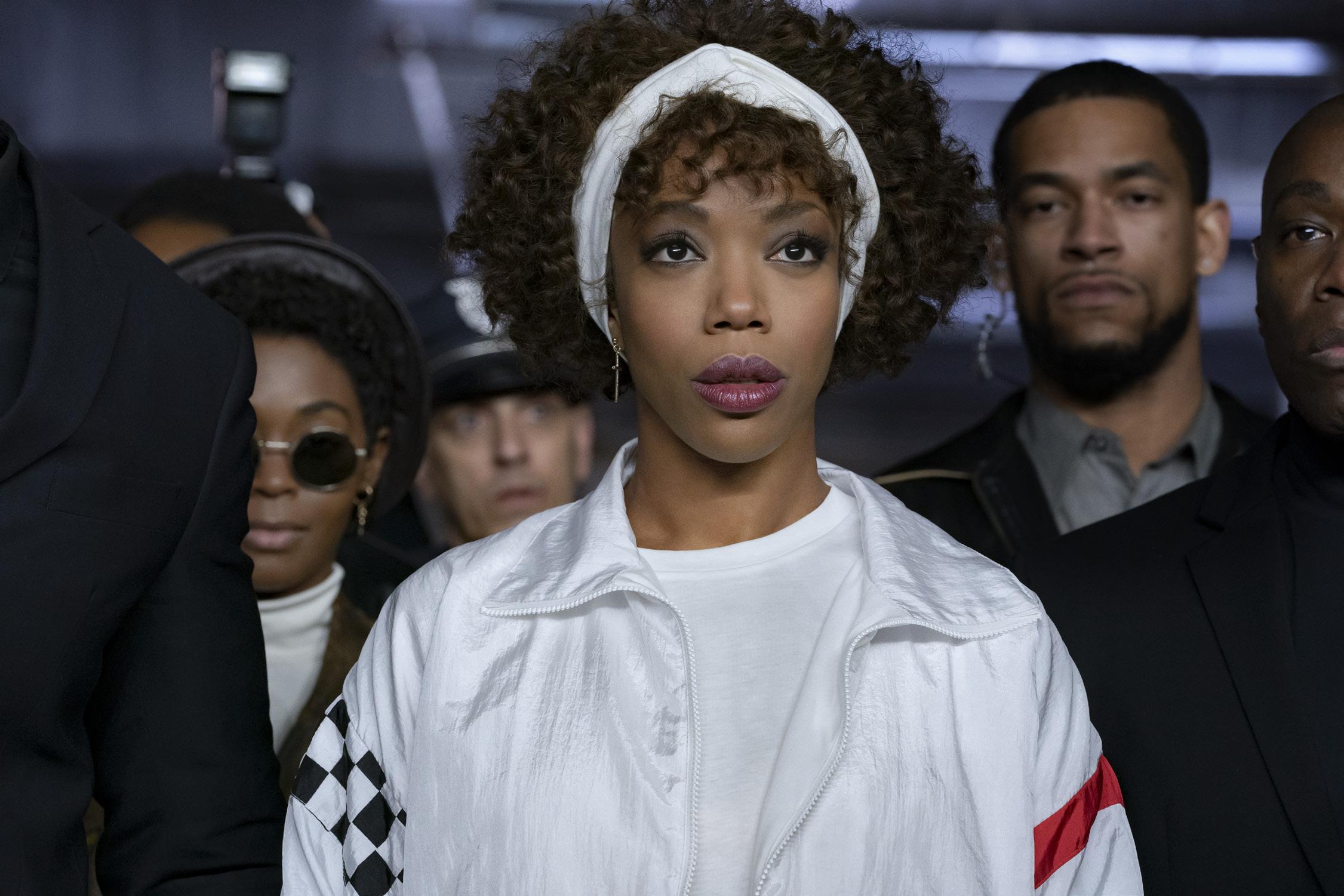
44 DECEMBER 2022
15 40 mm T2.6, 2 8-76 mm T2.8 and 45 120 mm T2.8, with Black Satin and Star filters. Support was as needed, with a heavy emphasis on the 75 -foot Technocrane for much of the concert footage.
An early scene that brings Houston to the attention of star maker Clive Davis (Stanley Tucci) takes place at the Sweetwater Café. The family comes to see Whitney’s mother, Cissy (Tamara Tunie), sing in the small club. But she tells her daughter she has to take the reins because Cissy’s throat is sore. As the shot widens, we see not just Houston’s family watching intently, but Clive Davis as well.
“The tone was more about lighting a crowded club in the 1970s,” recounts Chief Lighting Technician Kelly Clear. “A little cool, a little dingy. We used a bunch of Astera tubes in combination with Dedo lights with gel to light the performers, as well as Clive.”
“We shot this the same way Barry likes to photograph all scenes – allowing both sides of the action, so the actors’ genuine reactions are mirrored,” Ball explains. “We used all three cameras, each capturing different moments and reactions, and giving Kasi and the editors a lot to work with.”
Ball cites an intimate scene backstage with mirrors – shot handheld, with only two
cameras and similar focal lengths. “Barry and Tom set up at either side of their frames and did a perfect handoff from Whitney and her mother, as Whitney is reassured she’ll do fine.”
One of the constants in Houston’s life was her time in the recording studio. Ackroyd describes shooting those sessions on a small sound stage that was built as one piece but could be shot in different ways. “Although the sessions covered three decades,” he describes, “the lighting was consistent, with the periods identified by the change in wardrobe. We worked around practical lights, concentrating on what was happening. Whitney’s side had more atmosphere. The shots I admired most were the intimate scenes where she is singing.”
B-Camera/Steadicam Operator Joel San Juan, SOC, remembers the recording-studio scenes as being “tricky, because the space wasn’t big, and it had a window between the mixing room and the recording studio. We had three cameras rolling in every shot, and we each had to find a way of not seeing each other directly or in reflections. Like with every scene, Barry had a game plan with the cameras in which we would rotate angles for each take, so we always saw something new from a different perspective. Also, we were all on zoom lenses and sliders, which made finding unusual angles easier.”
Houston’s relationship with Davis is a key narrative thread, with his office representing seminal moments in the singer’s career. We see her signing her contract, celebrating her first hit, listening to songs on a tape deck and knowing those that she could make hits.
“We tried to find a real office, but it just wasn’t going to work,” Ackroyd recalls. Ball remembers the office as “another great set built to accommodate three cameras. Barry’s lighting was constructed to allow the actors to move around the office, freely interacting with the set. This led to Whitney dancing and singing her hit song. Since Barry doesn’t work with marks, the blocking was natural, allowing the actors to interact.”
“Like most shots, Barry allowed us to pick spots that would allow the actors freedom of movement,” adds A-Camera Operator Tom Fitzgerald. “We used zooms to get a variety of shots, and as a creative choice, creeping little zooms when it felt right.”
But the office set did pose a challenge for lighting. Since it was supposed to be on the upper floors of the building, Clear says, “There needed to be a sense of sunlight and skylight for day and then light from the street below at night. The solution was top light from overhead fixtures and practical lamps.”
45 DECEMBER 2022
-2ND AC
TO
FREEDOM OF MOVEMENT
TOM BELLOTI ON ACKROYD’S DESIRE
GIVE ACTORS COMPLETE
He walked over, stuck the mark to my jacket, and said, “Hang onto this piece of tape. We might use it again before the show’s over.”
Ackroyd says his favorite shot is in a scene with Bobby Brown (Ashton Sanders) and Houston after they get together. “Bobby wants to propose in the back of a limo, where he is offering her a beautiful ring,” Ackroyd explains. “She is overwhelmed. But he has a problem. The girlfriend he is still with is pregnant. Whitney stops the limo, and she runs across the bridge. We shot it as a night exterior in Boston. But we could only close down the bridge for a short time. We did the interiors on stage with our little Volume, projected to the side – with three cameras – two outside each side window and a reverse.”
“It was a cold November night in Boston,” Ball elaborates. “The limousine comes over the bridge’s crest, covered by 3× long lenses. The three cameras would each set up outside the other’s frame, allowing each to cover the scene from opposing sides. This helped Kasi capture as much of the scene as possible without compromising the other cameras. This was important due to the stunt drivers passing by Bobby and Whitney as they dodge traffic while crossing the busy road.”
San Juan recounts how “Whitney shouts to the driver to stop after she accepts the
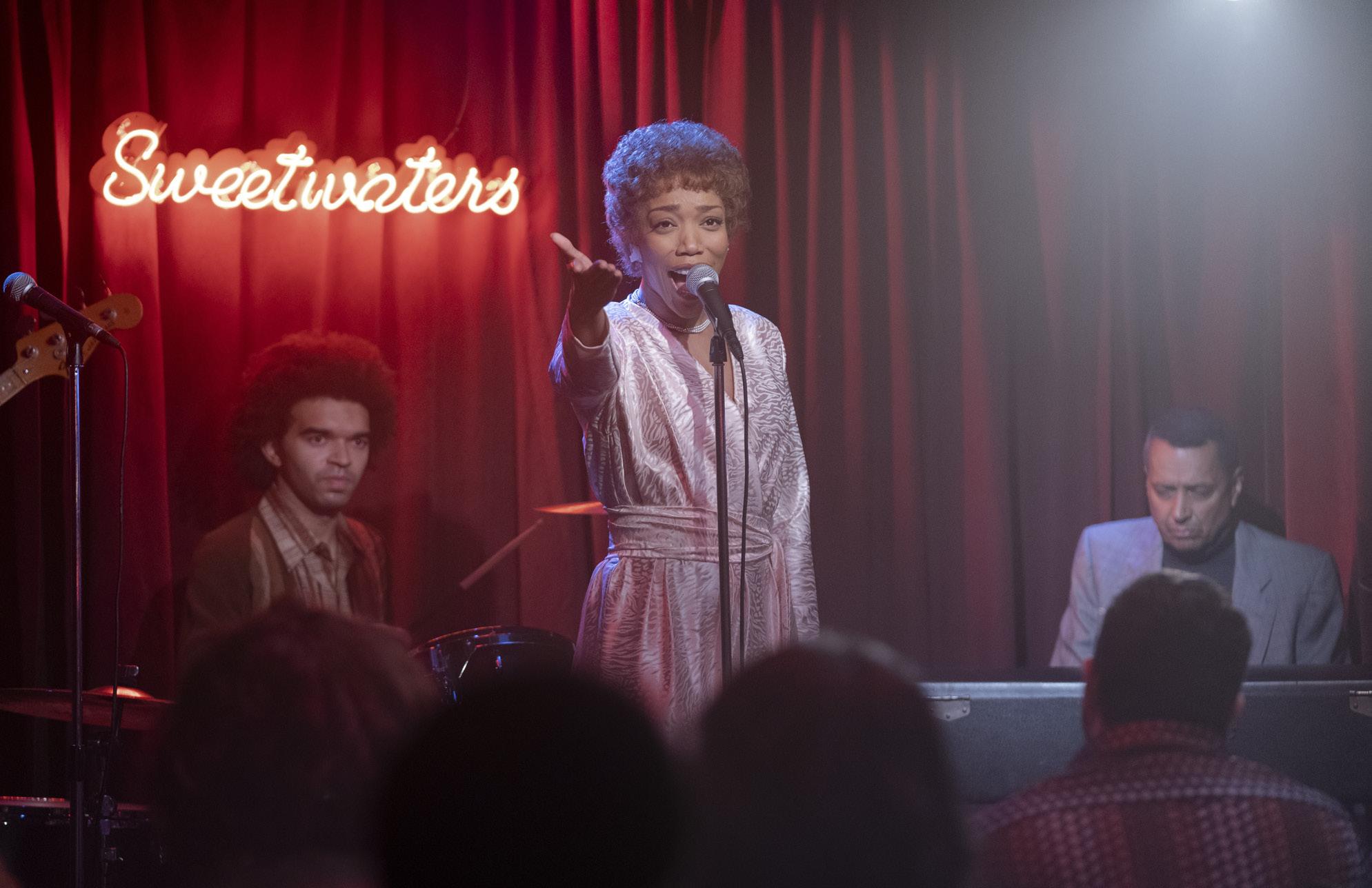
proposal. We had less than seven hours and had to stop before sunrise. Tom was on the jib covering the car-stunt sequence on a wide zoom, Barry was on the long end of the zoom on the bridge and I was in the car doing coverage for dialogue handheld. [A portion of the dialogue was done on stage at Weymouth Hangar in Massachusetts.] Barry’s plan? Get as much coverage as possible. When Whitney and Bobby were on the bridge, we went zooms and sliders and covered the dialogue. We shot as efficiently as we could so the actors did not have to spend too much time outside.”
Clear says the lighting for the pivotal scene was challenging. “The bridge gave us this amazing backdrop of the city at night, but there was no place to put any big night lighting, as this bridge was basically over a railroad yard,” he describes. “Barry and I went there several different times to figure it out. I finally suggested we use the DMG Lumières and rig them to the security fence as if they were an architectural part of the bridge. It was all under wireless dimmer control, so we could set the levels anywhere we wanted. We also brought out some other soft lighting when the traffic was not moving.”
For the big performance scenes, the production team would study the original footage and get together with design and VFX to map out what they would shoot for real – and what would need to be augmented. A scene from the AMA Awards illustrates the complexity involved. “The shot was to start with a 720-degree, low-angle [about four feet] roundy-round that pulls back fast when Whitney hits the crescendo of the three-song medley,” San Juan recalls, “and then circles behind the band [who are on a raised platform] before pulling back up to reveal a wide shot of the stage and audience.
“Several ideas suggested included using the Techno for the full shot, using the Trinity ending on a crane step-on and an R2 or MōVi gimbal,” he adds. “But the main constraint was space. The step-on could not work because there was not enough space to pull it from the stage to behind the audience. So, a poststitch seemed like the best solution. It would be Steadicam running the 720 and pulling it to behind the band, and Tom on the Techno picking up the shot from there – round the band on stage left and pull out to the wide shot of the audience and stage. Barry suggested we
46 DECEMBER 2022
use the flare coming through the percussion chimes. This was tricky because that point was around eight feet up. So, Key Grip Woody Bell built a ramp to get exactly that spot.”
“Just getting the 75-foot Techno in the theater was a challenge,” Bell adds. “Our Rigging Key Grip, Andrew Bell, had to rent a flatbed, since the 75-foot trailer would not reach the loading dock. Working with the theater, we had to reinforce the floor with double layers of 1-inch plywood and keep away from the front apron.”
The 75-foot crane shots were fun for Todd Nicodemus on B-dolly. “It was technically hard because of the small space with the large crane,” he shares. “After the Steadicam stopped on the ramp, the crane would pick it up to create a seamless shot. Scott Drinon, on the pickle arm, retracted across the backs of the musicians – Tom Fitzgerald on camera. As it came stage left, I had to swing the crane across, toward the front stage. Then Scott extended the arm into the balcony as I held the crane centered on Whitney.”
Bell elaborates on the lengths to which his team will go to make a shot happen. “The Oprah set had a really shiny floor and was black
marble,” he recalls. “So, we all had to wear booties and use carpet runners for dollies and gear. Gary, the on-set dresser, had a 30-foot carpet runner, but the set was 60 feet wide. I coined it the ‘New England belt sander.’ We made a continuous loop with the carpet to get across the stage with [dolly grip] Eric Komar pushing the dolly like in a hamster wheel. We got a standing ovation from all the background artists when we got across the stage. It was quite a sight.”

Where would a Whitney Houston story be without the moving Concert for South Africa and her legendary Super Bowl performance?
Ackroyd says the team decided to build a blackout stage – as specified and designed by the VFX department – in a hangar outside Boston for The Concert for South Africa. Ball adds: “We also filmed on stage for South Africa scenes, as it would have been very difficult to find a location in New England, in November, that would match South Africa, hence the need for VFX and the control of filming.”
Ball describes the South Africa performance as “another big day that
required two additional cameras for capturing Whitney’s band and her performances while also photographing the people we had for our crowd, which would later have to be quadrupled in size to represent the actual attendance.”
Fitzgerald adds that “we originally had the Techno dead-center because we wanted the ability to push-in straight without retracting. The push-ins worked well, but because the apex of the crane is the center stage, there was not much variety in the shots. So, we decided to move the crane off stage left. We could track parallel with the stage, get lower, and have nice foreground. The arm swinging-in felt much better than the straight push-in.”
With the scope of concert lighting being so massive and the schedule tight, Clear suggested – in preproduction – bringing in another team. “Kerry Keenan put together a crew to do the building of the stage and the lighting,” Clear explains. “The biggest challenge was finding enough old Varilite VL5s so the lighting would match the video of Whitney’s original performance, and Kerry came through with flying colors. We also had three 20-by-40-by-six-foot softboxes with 18
47 DECEMBER 2022
FOR A KEY MOMENT WHEN THE SINGER IS DISCOVERED (LEFT) 1ST AC NOLAN BALL SAYS, “WE SHOT THIS THE SAME WAY BARRY LIKES TO PHOTOGRAPH ALL SCENES – WITH ALL THREE CAMERAS – ALLOWING BOTH SIDES OF THE ACTION, SO THE ACTORS’ GENUINE REACTIONS ARE MIRRORED,” ABOVE: CLIVE DAVIS’ OFFICE POSED MYRIAD LIGHTING CHALLENGES FOR CLT KELLY CLEAR, WHO SAYS “THERE NEEDED TO BE A SENSE OF SUNLIGHT DURING THE DAY AND THEN LIGHT FROM THE STREET BELOW AT NIGHT. THE SOLUTION WAS TOP LIGHT FROM OVERHEAD FIXTURES AND PRACTICAL LAMPS.”
ARRI S60 SkyPanels in each one to create a crowd ambiance, and we had three follow spots for Naomi’s performance. The original stage was massive, so we put two huge green screens on either side to allow VFX to build the stage out to its authentic size in post.”
Ball describes recreating Houston’s walk to the field for the Super Bowl as a quintessential example of Ackroyd’s approach. “Everyone needed to always be on the ready,” Ball remembers. “So, Barry set up handheld behind Naomi, and Tom Fitzgerald and Joel San Juan set up in the wings picking up tights on the long end of the zooms.
“We had two additional cameras, photographing elements that would later be put in the background for the crowd replacement,” he continues, “as well as A, B and C. So, a lot of the scenes from the Super Bowl were photographed and handed off to the visual-effects team, so we could continue with Technocrane and Steadicam, with a nice mix of handheld for her entrance and all of the paparazzi people around her. It represents a huge moment in Whitney’s career, and we wanted to make it feel like the audience was on her shoulders: all those thousands of people there and millions of others watching live on television as she sings the National Anthem.” [To complete the Super Bowl Tampa Stadium environment with these photographic elements, VFX replaced the existing environment beyond the football field with a CG Old Tampa Stadium and Volumetric crowd.]
John Garrett shot the audience plates for the Super Bowl sequence, Ackroyd was handheld, and Fitzgerald handled the big sweeping shots on the Techno, with Joel San Juan (and Ackroyd) on the mid shots and closeups of Houston. Ackroyd intentionally played the anamorphic flares from the stadium floodlights to highlight the grandeur of the moment, with both close-up cameras at a low angle. The latest in VFX technology helped to sell the majesty of the performance and the location.
That process was such that Oscar-winning VFX Supervisor Paul Norris and VFX Producer Tim Field worked in advance with Lemmons and Ackroyd to find the right locations to fit the script and then carefully story-board practical capture and VFX. From this came a pre-vis and from that a series of shots. For example, the Super Bowl was broken down into the field, the performance action, deciding on the limited number of extras and backgrounds, the marching band, players and coaches. Same for the concert footage, where they would take a few people in the front rows and use the new technology to fill the venue.
“Pre-vis on all these sequences would give us the lens and camera information to create the shots,” Field explains. “We also worked with the camera department for those requirements and to understand what would be Technocrane,

how the crane could move, and camera-move timings, or even what we could do with drone shots. This way, we could create the foreground and background plates for VFX.”
Norris picks up the workflow. “We then went into our Volumetric capture. It’s a different technique using real people in a booth with an array of 80 cameras [iO Industries’ 4K Volucam]. This way, we could direct crowd extras with different costumes
and performances for each concert, creating a 3D version of that performance. These live performances, stitched in, make the VFX people photo-real compared to a traditional digital character. It’s a big step forward from what we could do on Bohemian Rhapsody .”
“The technique also allowed for maximum flexibility during the post-editorial process,” Field adds. “The most successful sequences were the ones that were pre-planned, discussed and shot with the collaboration of heads of departments to ensure the final VFX shots
48 DECEMBER 2022
were photo-real and technically correct when delivered months after principal photography.”
Each member of the Local 600 team says they were both thrilled and challenged with the workflow. “You always have to be ready, looking in the peripheral of Barry’s shots for what was happening off camera,” Ball describes. “Barry would often find something off camera and crash-zoom-in to capture a spontaneous moment we hadn’t planned for. You had to keep your eyes on the scene as you never knew when Barry might say, ‘Turn
over,’ and you find yourself telling the rest of the operators Barry wants you to shoot this moment happening that wasn’t scripted or possibly after ‘cut’ had been called. Is this a rehearsal? Should I tell everyone to roll? It’s the kind of thing Barry does so well, and that connection of understanding is key for all team members.”
San Juan recounts how “we all remember talking to Barry during one pre-shoot meal, and he said that the challenge was to cut through all the spectacle and tell a personal
story of one of the greatest singers who ever lived. With his support, we know we got that and more.”
Ackroyd sums it up this way: “For me, cinematography is the art of cinema. But it requires the skills of dozens of crafts and endless hours of dedication to make it into a film. It was an honor to recreate the world of a true artist like Whitney Houston. We had a great director in Kasi Lemmons, a fabulous lead actress in Naomi Ackie and a lot of music in this film. What else could anyone want?”

49 DECEMBER 2022
PHOTOGRAPHY

LOCAL 600 CREW MAIN Director of Photography Barry Ackroyd, BSC A-Camera Operator T. Acton Fitzgerald A-Camera 1st AC Nolan Ball A-Camera 2nd AC Thomas Bellotti B-Camera Operator/Steadicam Joel San Juan, SOC B-Camera 1st AC Rob Bullard C-Camera 2nd AC Chuck Moya C-Camera 1st AC Tulio Duenas C-Camera 2nd AC Chris Malenfant Loader Audrey Stevens DIT McKay Johnson Utility Matt Meigs Still Photographer Emily Aragones LOS ANGELES UNIT Director of Photography Barry Ackroyd, BSC A-Camera 1st AC Tulio Duenas A-Camera 2nd AC Gus Bechtold B-Camera Operator Markus Mentzer B-Camera 1st AC Dan Schroer B-Camera 2nd AC Dan Urbain Loader Gavin Wynn DIT McKay Johnson Still Photographer Emily Aragones ADDITIONAL
Director of Photography Markus Mentzer A-Camera 1st AC Steve Wolfe A-Camera 2nd AC Jonathan Clark Alex “Xan” Coyle B-Camera Operator Tommy Tieche B-Camera 1st AC Hector Rodriguez B-Camera 2nd AC Jesse Barba C-Camera Operator/Steadicam Colin Hudson C-Camera 1st AC Rafiel Gillen C-Camera 2nd AC Holden Miller Loader Chris Brooks Utility Michael Martins
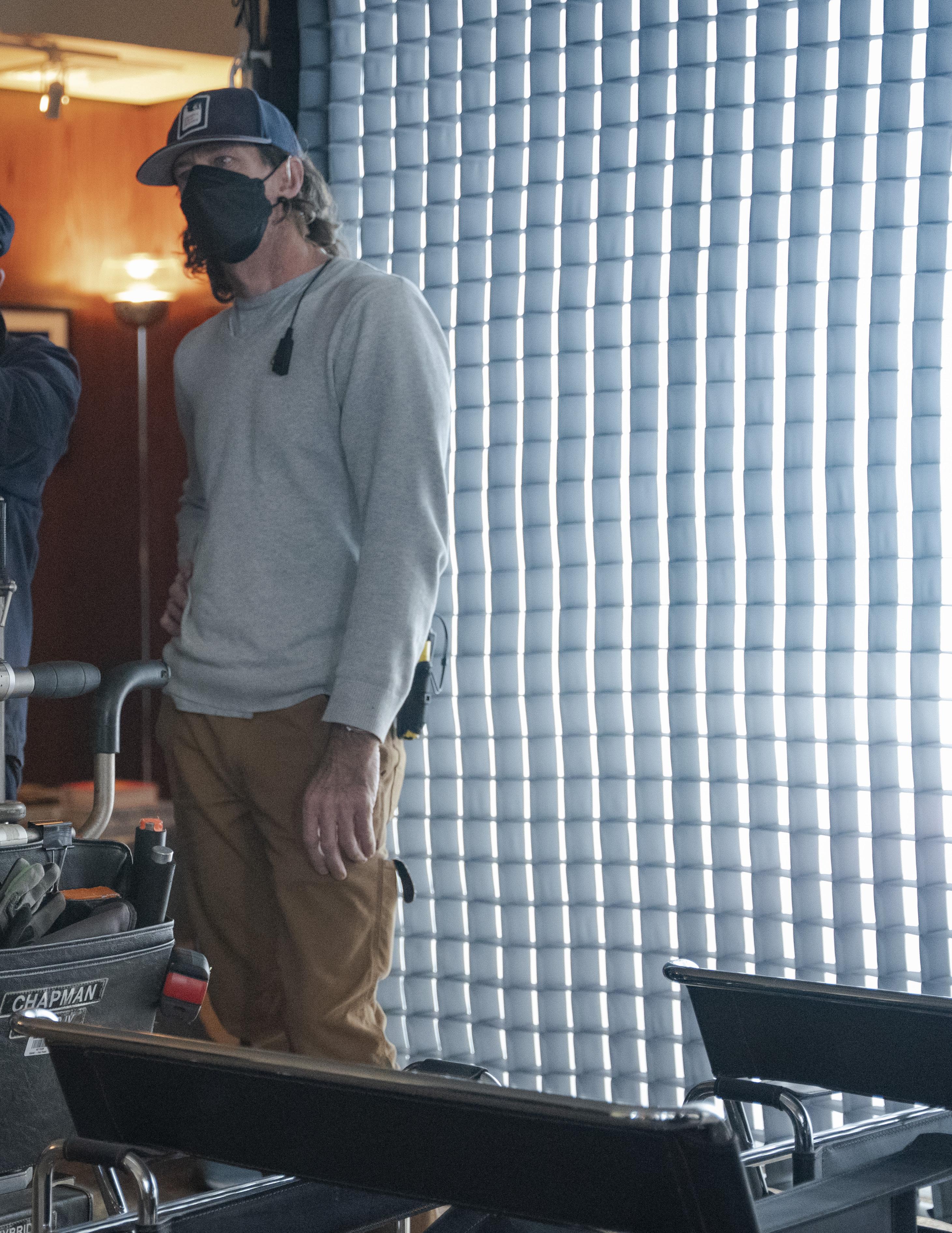 B-CAMERA 1ST AC ROB BULLARD SAYS ACKROYD WOULD “WORK WITH US TO FLUSH OUT WHERE TO PUT HIS CAMERA, AND THEN HE’D LEAVE US TO OUR OWN DEVICES, ENCOURAGING US TO GO FOR IT.” ACKROYD’S ADVICE TO THE CREW WAS SIMPLE: “THINK AS IF EVERY SHOT YOU MAKE IS GOING TO END UP IN THE FILM.”
ABOVE: ACKROYD WITH SET DRESSER STEVEN BRENNAN (RIGHT); 1ST AC NOLAN BALL AND GAFFER BEN HELD BEHIND CAMERA.
B-CAMERA 1ST AC ROB BULLARD SAYS ACKROYD WOULD “WORK WITH US TO FLUSH OUT WHERE TO PUT HIS CAMERA, AND THEN HE’D LEAVE US TO OUR OWN DEVICES, ENCOURAGING US TO GO FOR IT.” ACKROYD’S ADVICE TO THE CREW WAS SIMPLE: “THINK AS IF EVERY SHOT YOU MAKE IS GOING TO END UP IN THE FILM.”
ABOVE: ACKROYD WITH SET DRESSER STEVEN BRENNAN (RIGHT); 1ST AC NOLAN BALL AND GAFFER BEN HELD BEHIND CAMERA.
FEATURE


2

Taylor Sheridan’s Yellowstone has brought the luster back to the TV western; and, as its longtime Guild camera team tells it, the only limits are the endless Montana skies.

COUNTRY
big
by Derek Stettler Photos by Emerson Miller / Paramount Network
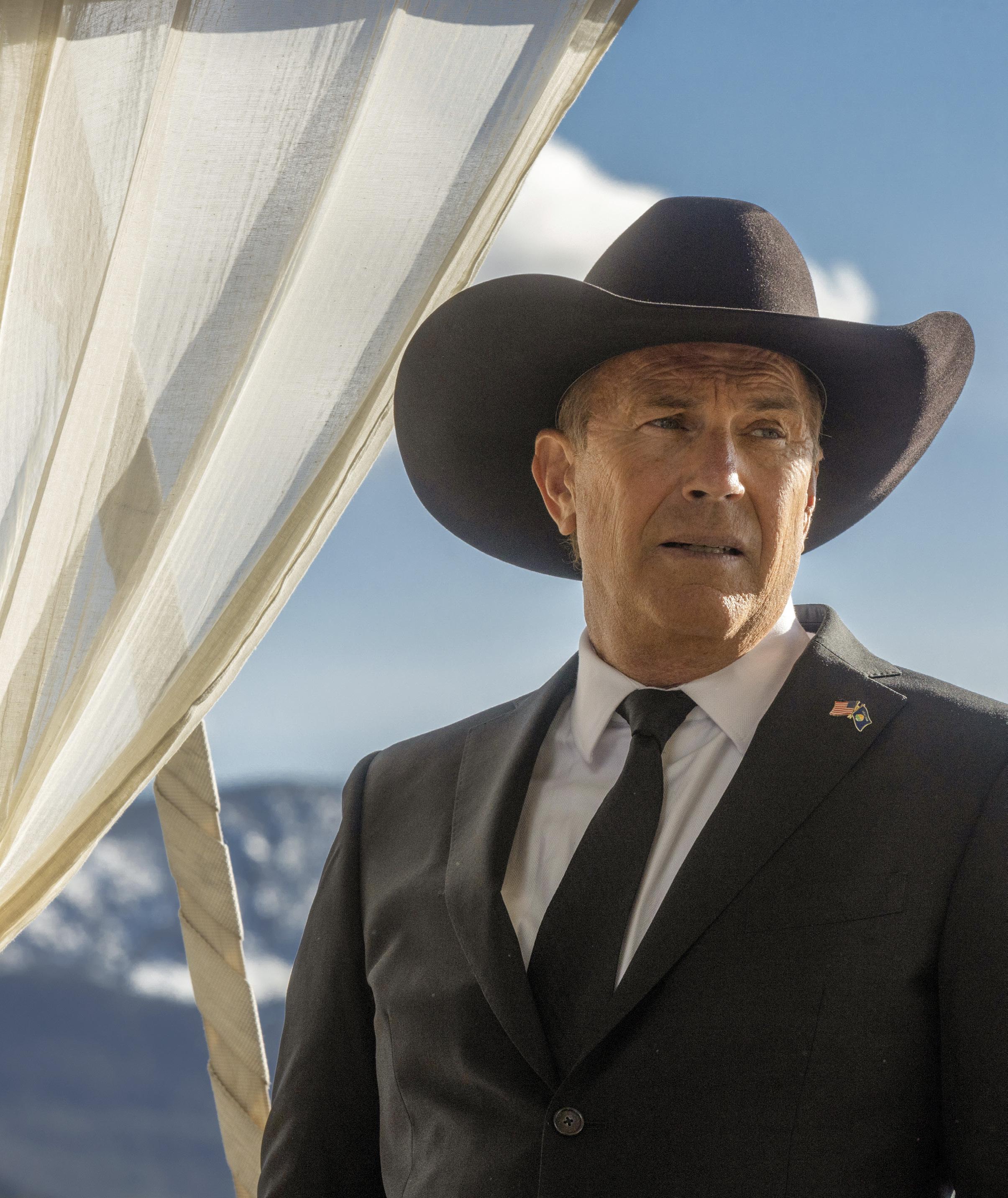
56 DECEMBER 2022
Yellowstone, the critically acclaimed series on Paramount + co-created by Taylor Sheridan and John Linson, may have single-handedly brought the shine back to the TV western. The sprawling tale, which has spawned a rodeo of spin-offs (see below), tells the story of a modern-day family fighting for the land they’ve called home for generations. Led by Kevin Costner as John Dutton, the patriarch of a Montana ranching dynasty, the series follows the members of the Dutton clan as they struggle to maintain power and control over the largest contiguous ranch in the United States. Yellowstone has portrayed the Duttons’ struggle to hold on to their way of life and values, as a counterpoint to the rapidly changing world around them, which includes a Native American reservation, an expanding rural town, and Yellowstone National Park. Upping the dramatic stakes, over the show’s five seasons the family has committed all manner of crimes to stave off change and remain rulers of the roost.
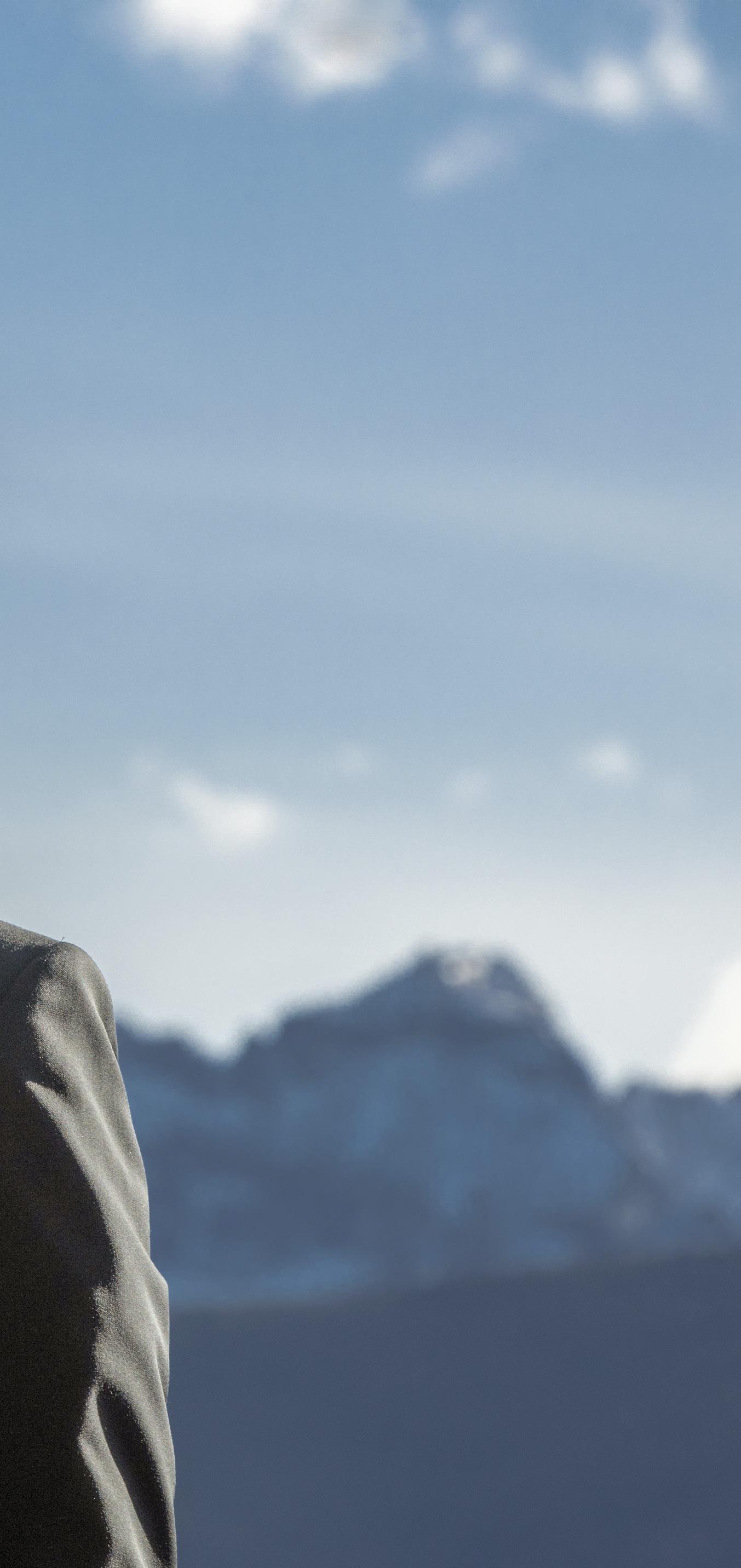
57 DECEMBER 2022
SEASON 2 PHOTO BY CRAIG BLANKENHORN
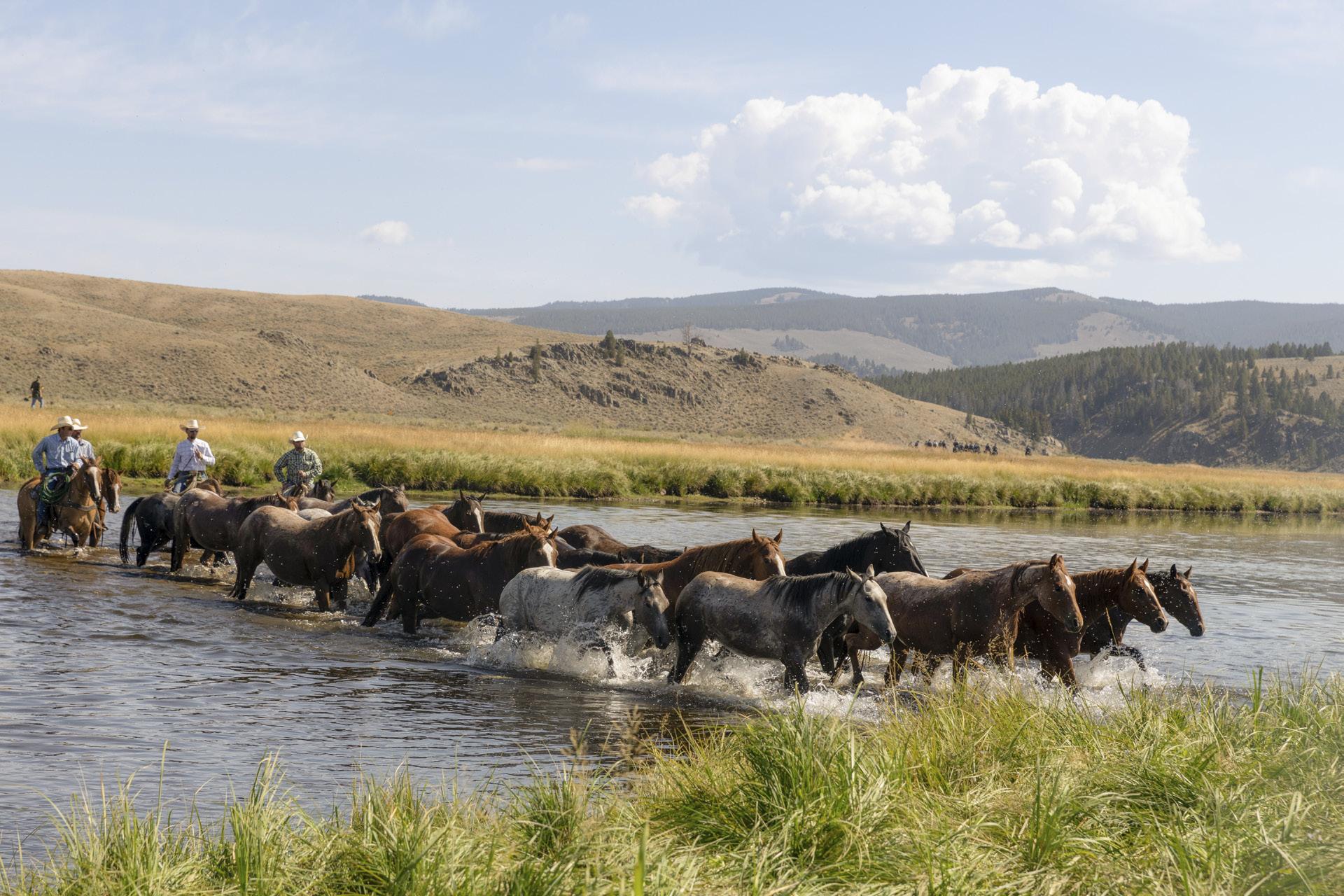

58 DECEMBER 2022
Yellowstone , like the landscape in which it is set, is big and visually bold, with a rapidly expanding narrative universe –spinoffs include the prequel series 1883 , which premiered in 2021, and the upcoming additions 1923 and Bass Reeves . The show’s cinematography is equally expansive, underscoring the rugged beauty of its Montana locations. Deliberate in its visual composition and authentic in its portrayal of the ranching lifestyle, Yellowstone’s visual language has more in common with classic Hollywood cinema than perhaps any other current TV series, which Season 5 director of photography and director, Christina Voros, attributes to the show’s namesake.

"The [show's] visual identity begins with the notion of the landscape as a character,” Voros describes. “It is what everyone is fighting for; it is the universe in which all the human drama takes place. The land is the diva actress of the entire show.”
To portray that landscape as a larger-thanlife character, a look was established in Season 1 by Sheridan and Director of Photography Ben Richardson, ASC, a two-time Emmy/ASC Award nominee, through the rather unconventional
choice of shooting almost exclusively with long lenses. “The instinct as a filmmaker when you’re shooting a landscape is to capture it big and wide,” Voros continues. “But our approach has been to get back, shoot long and compress the space. It’s not how you’re used to seeing this world, and it creates a certain languid, lyrical quality to the landscape that you can feel.”
A-Camera operator, Scott Dropkin, SOC, who has worked on the show since the Season 2 finale, adds, “the standard for Yellowstone is long lenses in Studio mode; even the wide masters are shot at 200 millimeters, often from far away. It creates a beautiful compression, making it more imposing and intimate.” Guild Director of Photography Mike Parry, who alternated with Voros on Season 5, notes that “Taylor often says, ‘If you’re going to shoot anything wider than a 50 millimeter, you have to ask for written permission.’”
In fact, since Season 4 when the series switched to ARRI ALEXA Mini LF cameras, the filmmakers have exclusively shot with Fujinon’s Premista series of full-frame zooms, often with extenders, for all exterior shots. In those scenes, the cameras make extensive
use of the Fujinon 75–400mm, affectionately referred to by the production as the “BAZ,” short for “Big Ass Zoom” or “Bad Ass Zoom,” depending on whom you ask. “That’s the lens that the show lives on,” says Parry. “It’s indispensable.” Season 5’s A-Camera 1st AC Tim Clark says, “I love the BAZ! It has a very smooth feel and an even, steady throw, whereas with other zooms, after about 17 feet, the pace of the throw increases when it goes into a second gear. Voros notes that “our task is to portray the world the characters are fighting for in a way that makes the audience feel it’s also worth fighting for.”
With that principle in mind, Voros and company include as much camera movement in wide shots as possible, judicious use of closeups, and strategic camera placement of its often four cameras, all with an aim to let things happen organically. “Christina and I are fond of saying that Yellowstone is a documentary that we have the pleasure of staging,” describes Parry. As Dropkin elaborates: “The role of the camera is to be an omniscient observer rather than an interpreter of the scene. The camera is there to document the reality of the unfolding moment. And yet, unlike the expectation with
59 DECEMBER 2022
OPPOSITE/ABOVE: SEASON 5 CO-DP MIKE PARRY DESCRIBES YELLOWSTONE’S OPERATORS AS “INCREDIBLY NUANCED, POETIC STORYTELLERS, WHILE OUR AC’S ARE ASKED TO DO THE IMPOSSIBLE EVERY SINGLE DAY. I DON’T THINK THERE’S A WAY OF OVERSTATING HOW HARD IT IS TO PULL FOCUS ON THIS SHOW AND THE EXPECTATIONS WE PLACE ON THEM.”
documentaries, there’s not a lot of handheld, which goes back to the cinematic aesthetic Taylor favors. It’s reserved for fight scenes, where it’s less noticeable.”
The result is as if the epic sweep and grandeur of the western landscapes both act to ground the camera movement, with the filmmakers letting the action play out within classical tableaux. Indeed, the show’s cameras live on the dolly, with the A-Camera on a J.L. Fisher 10 and the B, C and D cameras on the Chapman-Leonard PeeWee series. The DJI Ronin is also used as a remote head when called for. As for Steadicam, Dropkin notes, “it’s used only for logistical purposes rather than subjectively. It’s never used for the sake of moving the camera.”
While Yellowstone is defined by its striking visuals and see-saw family dramas, which have made it the highest-rated cable series in nearly half a decade, it’s also defined by its close-knit crew, whose careers have grown with each season. Perhaps the most notable example is Voros. Her role has evolved from B-Camera operator in Season 1 to director of photography in Season 2, to directing two
episodes in Season 3, to photographing six episodes in Season 4 and serving as both DP and director on two of them. And now, for Season 5, she’s shot and directed four episodes, was DP on two additional episodes and serves as an executive producer.
That’s an impressive trajectory for an indie filmmaker who, after graduating from NYU’s Tisch School of the Arts, had never shot a frame of television. “It’s certainly been an unconventional and rewarding progression from B-Cam operator to executive producer and director,” Voros reflects, although, in hindsight, it makes a world of sense. The daughter of Hungarian immigrants, Voros’ father learned English watching westerns on television; and the DP later married a cowboy from West Texas who is an animal wrangler and stuntman on Yellowstone
However, Voros is quick to point out that her ascent on the series is not unique. “Our current production designer was an art director for the other seasons, and one of our camera operators started as a 1st AC. Our Season 5 alternating DP, Mike Parry, was a camera operator on Season 4,” she details. “It’s a part of the culture of this show and goes to a fierce loyalty on Taylor’s part. [Sheridan] is
an artist and collaborator who is constantly looking to hire and uplift from within.” As the series’ narrative universe has expanded, many crew members have moved on together to the various spin-off series – Richardson and Voros both worked on 1883 , and Voros is directing, shooting, and is an executive producer on the first three episodes of the 1883 spinoff, Bass Reeves
What emerges is a snapshot of a crew with intense solidarity. “Being out in Montana requires a strong team with a cohesive sensibility that runs through every department,” states Season 5 Production Designer Yvonne Boudreaux, a trained architect and former dancer. Her collaboration with camera and lighting runs deep, from arranging sets to optimizing sun angles, curating shades of white for walls, and even having camera operators ask her for foreground elements to shoot through. “For each set, I’ll go on location, take photos, and often augment and assemble them into large vision boards that show all the relevant information for each person involved in executing it,” she explains. “Our set decorator, Suzanne Stover, does an incredible job of bringing in authentic elements to every set, and Christina [Voros] has an elegance and
60 DECEMBER 2022
– PRODUCTION DESIGNER YVONNE BOUDREAU
“
Being out in Montana requires a strong team with a cohesive sensibility that runs through every department.”


61 DECEMBER 2022


62 DECEMBER 2022
grace on set that is so inspiring.”
No doubt such trust contributes to the authenticity of images on screen. It’s exemplified in Key Grip Craig Sullivan, who’s been on the show since day one, and Corrin Hodgson and John Gorman, who have alternated as chief lighting technicians over the seasons and have a unique talent for seemingly reading Voros’ mind.
Speaking from her role as both director and DP (a rare double duty in the TV world), Voros says, “I rely on Corrin and John as full collaborators. We talk about what we want it to feel like, as if painting a picture together.”
In describing the dance between the camera moments that are deliberately designed and those where the action unfolds organically, Voros notes the key is to provide creative freedom and ownership to the operators.
“Everyone on set has an experience of putting their fingerprints on the work, and each camera is a different kind of paintbrush,” she continues. “A-cam gets the broad strokes, and every other camera goes in for details
like the finer brushstrokes. So much of what I think makes the show visually compelling has nothing to do with my direction and everything to do with giving the operators the freedom to trust their instincts. My favorite moments this season have come from operators who found moments I could not have planned.”
Parry agrees. “Our operators are incredibly nuanced, poetic storytellers, and our AC’s are asked to do the impossible every single day,” he adds. “I don’t think there’s a way of overstating how hard it is to pull focus on Yellowstone and the expectations we place on them.” Parry cites a sequence from one of his episodes that included a massive spring cattle roundup and branding, shot live with the cast branding real cows. “Once we said, ‘Action!’ in the sequence, we surrendered all control,” Parry recounts. “You can see on the actors’ faces in their performances the intensity of the struggle of dealing with the reality of properly branding a real living animal. And our AC’s made it all work because everything is in focus all the time. For me, that branding scene exemplifies
what it’s like to DP this show. We were telling a story in real time, in Montana, and capturing the true reality of life on a ranch.”
Given the preference for shooting large format on long, wide-open lenses, Season 5 A-Camera 1st AC Tim Clark knows he has one of the most nerve-wracking jobs imaginable, noting that, “two-hundred-millimeter walk-ups wide open is not an uncommon occurrence,” he laughs. Clark also says his success in such a high-stakes environment leads back to his collaborators, as well as plenty of practice.
“We use the Fujinon Premista zooms if we’re outside and the Zeiss Supreme Primes if we’re inside,” he adds, “and I make sure I get a feel for those lenses. I cannot express how much A-Camera Dolly Grip Glade Quinn hitting his marks – and having his timing with the actors down – helps me get the shots in focus. Of course, we also have the best technology at our fingertips with the Preston Light Ranger or the Cine RT.
“To me, focus is all about confidence,”
63 DECEMBER 2022
– DP/DIRECTOR CHRISTINA VOROS
“So much of what I think makes the show visually compelling has nothing to do with my direction and everything to do with giving the operators the freedom to trust their instincts.”
Clark continues. “I can’t be guessing. As long as I have confidence in the equipment and my feel for it, I can land the shot. Keslow Camera [Chicago] does a great job keeping all our gear in top-notch shape. And it helps that Christina and Mike run an efficient, enjoyable set. They are exceptional advocates for the camera department and true supporters of giving us what we need, especially in these very difficult locations.”
Those difficulties were magnified in Season 5. With the show shooting entirely on location in Montana and commencing photography in mid-May, two months earlier than in prior seasons, the crew encountered

some unexpected challenges.
“We had to deal with COVID, of course,” Clark states. “But we also had to deal with forest fires and snow in May. We were shut down for four days due to wildfire smoke.”
“I feel like we were playing whack-a-mole with adversaries this season,” Voros laments. “Thankfully, our AD’s are miracle workers.”
One of the most perplexing challenges – as a consequence of the earlier start date – was the need to shoot at up to a 10,000 K color temperature to get an accurate and consistent-looking image to match past seasons. “We could not figure it out, because the lenses hadn’t changed, the camera hadn’t changed, and the LUT hadn’t changed, yet everything was looking much cooler,”
Voros recounts. “We were running around calibrating everything, especially since in the prior season we had one camera with a quirky sensor that just made everything bluer than the other cameras, so we were wondering if we got that same issue this time in every camera.” Ultimately it was determined that the shift was due to the weather conditions and greener vegetation of Montana during that time of year, which contributed to the cooler color cast in the imagery. “I guess that’s why Montana is called Big Sky Country, as there is a lot of blue coming from that big sky,” reflects Dropkin.
Either way, Voros and Sheridan have immense trust in Company 3 Final Colorist Bob Festa, who’s been grading Yellowstone
64 DECEMBER 2022
since its first season, and says that the role of the colorist in episodic television “is to set the look at the pilot stage and get that to carry through to the dailies, and make the grade match, shot over shot, episode over episode.”
Having continuity of the custom LUT since Season 1, Festa describes its general tone as “a beautiful rosy tone that tips its hat to sepia in a western sensibility, with rich turquoise skies. We’ve used that LUT season over season, camera over camera. It’s baked into the fundamental elements from the dailies to the final color.” As to what defines “the Yellowstone grade,” Festa says, “our recipe is typically to release print blacks, and dodge and burn every shot, with some vignetting or pinching in the corners and bringing up the
skin tones of the talent.”
This year, Festa is nominated for an HPA Award for Best Episodic Color, Season 4, Episode 1. He says the design objective for the opening of that episode “was to make the images look like your ears are ringing.
Through a series of tilt-shift techniques, radial blurring in the corners, a lot of texture and grain, and some ringing here and there between the RGB channels, we were able to really showcase Christina’s work.”
Reflecting on what makes the western series so unique, Parry references a thrilling scene from Episode 6 where Black Hawk helicopters land on a real Native American reservation. “That scene spoke to our storytelling vigilance, with the balance struck
between having the immediacy of things happening in real time and the tools and control to tell the story,” he recounts. “Where those two things intersect is where the show happens. It comes down to a commitment to the truth of the landscape, to doing things as accurately as possible without any artifice. It’s a gift to let those moments of authenticity unfold and shine while capturing an important part of our culture.” As Dropkin adds: “It’s amazing how big it’s gotten. I can’t wear any of my Yellowstone swag in public without getting stopped on the street. That’s when you know you’re making an impact.” Or, as Festa jokes, “you have Kevin Costner, on a horse, in Montana. What more do you need to be a hit?”
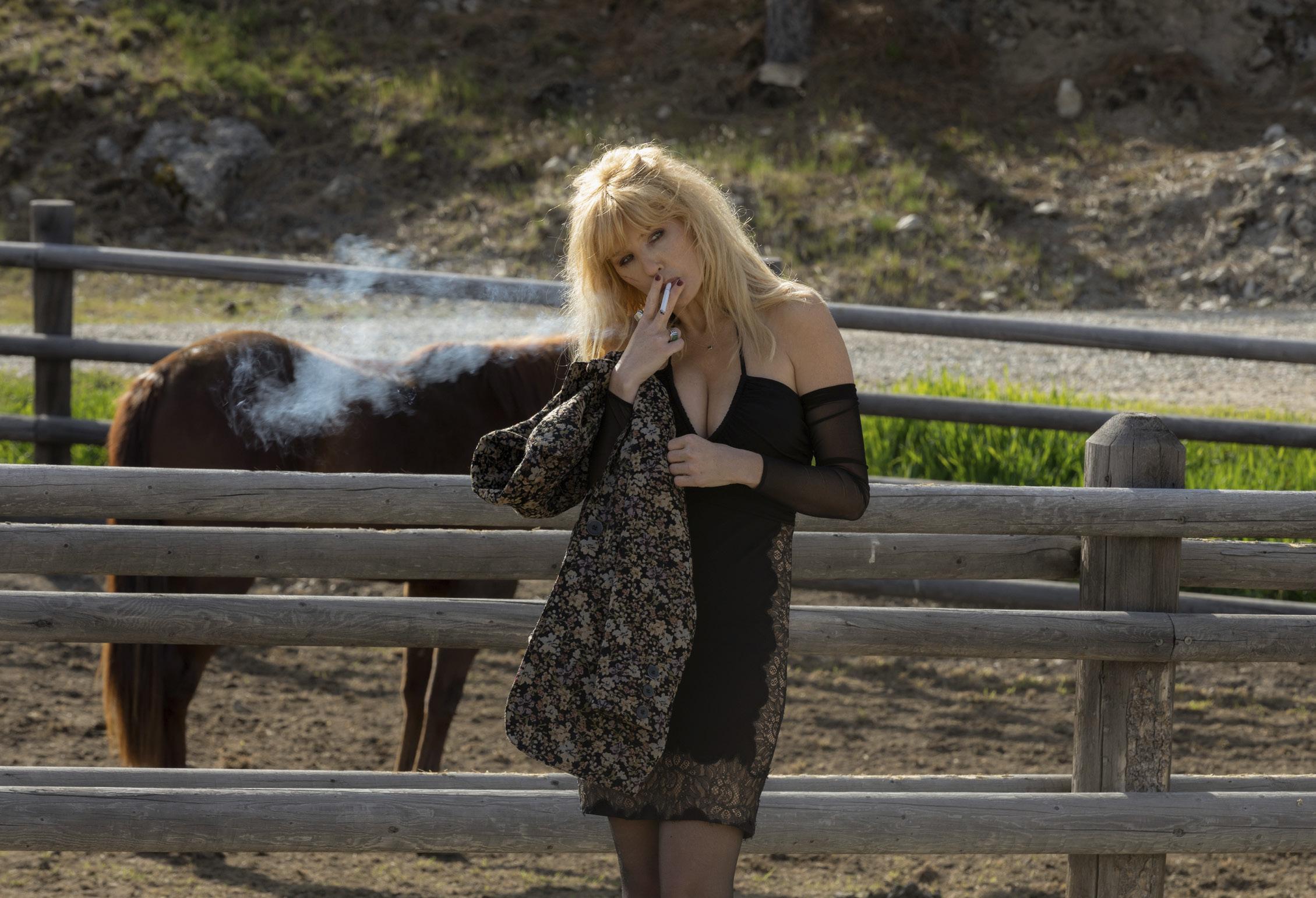
65 DECEMBER 2022
OPPOSITE/ABOVE: PARRY AND VOROS ARE FOND OF SAYING, “ YELLOWSTONE IS A DOCUMENTARY THAT WE HAVE THE PLEASURE OF STAGING.” AS A-CAMERA OPERATOR SCOTT DROPKIN, SOC, ADDS: “THE CAMERA IS AN OMNISCIENT OBSERVER RATHER THAN AN INTERPRETER OF THE SCENE. IT’S THERE TO DOCUMENT THE REALITY OF THE UNFOLDING MOMENT.”
LOCAL 600 CREW
Directors of Photography
 Christina Voros
Mike Parry
A-Camera Operator Scott Dropkin, SOC
Christina Voros
Mike Parry
A-Camera Operator Scott Dropkin, SOC
A-Camera 1st AC Timothy Clarke
A-Camera 2nd ACs Austin Green
B-Camera Operator Abby Linne B-Camera 1st AC Lawrence Lim B-Camera 2nd AC Kurtis Burr
C-Camera Operator Britt West C-Camera 1st AC Lee Jordan
C-Camera 2nd AC Michael Piccola
D-Camera Operator Jed Seus D-Camera 1st AC Jason Wittenberg
D-Camera 2nd AC Dan Marino Utilities Emmett Crockett Sophia Basiliadis Mark Tomov Digital Loader Kyle Jacobs
Still Photographers Emerson Miller Roger Snider
SEASONS 1 & 5

“EVERYONE ON SET HAS AN EXPERIENCE OF PUTTING THEIR FINGERPRINTS ON THE WORK, AND EACH CAMERA IS A DIFFERENT KIND OF PAINTBRUSH.”
– CHRISTINA VOROS

68 DECEMBER 2022
FEATURE

3
Flyboys
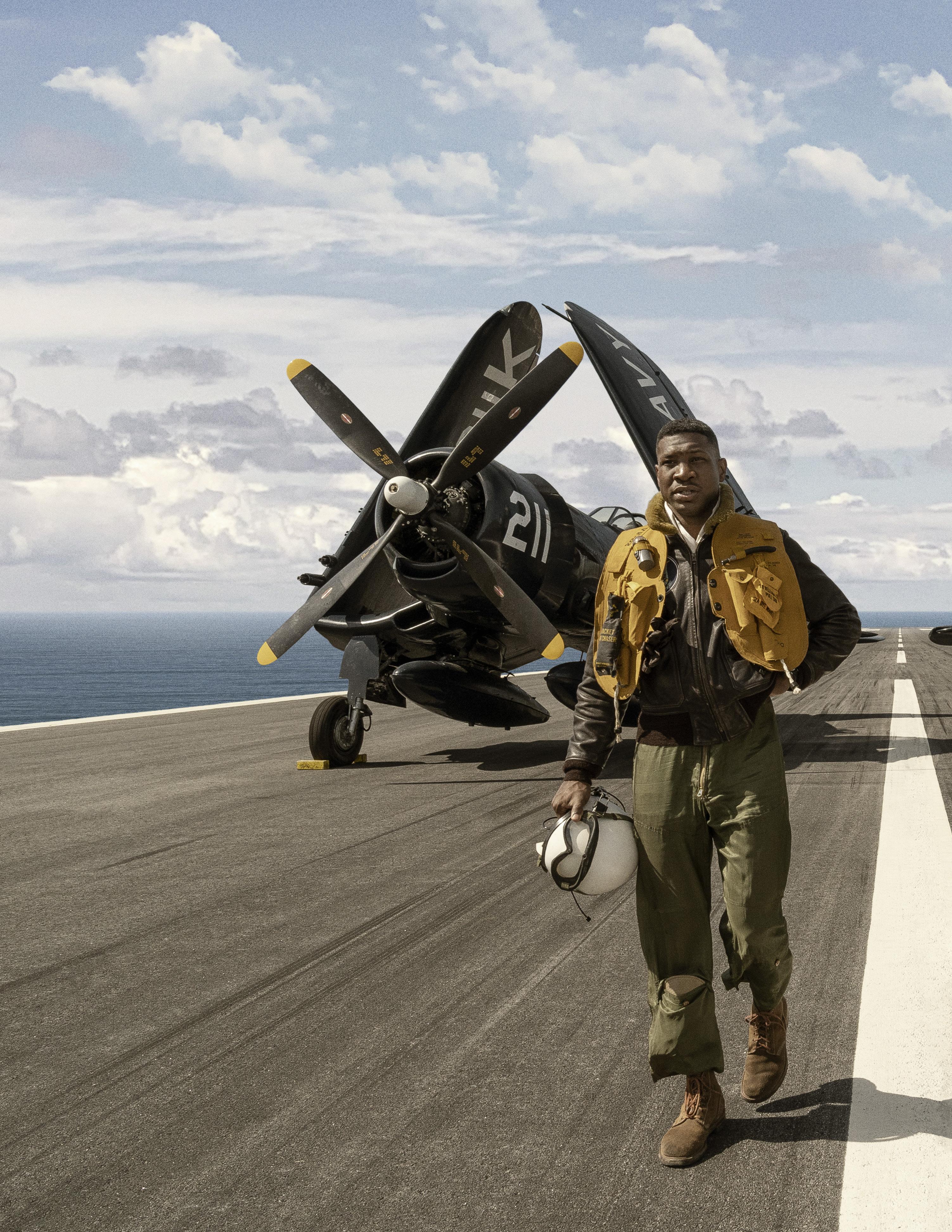
 Erik Messerschmidt, ASC, goes “above” and “beyond” for Sony Pictures’ Korean War-era drama, Devotion
by Kevin H. Martin
Photos by Eli joshua Adé / Sony Pictures Entertainment
Erik Messerschmidt, ASC, goes “above” and “beyond” for Sony Pictures’ Korean War-era drama, Devotion
by Kevin H. Martin
Photos by Eli joshua Adé / Sony Pictures Entertainment
Devotion tells a true-life story from America’s forgotten war, aka the Korean “conflict,” that focuses on naval aviators Jesse Brown (Jonathan Majors) and Tom Hudner (Glen Powell). After his plane was shot down over Korea, Brown died in his aircraft. His efforts and sacrifice were posthumously recognized with a Distinguished Flying Cross and, later, the naming of a frigate after him. Powell, who also served as a producer on the film, began the journey of bringing the interracial drama to the screen. Derived from a popular book by military historian Adam Makos, Powell approached Los Angeles-based film finance and production company Black Label Media, whose past projects include La La Land, Sicario and the upcoming I Wanna Dance with Somebody (page 36).
Black Label then went to two of the wizards behind the visual acrobatics displayed in this year’s mega-hit, Top Gun: Maverick [ICG Magazine June/July 2022] – Helinet Aviation aerial coordinator Kevin LaRosa II and aerial DP Michael FitzMaurice. “When I came on, the director hadn’t yet signed, so there was no director of photography or production designer,” FitzMaurice recalls. “They wanted to know what was possible to achieve practically, and how much it would cost. Since we were talking about aviation on an enormous scale – for a period film – this was a smart and reasonable way to evaluate the project before going forward. It involved finding out which period aircraft were still available, whether they could be used, and what it would take to film them.”
FitzMaurice, Director JD Dillard ( Sleight , Sweetheart ), and LaRosa II broke the scripted sequences down into choreography using stick models shot on video. “This gave

72 DECEMBER 2022

73 DECEMBER 2022
ABOVE: ERICK MESSERSCHMIDT, ASC WHO WON HIS OSCAR [FOR MANK ] WHILE FILMING DEVOTION IN GEORGIA, SAYS HE FELT STRONGLY “THAT THIS MOVIE SHOULD LOOK ELEGANT. IT REFLECTED A CERTAIN CLASSICAL APPROACH, WHERE WE NEVER DRAW ATTENTION TO THE CAMERA WORK.”
everyone an idea of the kinds of shots we felt needed to be done that were achievable,” FitzMaurice elaborates. “The next phase was determining the quality of light each sequence might be shot under, which informed where and when it could be shot. Calculating how many shots could be captured during any given sortie was another huge aspect. Production made what I felt was a wise decision, committing to getting as much in camera as possible; VFX solutions for aviation sequences often look cartoonish, simply because it’s hard to get the physics right.”
Dillard could not have been a better fit
for Devotion . The son of a pioneering African American military pilot who flew with the Blue Angels, he says that while a more traditional narrative approach – such as dramatizing the lead character Brown’s overcoming immense obstacles in flight school – might have been proper grist for a film made twenty years ago, “I felt it would be more interesting to tell the story of, ‘What do you do after you’ve gotten there?’ while also dealing with his terrible isolation.”
Dillard recruited Oscar-winner Erik Messerschmidt, ASC [ICG Magazine April 2021], as his director of photography to best
determine a visual approach that was both cinematic and emotionally in tune with the character-driven drama. “Time, money, and reality try to eat you up while you struggle to hold your creative own against them,” Dillard admits. “With the aerial stuff, we wanted to find a sense of intimacy with what happens in the air, rather than the usual long-lens approach. ‘Be close and shoot wide’ let us feel the paper-clip-and-bubble-gum aspect of what went into keeping these planes up in the sky. That proximity was possible with the era’s warbirds, since there wouldn’t be the safety concerns that come with
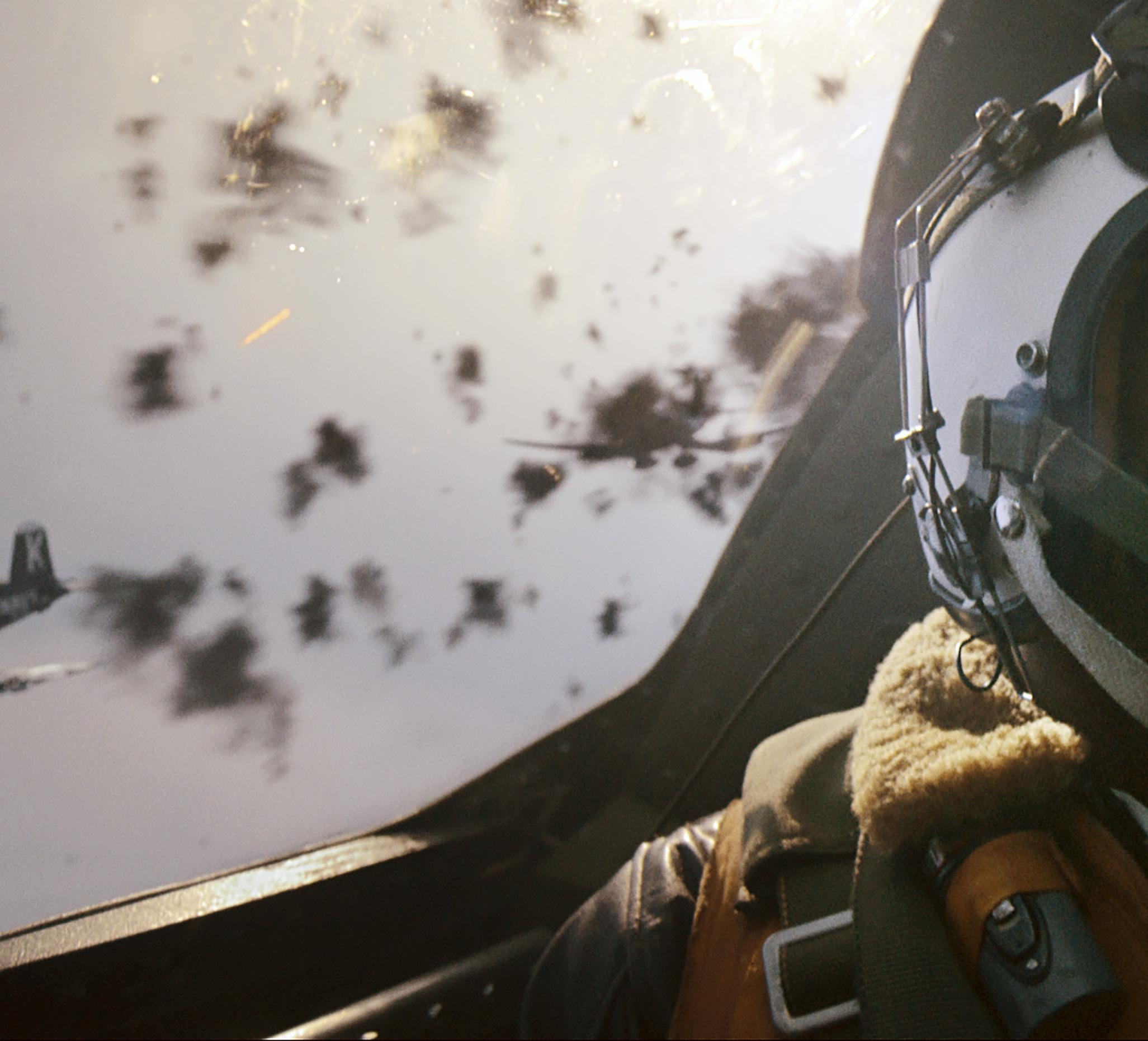
74 DECEMBER 2022
contemporary jet blasts.”
“I felt strongly that this movie should look elegant,” adds Messerschmidt. “That reflected a certain classical approach, where we never draw attention to the camera work since we’re focused on telling the story of these characters.”
Another advocate for the in-camera approach was VFX Supervisor Brian Connor. “All through preproduction, Brian kept saying, ‘The more real stuff you can provide, the better the CG we do have to create will look,’” FitzMaurice recounts. “We couldn’t come up with twenty of these planes, so
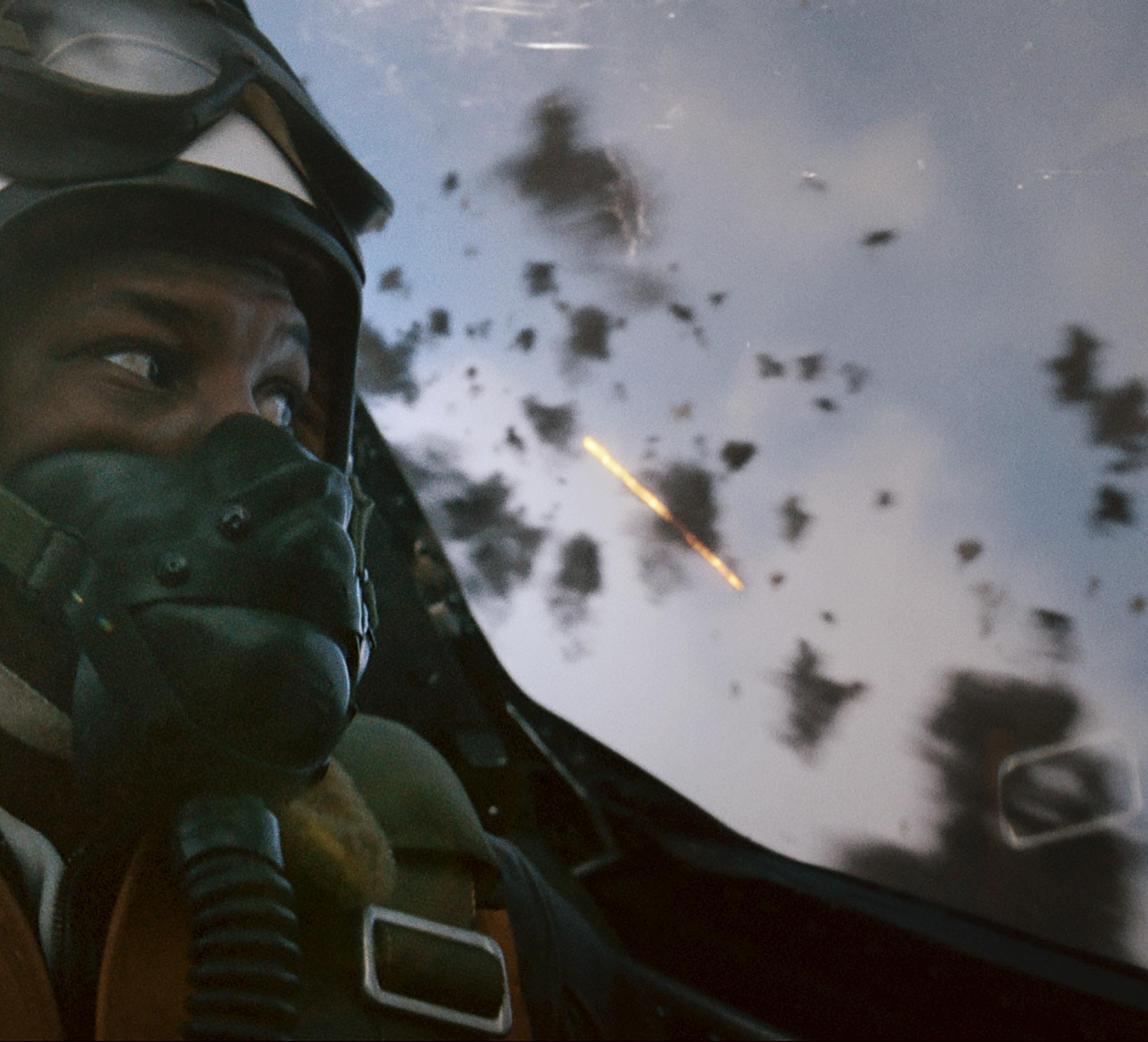
everybody knew CG was going to factor in. So, we agreed to keep our planes in a position where they would be closest to camera, so VFX had a good reference to match but didn’t have to withstand scrutiny since they were further off. We told the Devotion team that they should track the movement of a real aircraft so they could see for themselves all the aberrant motion that occurs when you’re up shooting these things. So, when you’re adding CG craft, you need to take that oscillation and offset it, because none of these vessels would exhibit the same kind of deviation in movement.”
The visual brain trust of Dillard, Messerschmidt and FitzMaurice soon found themselves crawling around vintage Corsair fighter aircraft to find the best spots to place cameras. “In certain ways, this work exceeds Top Gun: Maverick , because we had greater access to the aircraft, which came from museum and private owners rather than the military,” describes FitzMaurice. “Craig Hunter, at Safari Technologies, builds a lot of rigs for stunts done with cars and motorcycles, and I had his guys come out to devise custom mounts. The aircraft tail would be removed, and then the mounts were bolted right into
75 DECEMBER 2022

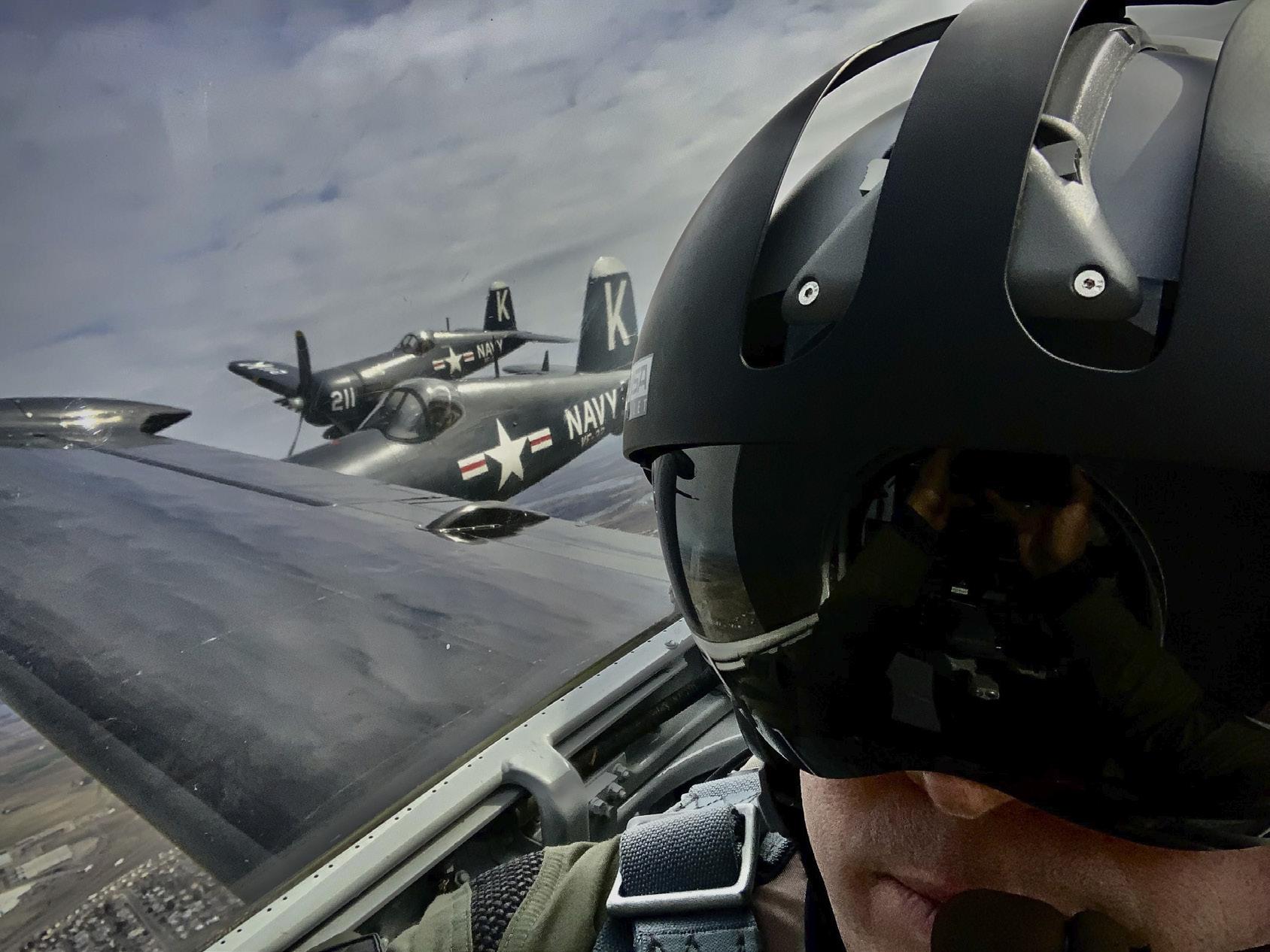
76 DECEMBER 2022
ABOVE/BELOW: AERIAL DIRECTOR OF PHOTOGRAPHY MICHAEL FITZMAURICE SAYS “WE COULDN’T COME UP WITH TWENTY OF THESE PLANES, SO EVERYBODY KNEW CG WAS GOING TO FACTOR IN. WE AGREED TO KEEP OUR PLANES IN A POSITION WHERE THEY WOULD BE CLOSEST TO CAMERA, SO VFX HAD A GOOD REFERENCE TO MATCH BUT DIDN’T HAVE TO WITHSTAND SCRUTINY SINCE THEY WERE FURTHER OFF. “ / PHOTOS COURTESY OF MICHAEL FITZMAURICE
factory holes in the aircraft, so I could have up to four cameras on the hull.”
For air-to-air work, LaRosa II had designed and built the CineJet for Maverick . “When Devotion came along, we had refined CineJet, adding more cameras, so it, along with an A-Star helicopter with K1 gimbal, became amazing platforms for working with these Corsairs that feature in so much of the action, since their speeds were similar,” FitzMaurice continues. “On Maverick we had to keep slowing the jet down to get good shots.”
Capture methodologies ranged from Sony VENICE on air-to-air work to RED KOMODOs mounted to aircraft. For down-to-earth scenes, Messerschmidt chose a Panavision DXL2 with a RED sensor. “The VENICE’s dynamic range worked all the time, whether you were in direct sunlight or fully backlit,” states FitzMaurice. “The cameras had internal ND that allowed changes to be made quickly. RED’s [6K] Komodo had only just come out, but size-wise they were ideal to go on the plane exteriors. Plus, one-terabyte cards from ProGrade became available just as we got started, so that allowed us sufficient record time on each sortie.” Mixing formats is often not favored among cinematographers, but “Erik and I had the same theory,” FitzMaurice
continues. “We’re not a factory racing team that has to use everything from our sponsor. Instead, we combined the best and most useful cameras and lenses. Erik knew he could get them to live together in post despite color temperature differences.”
Messerschmidt says Light Iron colorist Ian Vertovec was deeply involved in making sure all the various formats felt like they lived in the same world. “Ian had worked up a LUT early on with a bit of a Kodachrome look,” he notes, “minus some magenta, pushing green. The film has a very specific look, and much of it is an olive-green/olive-drab tone.”
Early plans for shooting in Vancouver were scotched by COVID restrictions. So, Production Designer Wynn Thomas was tasked with finding an alternative. “We landed on Savannah, Georgia,” Thomas recounts. “It isn’t quite like Atlanta, crew-base wise, but I felt there would be enough visual diversity to allow for scenes in Korea and Cannes as well as various domestic settings.” The midstream course correction was eased owing to the teamwork and sensibilities of his collaborators. “Erik understands exactly what production designers do, which facilitated exchanges of ideas between us,” Thomas acknowledges. “After we studied a lot of research materials
together, I came up with an overall conceptual approach, which I shared with Erik and JD. We chose to maintain a limited color palette until the story reaches Cannes, where we introduce some pops of color. Then we drain the image down to near-monochromatic levels in the last third during the Korean War scenes.”
The decision to shoot with a DXL2 was made after testing several options. “I’ve been a loyal RED shooter and enjoy that sensor,” Messerschmidt shares. “JD and I went to Panavision for a camera body they had put together for the RED camera. We wanted a lens that had a vintage feel but still had elements of modernism, and they built that glass specifically for us.” A-Camera First AC Alex Scott adds that “Erik wanted to shoot large format, so he selected Panaspeeds, and then worked with Dan Sasaki to detune the lenses. That exaggerated the bokeh at T-1.4, which is the stop where we shot most interiors and night exteriors. It made the focus challenging, but having a great dolly grip in Dustin Von Lossberg and A-camera operator in Brian Osmond helped make my life easier.”
Dillard says he wanted to establish the visual theme early in the story. “At the top of
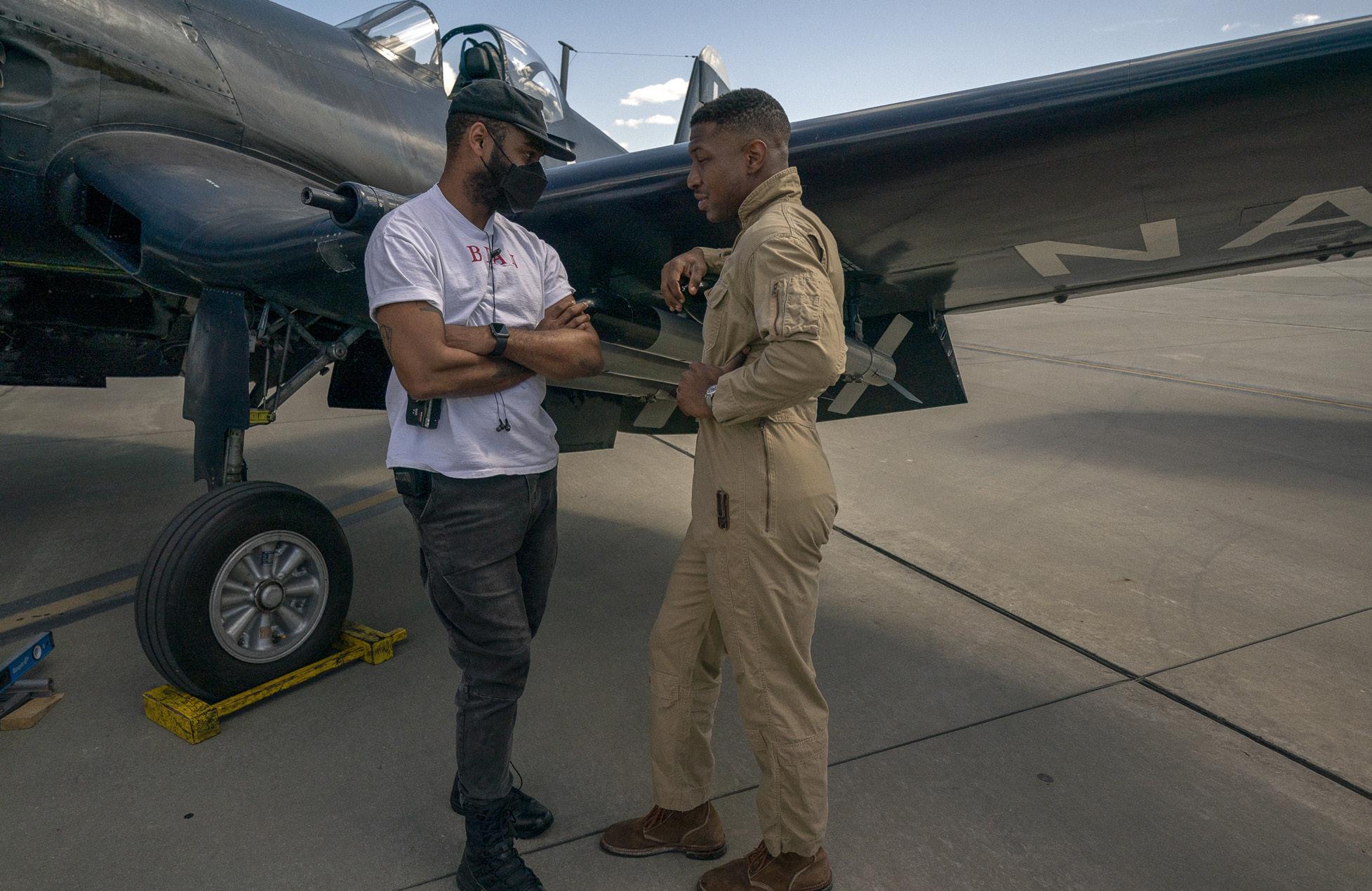
77 DECEMBER 2022
DIRECTOR DILLARD (LEFT) SAYS “WE WANTED TO FIND A SENSE OF INTIMACY [FOR THE AERIAL SCENES], RATHER THAN THE USUAL LONG-LENS APPROACH. ‘BE CLOSE AND SHOOT WIDE’ LET US FEEL THE PAPERCLIP-AND-BUBBLE-GUM ASPECT OF WHAT WENT INTO KEEPING THESE PLANES UP IN THE SKY.”
the film, Jesse and Tom get in Bearcats and go on their first flight together,” he relates. “I felt that all had to be in-camera to establish the aviation aesthetic we’d maintain throughout. We took the real actors up in the back of a two-seater Sea Fury, which let us get shots of them in the back seat during actual flight maneuvers. In addition to all the bonuses from doing it for real, it provided a precise guide when it came to duplicating the look –the subtle vibrations and what the light was doing – when shooting other cockpit scenes against the LED wall, which we had to do at the tail-end of production with a number of shots that were too dangerous or logistically impossible to do with the actors in the air.”
Messerschmidt adds that “we came from a place of realism in terms of where the light came from, but we wanted the lighting to reflect a location’s dramatic and emotional needs as well – natural, but also a bit hyperreal in a painterly way. When they learn that their ship is going off to war, we made things a lot more contrasty, departing from a strict representation of how things looked onboard a carrier.
“We did start with a self-lit look for the ship interiors built by Wynn,” he continues, “so just when you walked in, there was a sense
of reality present. But I’d add lights and certain color values for aesthetic reasons. And there was also the practical aspect of finding tools that fit into available spaces; we wanted to give JD many visual options while remaining minimally invasive for the actors’ sake.”
“The art department often provides lighting used by the cinematographer when there are built-ins for sets,” affirms Thomas. “That’s part of what makes for such an intense collaboration. We got Navy assistance and toured the Yorktown in South Carolina to make sure we got the details right. The colors wound up being changed somewhat because our story mandated a darker look, but being able to see the real thing was invaluable. The production designer makes initial choices; then [Chief Lighting Technician] Danny [González], Erik, and the set-decorating team put their heads together to make it work for the scene.”
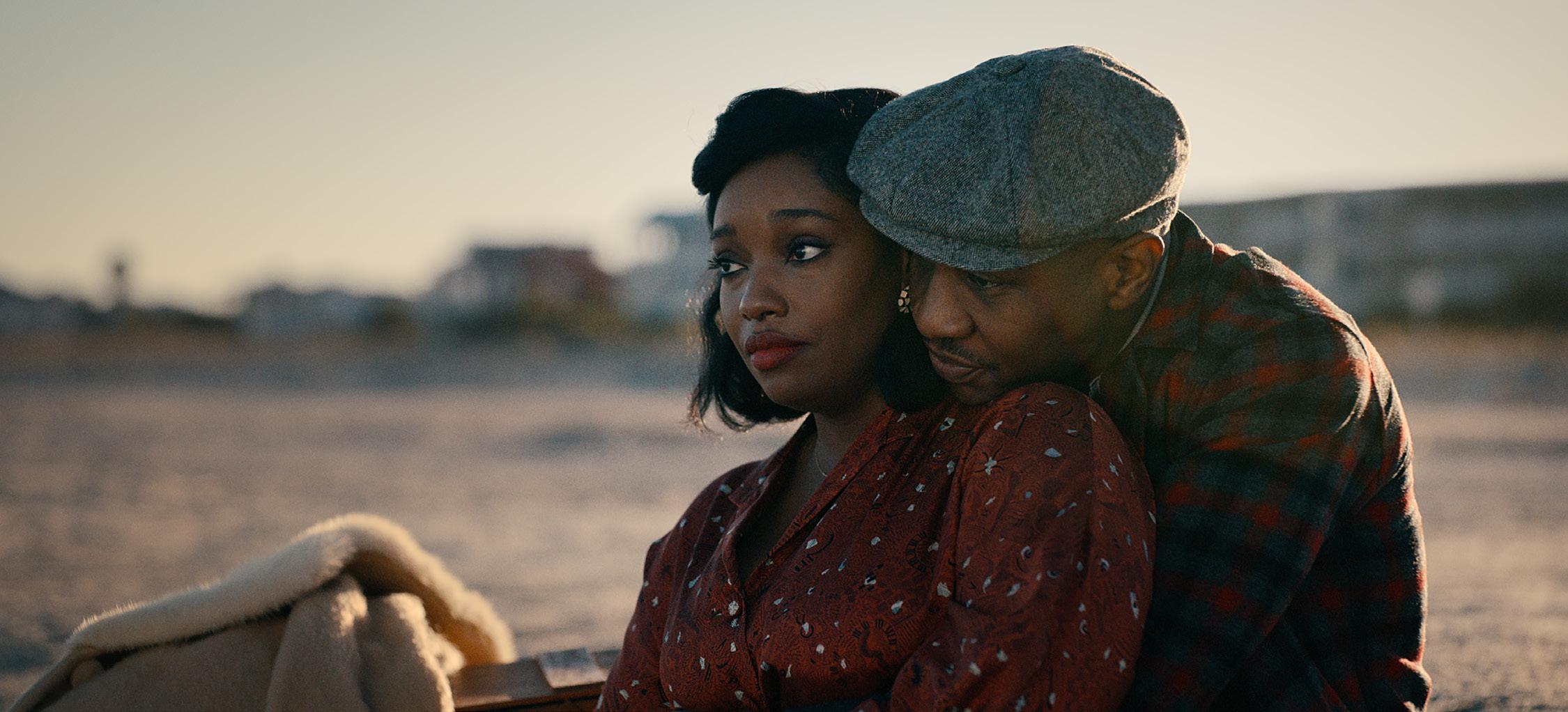
Exterior views of the carrier posed a distinct challenge. As Dillard explains: “There are four or five of these ships still afloat in the U.S., probably all floating museums. But the workability would have been problematic, as two key issues were having a practical carrier tower with real planes moving in front of that. Everybody
agreed the best approach was using an existing airfield and then having Wynn build the tower. That would allow us to show actors exiting the tower while these planes took off and help to sell the working aspect of the carrier. So, a runway at Georgia’s Statesboro Bulloch Airport became our carrier.”
While Messerschmidt estimates 95 percent of the film was shot on a dolly, other tools were involved, especially when executing lengthy oners. “JD liked the idea of telling the story in one shot when possible,” A-Camera Operator Osmond observes. “It doesn’t always work, but oftentimes we could play scenes in one or with a minimum number of shots. We used the Ronin for some of them, like a crane drop-off from a 45-foot Scorpio that featured significant elevation changes following the performers. That’s great fun for an operator, as it requires planning and thought to both stylistic and technical matters. It took a lot of confidence on JD’s part because it meant you can’t pace the scene up or take out a reaction in editing; you not only have to get it right, you also have to live with it afterward.”
Messerschmidt, who’s worked for years with Osmond, notes that “we also had Jessica Clarke-Nash on B-Camera, and both she and Brian
78 DECEMBER 2022
became intimately involved with how
A-CAMERA FIRST AC ALEX SCOTT SAYS MESSERSCHMIDT SELECTED PANASPEEDS TO PAIR WITH THE LARGE FORMAT CAPTURE, AND THEN WORKED WITH PANAVISION’S DAN SASAKI TO DETUNE THE LENSES. “THAT EXAGGERATED THE BOKEH AT T-1.4, WHICH IS THE STOP WHERE WE SHOT MOST INTERIORS AND NIGHT EXTERIORS,” SCOTT NOTES. “IT MADE THE FOCUS CHALLENGING, BUT HAVING A GREAT DOLLY GRIP IN DUSTIN VON LOSSBERG AND A-CAMERA OPERATOR IN BRIAN OSMOND HELPED MAKE MY LIFE EASIER.”
the actors were working as staging processes developed.”
Osmond recalls a barracks setup where Brown angrily confronts himself while staring into a mirror. “The shot starts with the actor staring straight ahead, but as it progresses, the camera swings out in a curve, revealing the mirror,” he notes. “Key Grip Jim Shelton is a clever man, with a sense of preparedness that facilitates how he can achieve all sorts of things. We used a circular track with a very tight radius – I think it was on a Cobra dolly, probably with the Ronin head – and as we swung the camera around, Jim could slide the track-articulated mirror into place after the camera moved out. It required a ton of coordination, and getting the timing right was a neat little challenge for us all.”
When the pilots deploy to Korea , their carrier stops at Cannes, allowing a brief overnight sojourn, where a charmed Elizabeth Taylor invites Brown to a casino. “The majority of that set was lit with practicals,” notes González. “Then we enhanced that with our movie lights – a lot of Kino Flo Freestyles, LiteMats, ARRI SkyPanels with Chimeras, and standard China balls – and added edge or
backlight when Erik needed them.”
The Cannes scenes required Thomas to find a locale that would emulate the famously popular European city. “We were able to find cobblestone streets nearby that worked for Cannes,” he remembers. “In fact, there wasn’t an overreliance on set extensions or expensive set builds, though we did a lot of set decoration and window treatments.”
VFX Supervisor Connor explains the transformation of Savannah’s River Street into Cannes. “Our part came with the left side of the street, where palm trees, boardwalk beaches, and the far background are all matte painting and VFX – even the people on the beaches. When the main unit was doing crane shots on the street, I asked for extras to be moved farther away from camera, as that way we’d have groups of people in the distance to populate the set extension. There were only a hundred extras, but this maximized them, so we were able to tile them out farther back in frame.”
Later, the carrier’s marine group goes into battle and finds itself pinned down, but Brown and his squad fly in to turn the conflict. “The battlefields in Korea were another big art direction issue,” recalls Thomas. “We found two fantastic locations twenty
minutes outside Savannah that required major alteration. Part of that was being able to create vistas that allowed room for CG set extensions and tied aircraft VFX to the action on the ground so we could see how close the planes were passing above the soldiers. My process is still to do traditional drawings when designing, then I work in tandem with storyboard artists to articulate the sequences and to develop previs as needed.”
To illuminate that night-battle scene, González had a large softbox filled with Vortex 8s suspended from a 100-ton crane. “That acted as our moon source,” he explains. “We had Studio Forces hung from the leading edge that simulated gunfire and explosions, plus two Pettibones with 20 feet of truss sticking off the end, with more Studio Forces on that directly above our actors to create closer interactive light. For deep background, SFX set up large tubes of smoke – we called them ‘tubes of death’ – so Erik’s lights had something to interact with, plus another thirty to forty Studio Forces.”
Brown and his squadron succeed, but he’s shot down and trapped in his plane. Hudner deliberately crash-lands his plane in a desperate but unsuccessful attempt to save his wingman, a sequence that involved a

79 DECEMBER 2022
oner requiring “a ton of CG stitching,” recalls Messerschmidt. “We started with previs to work out all the handoffs between different camera passes, as we start with the camera out on the wingtip as the plane descends and hits, which shows our actor in a mockup being dragged along at speed.”
Osmond notes that the shot also required some LED wall work plus a switch to handheld as the pilot exits and makes his way toward Brown. The major use of LED wall came with the remaining cockpit shots, done at the end of the film’s schedule. “To make them match the shots of our actors in flight, we kept in mind all the limitations of the real shoot,” Messerschmidt explains. “To add to the excitement of the battle, we had interactives going off to simulate anti-aircraft fire, along with practical smoke and nitrogen provided by SFX supervisor J.D. Schwalm, who was also working the plane’s gimbal.”
Osmond was struck by the sophistication of the gimbal setup. “The plane featured a forced-perspective tail right behind the cockpit, and the large LED screen played back imagery behind that. Schwalm had the gimbal linked to the screen in a way that when the gimbal went one direction, the LED screen imagery would depict a countermovement, so everything appeared to be happening in sync.”
Monolith Studios Executive Vice President Fred Waldman helped trailblaze an early LED wall approach on Gravity , ran point on the system’s use for First Man , and served as lead LED architect on The Mandalorian
[ICG Magazine February/March 2020].
Waldman says “a key to making the wall work is having the right amount of space on stage. The stage [for Devotion ] had plenty of height, which allowed us to fly the LED wall, which was nearly nine meters tall, raising or lowering it depending on how Erik varied his camera angle.”
Waldman strives to incorporate what he calls “production functionality” into each volume as it is built. “Every department should be able to come in here and work the volume like it was just another set,” he states. “This functionality is achieved by anticipating their needs; if there is stunt work, you set things up with space set aside for them to do their rigging. On Devotion , we added some color tools for Erik, giving him options beyond what the media server was capable of offering. These bolt-on controls were in a similar vein to what you’d find on a Da Vinci and provided that same kind of control, so Erik could adjust colors on the fly.”
González says his interactive lighting for the cockpit came from an overhead softbox with six-foot Studio Force units. “We also had three-sixties on the ground bouncing into twelve-by-twenties for soft ambient fill, a few Vortex 8s on the ground for a gunfire or explosion effect, and on occasion added some Astera tubes around the cockpit,” he reveals. The final touch to make the shots live was the use of a light to simulate the sun’s changing position as the plane appeared to bank and maneuver. “We removed the original
housing on a 12K incandescent bulb to build one that had a smaller footprint,” González adds. “More importantly, this let us bypass the Fresnel lens to get a harder [sun-like] shadow.” The fixture was then mounted to a remote head and Technocrane.
“Since the camera was locked off, I wound up operating the remote head myself,” Osmond reports. “I could in essence reposition the sun by swinging the light via the wheels in an arc through 3D space, corresponding to gimbal and LED screen changes. You got all those moving light hits on the cockpit, which helped sell the illusion of real flight.”
To facilitate the VFX work done by principal vendor DNEG and The Distillery, an ACES workflow was implemented at Light Iron. Messerschmidt and Vertovec performed preliminary pre-grades to guide the post houses, with Vertovec’s remaining DI work done as the VFX shots trickled in during the months to follow.
“Erik and I often talked about how this film reflects a collision between modernity and a more classical approach,” concludes Dillard. “Because it takes place in 1950, the last thing we wanted to do was pour the molasses of ‘period piece’ over the movie – plus, this isn’t exactly a prevalent genre in cinema right now. That said, it was still a dream for us to deliver the big feel of dramas we grew up with. Ultimately, I think we struck a balance that employed a modern lens while embracing the aesthetics that we both love so much.”
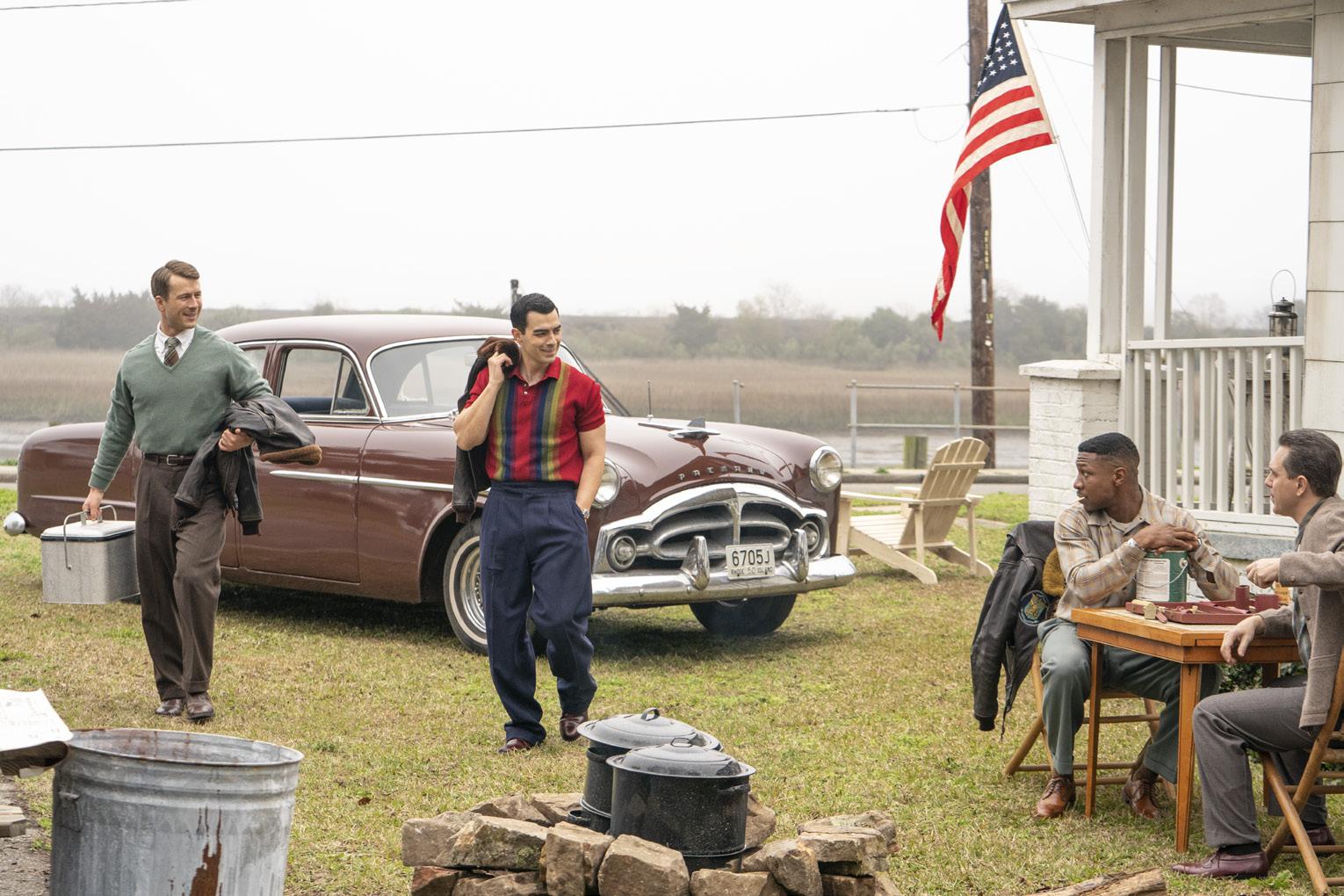
80 DECEMBER 2022
WHEN COVID RESTRICTIONS SCOTCHED SHOOTING IN VANCOUVER, PRODUCTION DESIGNER WYNN THOMAS LANDED ON SAVANNAH, GEORGIA. “IT ISN’T QUITE LIKE ATLANTA, CREW-BASE WISE,” HE RECOUNTS, “BUT I FELT THERE WOULD BE ENOUGH VISUAL DIVERSITY TO ALLOW FOR SCENES IN KOREA AND CANNES AS WELL AS VARIOUS DOMESTIC SETTINGS.”


81 DECEMBER 2022
MESSERSCHMIDT (LEFT AT CAMERA) SAYS THE DEVOTION TEAM WANTED TO “COME FROM A PLACE OF REALISM IN TERMS OF WHERE THE LIGHT CAME FROM, BUT WE WANTED THE LIGHTING TO REFLECT A LOCATION’S DRAMATIC AND EMOTIONAL NEEDS AS WELL – NATURAL, BUT ALSO A BIT HYPERREAL IN A PAINTERLY WAY.”

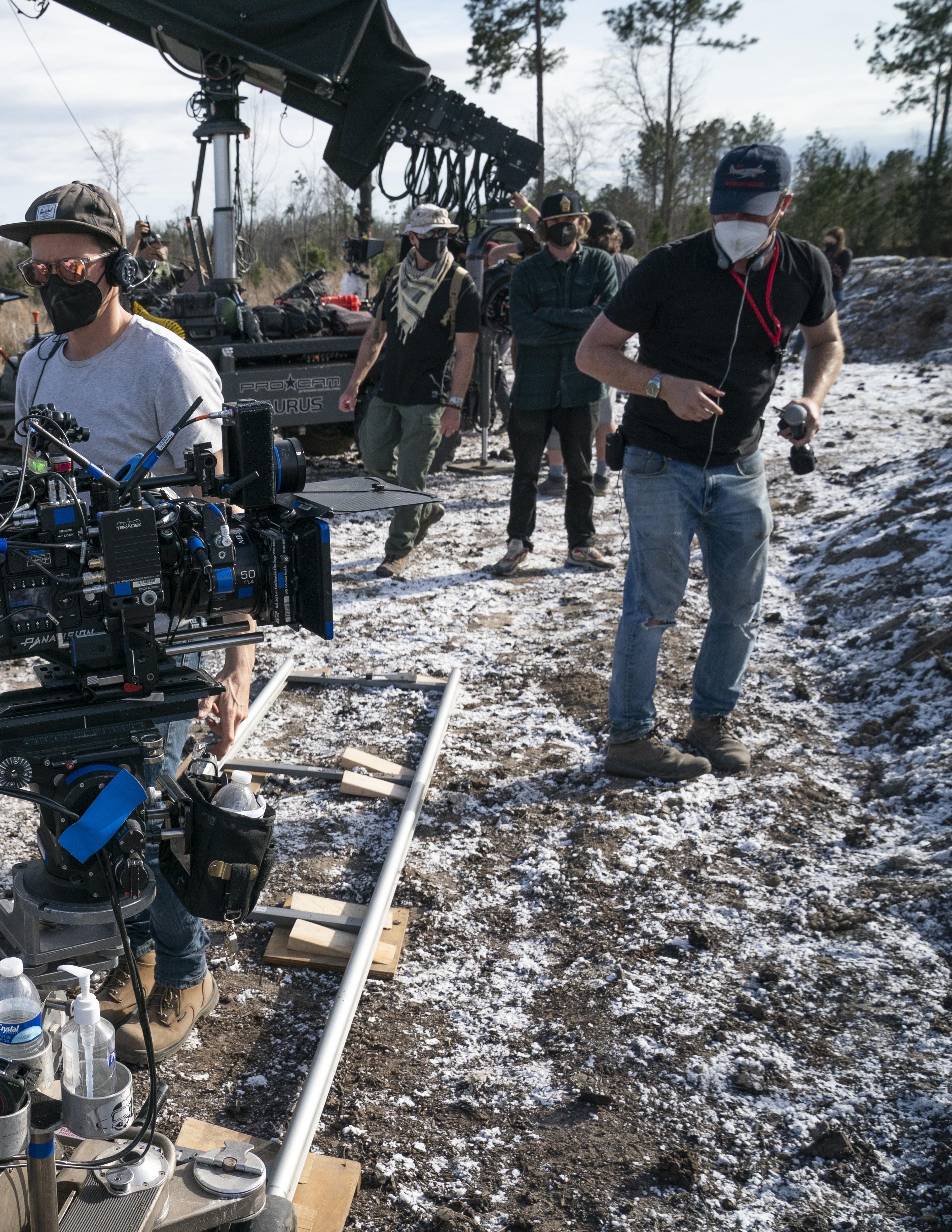
600 CREW Director of Photography Erik Messerschmidt, ASC A-Camera/Steadicam Operator Brian Osmond A-Camera 1st AC Alex Scott A-Camera 2nd AC Nichole Firebaugh B-Camera Operator Jessica Clarke-Nash B-Camera 1st AC Brian Wells B-Camera 2nd AC Lauren Gentry C-Camera Operator Robert “Soup” Campbell C-Camera 1st AC Jonas Steadman C-Camera 2nd AC John Takenaka D-Camera Operator Alan Jacoby D-Camera 1st AC Steve Wolfe D-Camera 2nd AC Arturo Rojas Loader Lauren “Crash” Cummings Utility Kyle Ford Still Photographer Eli Ade Publicist Mitul Patel 2ND UNIT/AERIAL UNIT Director of Photography Michael Fitzmaurice A-Camera 1st AC Joseph Canon A-Camera 2nd AC Chris Marius Jones B-Camera 1st AC Luis Suarez B-Camera 2nd AC Chad Nagel DIT Calvin Reibman Loader Nicola Caruso Utility Alex Nieto Drone Pilot Cameron Fitzmaurice Drone Tech Marcel Melanson Shotover Techs Jared Slater Stephen “Bungee” Scherba
LOCAL
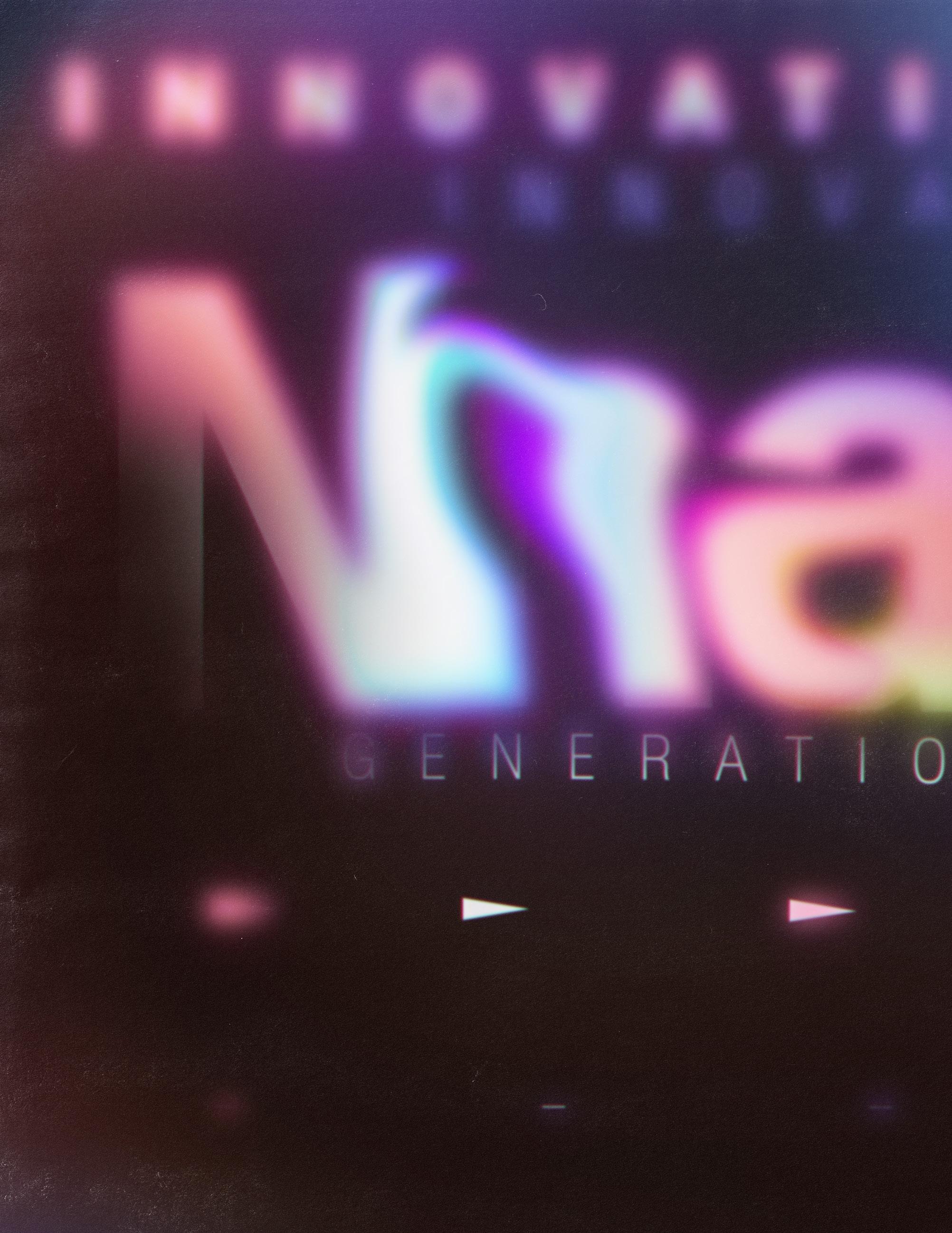 What makes someone an innovator? An internal drive to make something better? An external motivation to pursue progression, whatever the field or application? Or perhaps a community like this labor union, 2022 edition of Generation NEXT , ICG freelancer Margot Lester talked to some of the best and brightest new(ish) members of Local 600 who are advancing their jobs and this industry with innovative technologies, next level, using old-school gear in new-school ways, adapting and improving legacy systems, and making inroads toward improved representation. Perhaps the best definition of an innovator is simply someone
What makes someone an innovator? An internal drive to make something better? An external motivation to pursue progression, whatever the field or application? Or perhaps a community like this labor union, 2022 edition of Generation NEXT , ICG freelancer Margot Lester talked to some of the best and brightest new(ish) members of Local 600 who are advancing their jobs and this industry with innovative technologies, next level, using old-school gear in new-school ways, adapting and improving legacy systems, and making inroads toward improved representation. Perhaps the best definition of an innovator is simply someone
union, made up of the most dedicated, passionate, and, yes, creatively restless people in the world? For the technologies, creative problem-solving and unexpected improvisation. This year’s class takes art and craft to the someone who always sees the glass half-full and brimming with potential for something better.
 By Margot Lester
By Margot Lester
What makes someone an innovator? An internal drive to make something better? An external motivation to pursue progression, whatever the field or application? Or perhaps a community like this labor union, made up of the most dedicated, passionate, and, yes, creatively restless people in the world? For the 2022 edition of Generation NEXT , ICG freelancer Margot Lester talked to some of the best and brightest new(ish) members of Local 600 who are advancing their jobs and this industry with innovative technologies, creative problem-solving and unexpected improvisation. This year’s class takes art and craft to the next level, using old-school gear in new-school ways, adapting and improving legacy systems, and making inroads toward improved representation. Perhaps the best definition of an innovator is simply someone who always sees the glass half-full and brimming with potential for something better.
The 2022 Generation NEXT class is locked-in to enhance their crafts and on-set communities with different paths and methodologies.
The thing I appreciate most about Olga is her willingness to embrace new technologies with an inquisitive and calm demeanor,” notes 1st AC (and ICG National Vice President) Chris Silano. One of those advancements has been the ever-popular Preston Light Ranger. Notes Abramson, who was born in Kyiv, Ukraine, and raised in Philadelphia, “I like being able to help the DP, director and cast have the freedom and flexibility to make the film on their terms by being as unobtrusive and supportive as possible.”
Digital technology aside, Abramson’s first love is 35mm film cameras. “I’m a total film dork,” she laughs. “I love those old-school cameras and embrace the challenge of using them on a modern set in a modern work environment. They are beautiful machines that represent a bridge between the Victorian and digital eras. I have so much respect for the craftspeople who created them and the works they are used to produce.”
That devotion to film began with a work-study job as a projectionist, where, she says, “I first had the tactile experience of touching a print, and there was something very special about being a part of the process. At that point, I didn’t exactly know how movies were made, but I knew that they were captured on celluloid and projected by people like me to an audience.”
After graduation, Abramson was a prep tech at ARRI/CSC rentals. That’s where she first met Silano, who hired her several years later when she made the move to 1st AC. “Chris took a chance on me when I barely had experience, bringing me on to a high-stakes project [Uncut Gems] as the B-Camera focus puller,” she recalls. “It was trial by fire, and Chris encouraged me and was incredibly generous with his knowledge.” Silano adds: “It proved to be a highpressure situation where Olga’s skills, both technical and emotional, would shine. Olga is a true filmmaker, sensitive to the emotional cues of the drama. She delivers controlled focus pulls either gently or forcefully, as required by the intention of the scene.”
Abramson is a vocal advocate for more humane production days. She recognizes the improvements the Union is achieving and acknowledges there is more to be done. “The meal penalties and the safety rides and the hotels are nice, but what we all need are shorter hours. It’s hard to do your best when you’re falling apart.”
She’s also aware of the importance of showing more women in the camera department. “It’s frustrating that my Safety Pass card classifies me as an assistant camera man ,” she laughs wryly. “That kind of legacy language reminds people who identify as women that the dominant culture is still at work. Profiles like [ Generation NEXT ] send a more inclusive, encouraging message. Whoever reads this will see that a lady is doing this job, and that makes it more normal.” 1ST AC
PRODUCTION CITY: BROOKLYN, NY ICG MEMBER FOR 16 YEARS PORTRAIT BY ATSUSHI NISHIJIMA
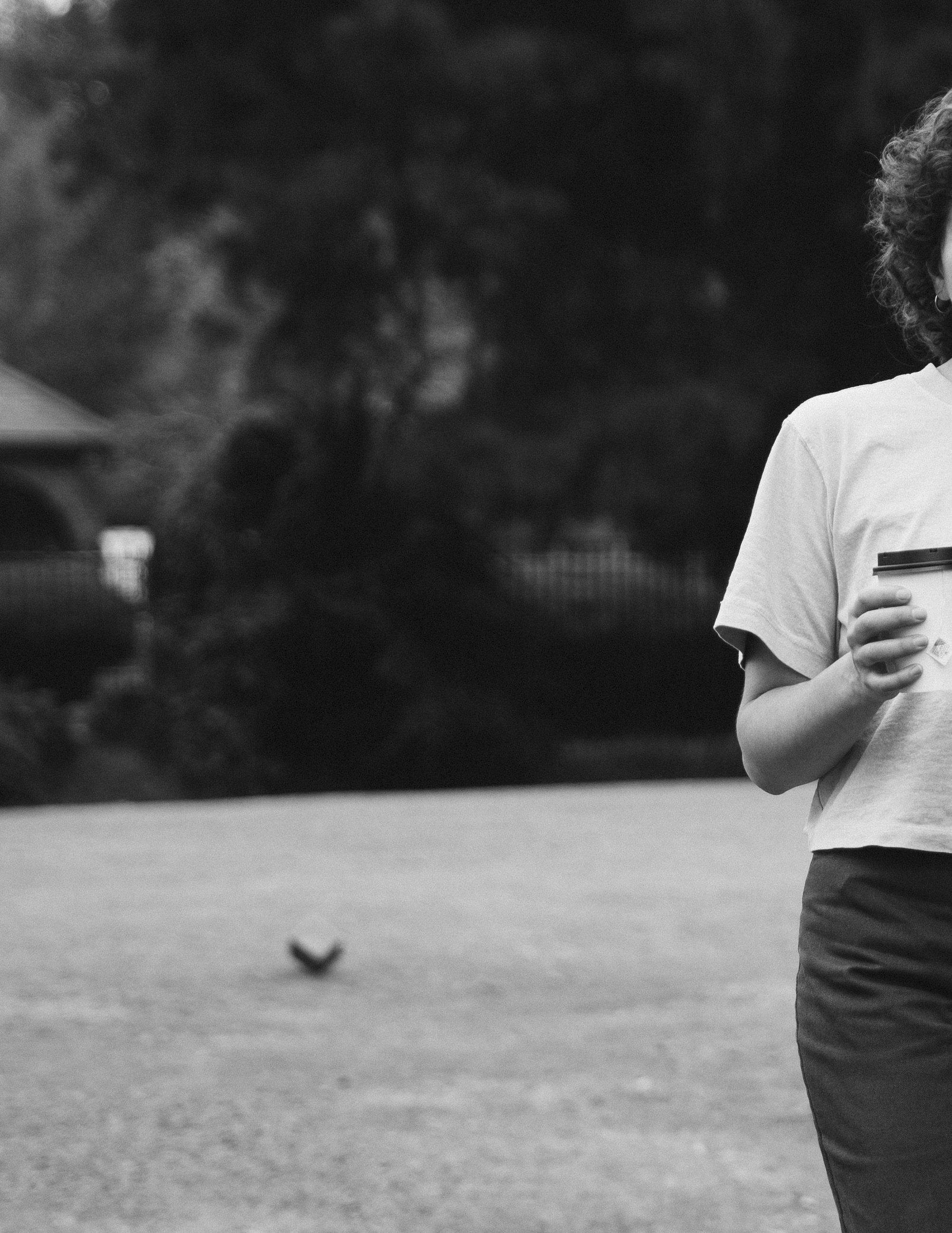
Olga

ABRAMSON
Andy BADER

DIT
PRODUCTION CITY: WILMINGTON, NC
ICG MEMBER FOR 15 YEARS
PORTRAIT BY DANA HAWLEY
“Andy Bader is a wizard,” declares Director of Photography Shana Hagan, ASC. “His skills as a DIT are top-notch.” Hagan’s words well-describe Bader’s key contributions to the FOX TV sitcom Welcome to Flatch, shot documentarystyle with a huge range of gear that includes the ARRI Mini LF, GoPros, iPhones, working prop Canon consumer video cameras, drones and live FaceTime calls on phones and laptops. “Andy is the only person on set I trust to help me set exposure and keep multiple cameras matching,” Hagan continues. “His dailies CDL’s are so helpful, and we do minimal corrections in our final color sessions.”
Hagan’s also a fan of what has become known on set as “The Bader Box.”
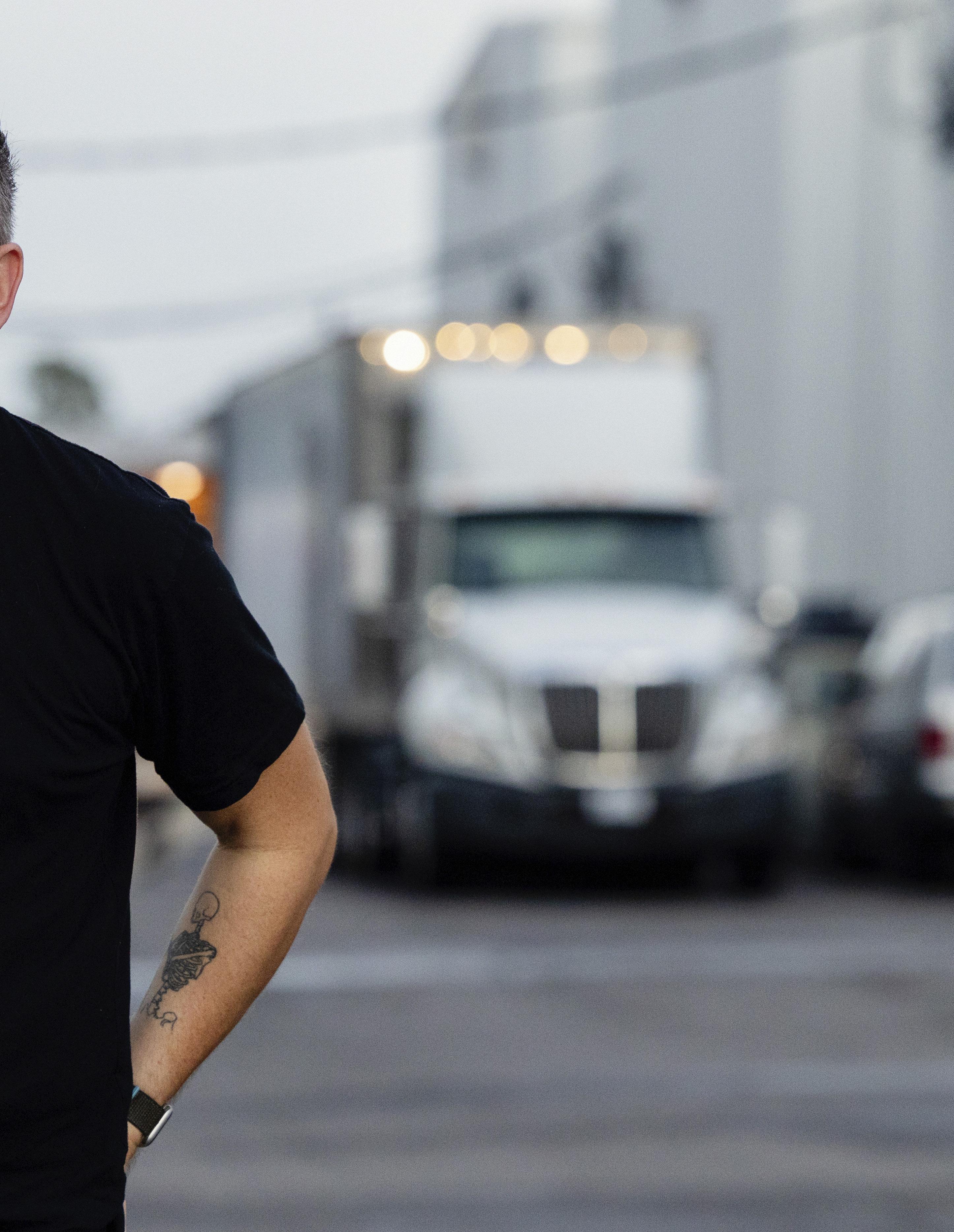
After Season 1, Production wanted to streamline the rigging for the show’s driving work, and Bader accepted the challenge. “Shana and the crew settled on a go-to camera setup: three GoPros, usually with one on the hood and one on each front window,” Bader recalls. “It worked, but it was a big, cluttered pile of technology that took a lot of time to set up and had a lot of failure points.”
To keep costs and failure points at a minimum, Bader used HDMI all the way to the transmitter, a consumer-grade 12-V HDMI splitter, and a multi-port 5-V USB power supply that could accept 12-V power input. He cut the cables to expose the bare copper wires and connected all the leads via a gold mount battery plate and two terminal blocks (one positive, one negative). A 12-V buck-boost converter in line with the positive lead of the battery ensured each device got a true 12 V, not 14 V or more. He added a four-pin XLR input with another voltage regulator and diodes to prevent power back-feeding from one battery to another.
To route all those cables and connections where the crew needed them, Bader bought HDMI and USB waterproof bulkhead connectors and made a patch bay on the side of the case. Connections and cable looms were colorcoded to make connection easy. He also deployed Solid Camera’s Wedgie2 to mount the Teradek transmitter so it could switch from the C camera to the box and power off the gold mount battery plate. A simple Pelican-style hard case held it all.
“Key Grip Stacy Barnhill helped me out with some D-rings, cheese plates and baby pins to mount it on a vehicle in pretty much any configuration,” Bader notes. “It’s not an incredibly complex box. The value lies in being able to keep everything built, protect it, power it all from one battery, and streamline it for the whole department to use. It was a great project for me to help out the department while I learned on my own, as I’m not an electrical engineer – which any electrical engineer reading this can probably tell!”
“Sam has such a great eye that I believe he should be a DP, but then I think he would be bored not focusing on all of the technology,” laughs Director of Photography Todd Dos Reis, ASC. “He is a mad scientist who enjoys working on the road less traveled. He knows the new advancements in film and television before they show up in the magazines.”
The duo first worked together for three seasons on Crazy Ex-Girlfriend [ICG Magazine September 2018], which featured three full musical numbers in each hour-long episode. “I would tell Sam what our visual references were, and he would do the research to see what film stock, camera, lights and developing processes were used for each one,” Dos Reis continues. “We had a great time researching and giving the right look for each music video.” (Perhaps not coincidentally, McConville says he’s the best DJ on set.)

McConville has always been into building things. The Bedford, U.K. native originally set out to be a carpenter. While pursuing a technical degree in that discipline, he took some film-study courses to fill out his schedule. “I discovered a lot of films that didn’t come to my local cinema, and my interest quickly changed,” he recalls. He moved to L.A. in 2009 on a grant to study TV and film production. His first union job after graduation was as a loader on Crazy Ex-Girlfriend . He transitioned to DIT between seasons. He’s since worked on the BBC’s Top Gear (“a very proud moment for me since I grew up watching it”), Bosch: Legacy, Promised Land, Kanye/Drake Benefit Concert, and The Late Late Show
His cart is populated with monitors, grading tools, scopes, a router, a switcher, etc. But he says his most useful tools “are meters for measuring the color of lights – primarily varied LED – to communicate with our CLT how to best represent color and temp on camera. I also use spectrum analyzers to coordinate wireless traffic on set to ensure everyone’s tech is functioning efficiently.” Recently, McConville has been working with the Frame.io camera to cloud (C2C). “I think there are plenty of positives to this tool,” he adds. “The immediacy is useful for collaboration and review. But, that immediacy is not always good, since we sometimes make changes to our look during or after a setup. With some fixes, I think C2C can be a useful way to communicate with postproduction.”
Sam
Dos Reis calls McConville a vital part of his camera team. “Sam has become the leader of my camera department – he and his DIT cart are my command center, where everything begins and ends,” Dos Reis asserts. “All three of our key departments – camera, grip and electric – go to Sam first and foremost when they have questions about anything under the sun. He never stops working, but he always makes himself available when one of us comes calling.”
DIT
PRODUCTION CITY: LOS ANGELES ICG MEMBER FOR 7 YEARS PORTRAIT BY TOBIN YELLAND
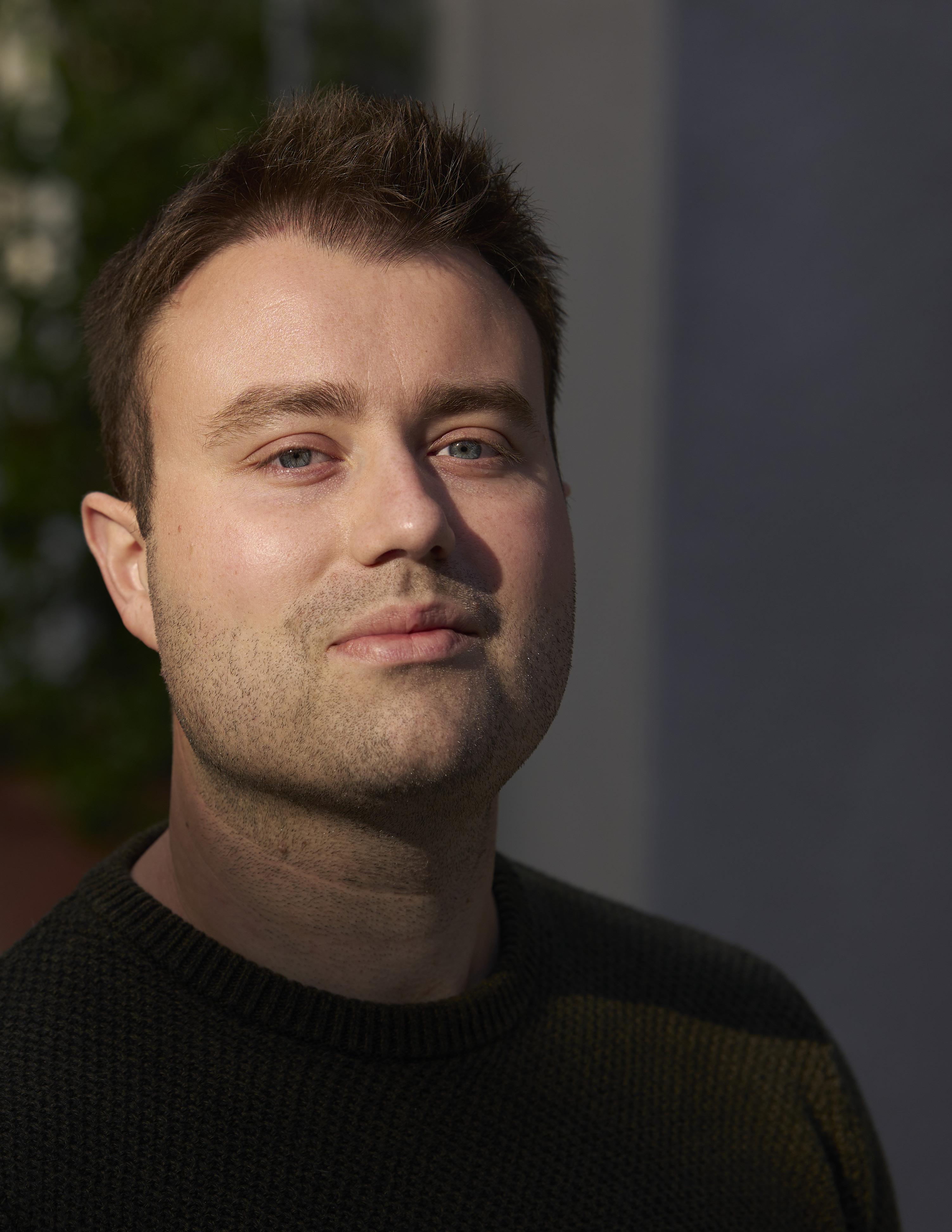 MCCONVILLE
MCCONVILLE

Stephanie MEI-LING
UNIT STILL PHOTOGRAPHER
PRODUCTION CITY: BROOKLYN, NY ICG
MEMBER FOR 3 YEARS
PORTRAIT BY JEONG "JP" PARK
Stephanie has an incredible understanding of people, how to engage with them and make them feel comfortable,” notes Guild Unit Publicist Erin Felentzer, who worked with Mei-Ling on the Apple TV+ show The Crowded Room . “It goes to her work ethic and how she captures moments; she views each scene as an opportunity to shoot a piece of art no matter the size or scale.”
Mei-Ling’s unit work is deeply informed by her experience as a commercial and documentary photographer. She launched her career as an artist/ photographer a few years after moving to New York City, in 2007, and began a commercial practice. Her work has appeared in group shows, museum exhibits, and a group photobook, MFON: Women Photographers of the African Diaspora [MFON.org]. She also was a 2019 IWMF Reproductive Health, Rights, and Justice Grantee. Her first union project was Beauty, a feature written and produced by Lena Waithe and directed by Andrew Dosunmu.
“I hope that my images allow people to get a sense and understanding of who I am and how I see things,” states Mei-Ling, a native Los Angeleno. “I draw from different cultures and traditions. I am influenced by memories and my curiosity for life. I am influenced by my environment and the society in which I live. Human dynamics. In groups, out groups, subcultures. I am fascinated by the inner workings of how society is created, who is dominant, different cultures and traditions – it is all so complex. I hope my images humanize and dignify those who allow me to photograph them. I feel honored to add to the collective visual archive of this time.”
Mei-Ling learned to take pictures with a film camera – a Canon AE-1. “Film forces you to think because you only have 24 to 36 frames each roll,” she notes. “For my personal work, I photograph with both film and digital, but if I had to choose, film is my preference. The patience I have in the field with my documentary work is something I carry with me to set. It is a great tool that allows me the space to create, especially as the set environment can be so hectic and fast-paced.”
Felentzer says Mei-Ling’s approach results in “an amazing shot even in the most difficult circumstances on digital or film. She’s not only a fabulous photographer but an incredible human being, and she made every day on set a joy.”
Mei-Ling’s advice for those coming up the ranks? “Always ask questions and learn from people who have been in the industry,” she counsels. “Sometimes we try to figure things out on our own when there are so many people willing to help us. Asking for help and advice keeps us grounded and confident in what we do. It is also very important that we uphold the integrity of our craft and make sure we represent ourselves well, specifically on set.”

“Rosala represents the future of unit publicists, and I represent the past,” laughs veteran Unit Publicist (and longtime NEB member) Ernie Malik. “I joined the IA, Local 600 mentorship program hoping to meet someone like Rosala, who took the benefit of my experience and successfully applied my suggestions to her first two unit PR assignments. Not only did she triumph in her efforts, but she did it with grace and complete dedication.”
Sanchez originally thought she’d be an actor, but as New Mexico became a preferred production hub, the Albuquerque native shifted her focus to behind the camera. She moved between publicity and production, assisting in many different departments, from costumes to the art department to VFX. She says her move into publicity has been inspired by such longtime Guild publicists as Claire Raskind (whom she assisted with PR photo and content for the Netflix film Chupa ) and

Sheryl Main (whom she assisted on The Last Stand ) and that the wide breadth of experience has informed her work as a publicist.
“We are all contributing as artists to create a film,” she observes, “and that requires a creative perspective to identify how I can best represent and tell each department’s story.” Sanchez says she’s a firm believer in the power of teamwork. “I feel that cultivating collaborative relationships produces quality work, and I like to think of the film industry crew as ‘la film-ilia.’”
Sanchez’s first professional project was National Anthem , a BRON Studios production written and directed by Tony Tost and lensed by Nigel Bluck. “I jumped right in to interview the cast and coordinate the BTS,” she continues. “It came very naturally, and I was proud of the result. Representing not only the studio but also as a Hispanic female was an accomplishment for me. I am proud to work in a time that highlights the importance of diversity in voices, stories and talent. It is crucial to have representation in our industry because we all have a story to tell, and we must support all stories!”
Like any good publicist, Sanchez is usually found with a cell phone in one hand and a laptop in the other.
“Staying connected with numerous people in different locations at all times is critical,” she describes.
“My notes and reminders apps are what I’m using at all times to create my daily notes, make lists and create production facts.” These tools are also handy when dealing with the vicissitudes of the Land of Enchantment’s weather. “Working in harsh elements can be challenging, especially in New Mexico, where it can be summer one day and a snow day the next,” she smiles. “I address it by proactively having strategic and backup plans. Also, communicating with the production crew to stay ahead of changes is important.”
So, what’s Sanchez’s advice for prospective publicists?
“Growth is not comfortable; stay uncomfortable,” she says. “Build a team of support that can offer you guidance and inspiration to stay focused and believe in your dreams. Lastly, don’t forget to pass on the inspiration and support to someone who will need it.”
UNIT PUBLICIST PRODUCTION CITY:
ICG MEMBER FOR 1 YEAR PORTRAIT BY LEWIS JACOBS
ALBUQUERQUE, NM
Rosala
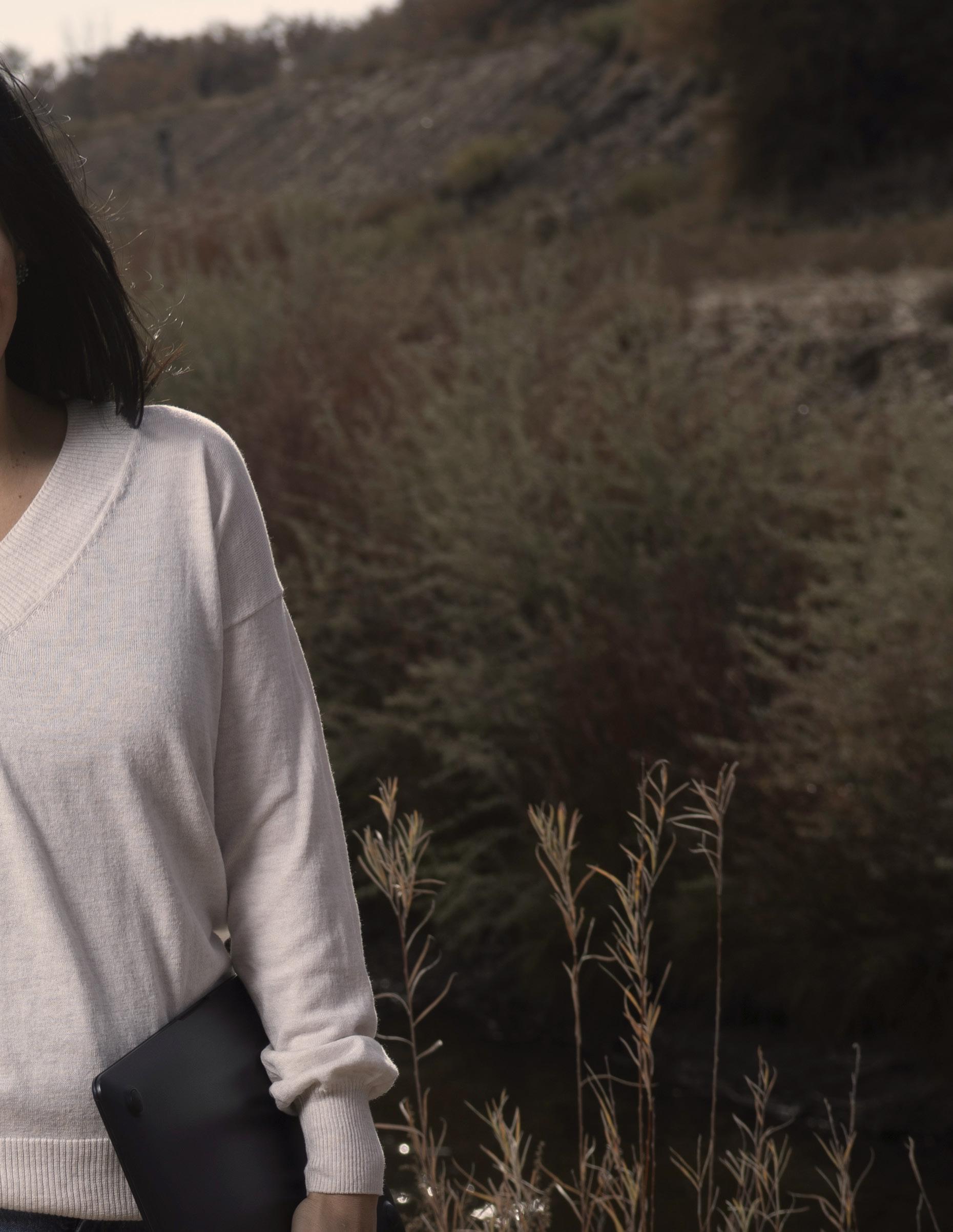
SANCHEZ
“Tari Segal is one of the best cinematographers I know who also happens to be overwhelmingly underrated,” avows Director of Photography David Klein, ASC. “Tari has the soul of an artist. She also has the mind of a scientist. Her innovation is relentlessly devoted to the story being told. There’s no new piece of equipment that drives Tari’s interest in tech; her interest in tech is driven by her desire to tell the story appropriately. If this drives interest in something new, great. If this can be done with old equipment, just as good. The proper tool to tell the story correctly is the only one that matters to her.”
An innovative spirit who embraces improvisation and creativity, Segal’s inspirations are fluid. “It changes now and then,” she explains. “These days I’m very much influenced by still photography – street photography to be specific. In the HD world in which I work, I find myself gravitating toward ways to bring texture in and mess things up. It’s fun to try new things.”
Some of that is her father’s influence. He runs a Chicago jazz club at night and the two spent a lot of time together during the day when Segal was younger. “He opened my
eyes to challenging society norms – that there’s a whole world of artists and people who follow their passions. That even if you’re not rich and famous, happiness is the most important thing,” she recalls. “Watching the musicians improv and jam are some of my favorite memories because there was happiness there, and that made a lot of sense to me. Having the ability to flow and change is all wrapped up in that.”
Segal’s drawn to “moody” projects with high stakes, “where you’re moved to the point of action,” she explains. The Columbia College graduate’s first union gig as a DP was on FBI “Twenty-two episodes as the only DP for nine months was a dream come true,” she notes. She’s also worked on shows like The Crowded Room, MacGyver, and Hunters. Shooting Hunters alongside Will Rexer and (past Local 600 President) John Lindley is one of her proudest accomplishments to date. “I was handed this incredible opportunity to work with giants, and I was trusted and respected without question. I realized, ‘Oh right. I know what I’m doing, and I made it. Chill!’”
A veteran of network television, Segal gets frustrated when the medium isn’t given the respect it deserves, especially at the Emmys,” she relates. “It feels like cable and streaming have taken over, but the skill and work that crews put into network shows, which have millions of viewers, needs to be acknowledged more. Take Chicago Fire. Having operated on that I can tell you that all their FX are real. They are doing stuff that no one even attempts any more. Real explosions and stunts without heavy CG. And they do it efficiently and safely every week. That’s pretty incredible.”
DIRECTOR OF PHOTOGRAPHY

SEGAL
Tari
PRODUCTION CITY: LOS ANGELES ICG MEMBER FOR 11 YEARS PORTRAIT BY CHRISTINA BELLE


Oren SOFFER
“Oren’s attention to detail in his lighting is what has impressed me the most,” states Director of Photography Quyen Tran, ASC. “He uses contrast ratio, color temperature and quality to bring out the most in not only the faces of the subjects of his images but also the complete environment. Oren does endless research to keep abreast of the technology and is constantly testing lenses and formats to find that special look.”
Soffer calls this look “aesthetic naturalism.” He describes it as a limited color palette and environment-based lighting. “It’s motivated by naturalistic sources and realism but heightened in a way that emphasizes the dynamic interplay between light and shadow to create strong foreground separation, and to bring characters to the forefront of the image,” he explains.
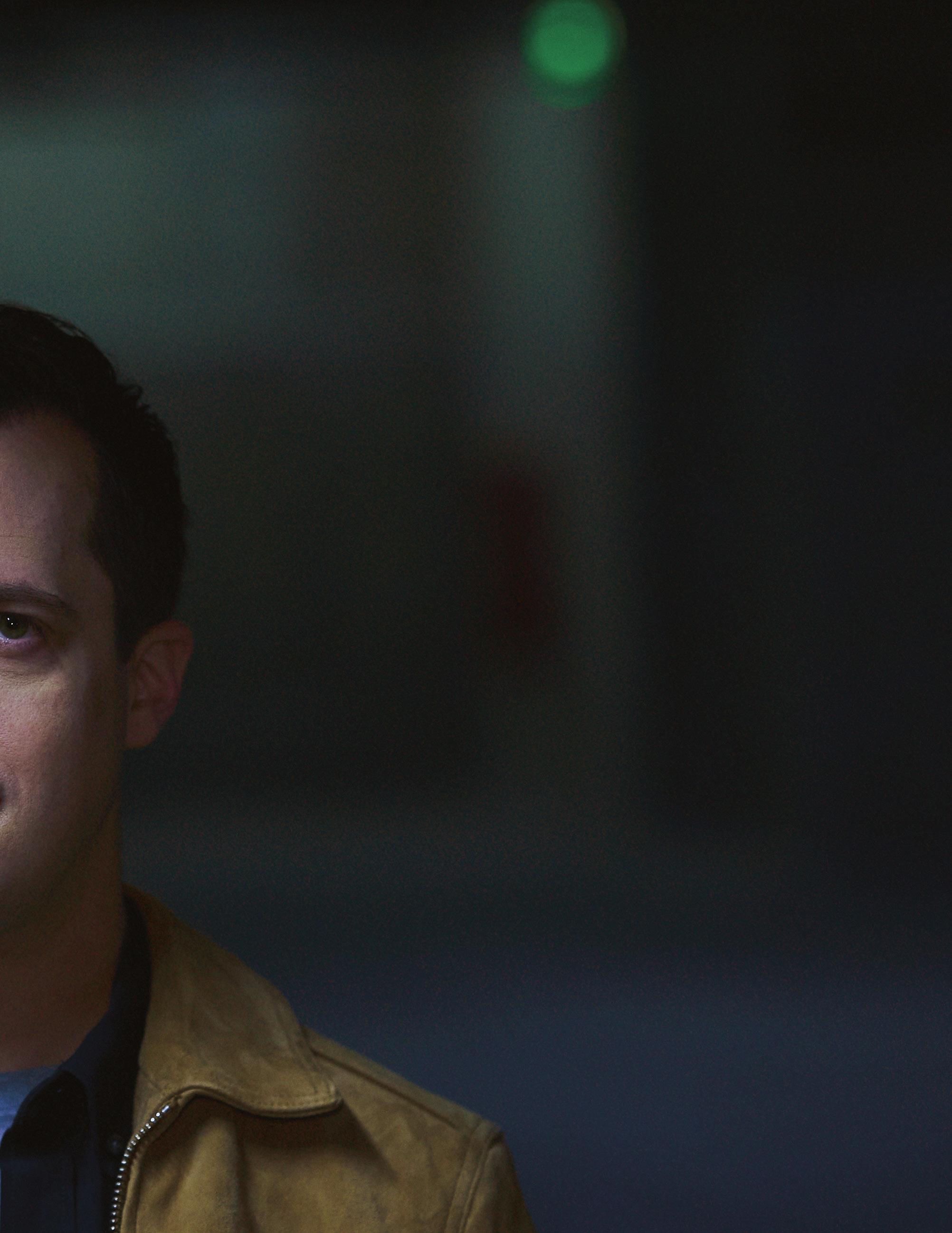
Born in Haifa, Israel, Soffer has been a cinephile since childhood. “I started getting really interested in cinematography around high school, shooting music videos and short films on my school’s Mini DV camera, but for the longest time had no concept of how I could turn that passion into a career. And growing up in Israel felt especially far away from Hollywood.”
Soffer attended NYU’s Tisch School of the Arts, where he earned nominations for the ASC Gordon Willis Student Heritage Award and the Arri Volker Bahnemann Award for Cinematography. Since then, he’s shot hundreds of commercials and music videos for clients that include Nike, BMW, HBO, Doritos, Marriott Hotels, ACE Hardware and Universal Studios. He’s also lensed award-winning shorts, including Opera of Cruelty, which earned top honors in the Alternative category at the Student Academy Awards in 2018, and See You Soon, which won the Audience Award at the Palm Springs International Shorts Festival, premiered on Short of the Week, and was a Vimeo Staff Pick in 2020. His most recent project is True Love, which he co-DP’d with Greig Fraser, ASC, ACS.
“I’ve been most proud to be able to tell LBGT+ stories on screen, especially in my collaborations with director Tyler Rabinowitz on the short films See You Soon and Catalina ,” shares Soffer, an outspoken advocate. “Especially being a queer, Jewish person myself, while our own country has recently seen a rapid rise in both anti-LGBTQ+
DIRECTOR OF PHOTOGRAPHY
sentiment and antisemitism, I feel a responsibility to speak up and be active on these issues, and to encourage others to do the same.”
That’s why Tran says Soffer is a person of principle. “Oren chooses stories that have messages, and – true to his vision and artistic integrity – he won’t take on a project unless it speaks to him,” she explains. “He has to connect with the material in a personal way, so as to bring justice to the telling of that particular story. He is a good human being and takes time to stay a part of not just the film community but other groups who are underrepresented.”
PRODUCTION CITY: LOS ANGELES ICG MEMBER FOR 1 YEAR PORTRAIT BY TOBIN YELLAND
Adam TSANG
“What I appreciate about Adam is that whatever needs to happen on set camera or tech-wise, he will get it done at all costs and by any means,” notes Emmy nominee Jeremiah Smith ( Generation NEXT class of 2019). The two met on the VH1 reality series Twinning in 2015 and have worked together a lot since, most recently on Abbott Elementary [ICG Magazine August 2022]. “I had some complex camera configuration requests, and Adam made the changes between takes when I thought we would be down for a while. He’s a fast-thinking problem solver, and he takes initiative constantly. Also, his T-shirt game is strong.”
Tsang, who was born in Pleasantville, NJ and raised in Los Angeles, enjoys thinking creatively, when the need arises to deviate “from our conventional camera builds” he says, or manage the “massive” setups used on his most recent show, All Rise, Season 2. “It was the middle of the pandemic, and we needed a safe and effective way of filming, while adhering to COVID safety restrictions,” Tsang recalls. “David Harp was the genius who came up with the idea, which saw us implementing a system that included three remote heads and multiple Blackmagic Cinema Cameras. We needed to be able to film the cast at a safe distance while trying to keep within our schedule. The largest setup was fourteen cameras. It was a real success on the part of the entire camera department – coming together and learning/applying an unconventional filming method.”
Tsang’s knack for problem-solving is a result of working in multiple genres, with talented mentors who challenged him in the
best possible ways. “I landed a camera intern spot on the TV show Weeds over a decade ago and lucked out that the crew took me under their wing,” Tsang recalls. His first professional gig as a 2nd AC was on Parks and Recreation. “Every individual I’ve worked with has contributed to who I am today as an assistant,” he adds. “Every project I’ve worked on has taught me something new.”
He says his proudest accomplishment so far is working on The Bikeriders , a Jeff Nichols feature. “Getting the chance to work with film is such a dream come true,” Tsang shares. “I started off my career learning how to load film but unfortunately worked on only one 16-millimeter student film project. Thanks to [25-year Guild 1st AC] Matt Brewer for bringing me in to meet such talented individuals as Adam Stone, Dylan Conrad, and Matthew Leslie.”

Smith says that what makes Tsang’s work so special is that “he is so passionate and considerate about everything he does – even something as simple as slating in front of the camera. I feel like, as an industry, we just don’t see enough of the type of kindness and care that Adam puts into his work.”
2ND AC
PRODUCTION CITY: LOS ANGELES ICG MEMBER FOR 12 YEARS PORTRAIT BY KYLE KAPLAN
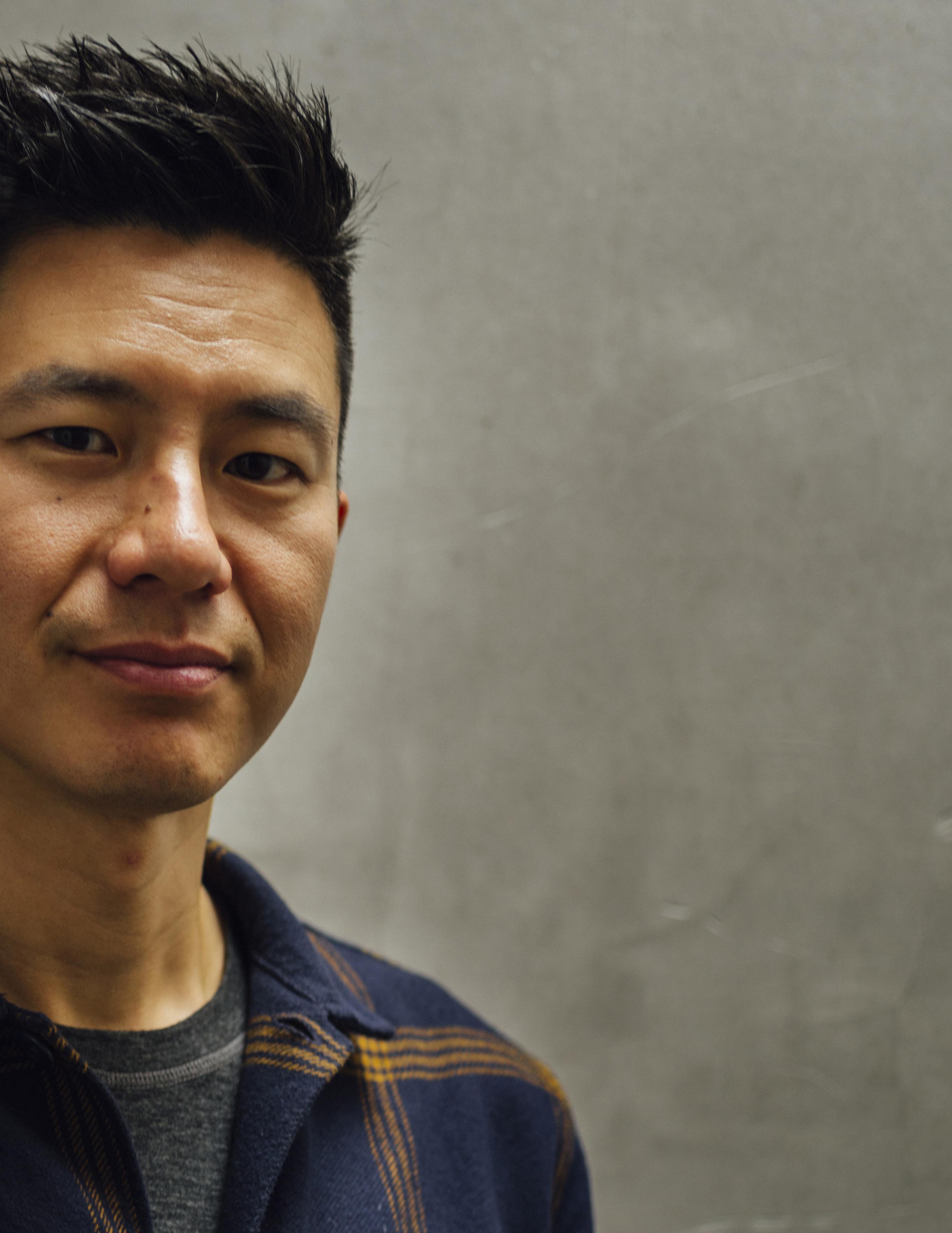
“Zoe can always find a way to leverage technology to make herself more efficient,” describes 2nd AC Dan Urbain. “She was the first person I ever saw do electronic timecards.”
That kind of innovation, created on the set of House, led to ZoeLog in 2012.
“House was a busy show with four full camera packages and additional crews and specialty gear working every week, and at the end of a 10-month season, missing gear was a problem,” Urbain continues. “Zoe hooked a barcode scanner up to her laptop and wrote a simple spreadsheet to keep track of every piece of equipment that came in and out. At the end of her season, we had zero missing gear. Today this system is not uncommon, but I had never seen it before Zoe.”
It was a classic case of necessity spurring invention.
“Paper logs had a lot of drawbacks,” Van Brunt explains. “They were difficult to share, and searching for the right entry could be painfully slow. They were also easily lost or damaged. The idea of a log that multiple users could share and have instant updates to was appealing.” Custom keyboards, autofill, and automatic prefixes/suffixes made it faster and easier to use than paper versions.
Van Brunt had to shoehorn coding between show work. By 2014, she released v1 to the public. “The name ZoeLog started as a working title, but I’m proud to have my name on it now,” she smiles. Features were added to subsequent versions, including camera reports in 2020, which helped with COVID protections. “People were trying to find solutions to reduce the amount of direct contact on set, and camera reports were one piece of material that was being handed from person to person. I credit Dan for tipping me off to this.”
The app is doing well, and the next milestone is bringing it to Android users. “Keeping up with the changing needs of the industry requires a lot of effort, but it’s also been very rewarding,” Van Brunt adds. “Realizing that I’m the one answering support emails lets people know that I’m not some big corporation, and most people have been positive, supportive and patient. Dan, and other fellow assistants at that time – Jeff Thorin, Tony Gutierrez and Dan Schroer [Gutierrez and Schroer have since re-rated as operators like Van Brunt] – helped make me into the best camera assistant I could be and believed in my little iPhone app when nobody did.”
Van Brunt’s advice for the next generation: “Always striving to improve the way you perform your job is one of the best things you can do to elevate yourself and those around you. This includes understanding that not every production is the same and has the same needs, and you should adapt accordingly. Trying to improve is how ZoeLog came to be, and I continue to do that every day.”
OPERATOR PRODUCTION CITY: LOS ANGELES ICG MEMBER FOR 15 YEARS PORTRAIT
 BY CHRISTINA BELLE
BY CHRISTINA BELLE
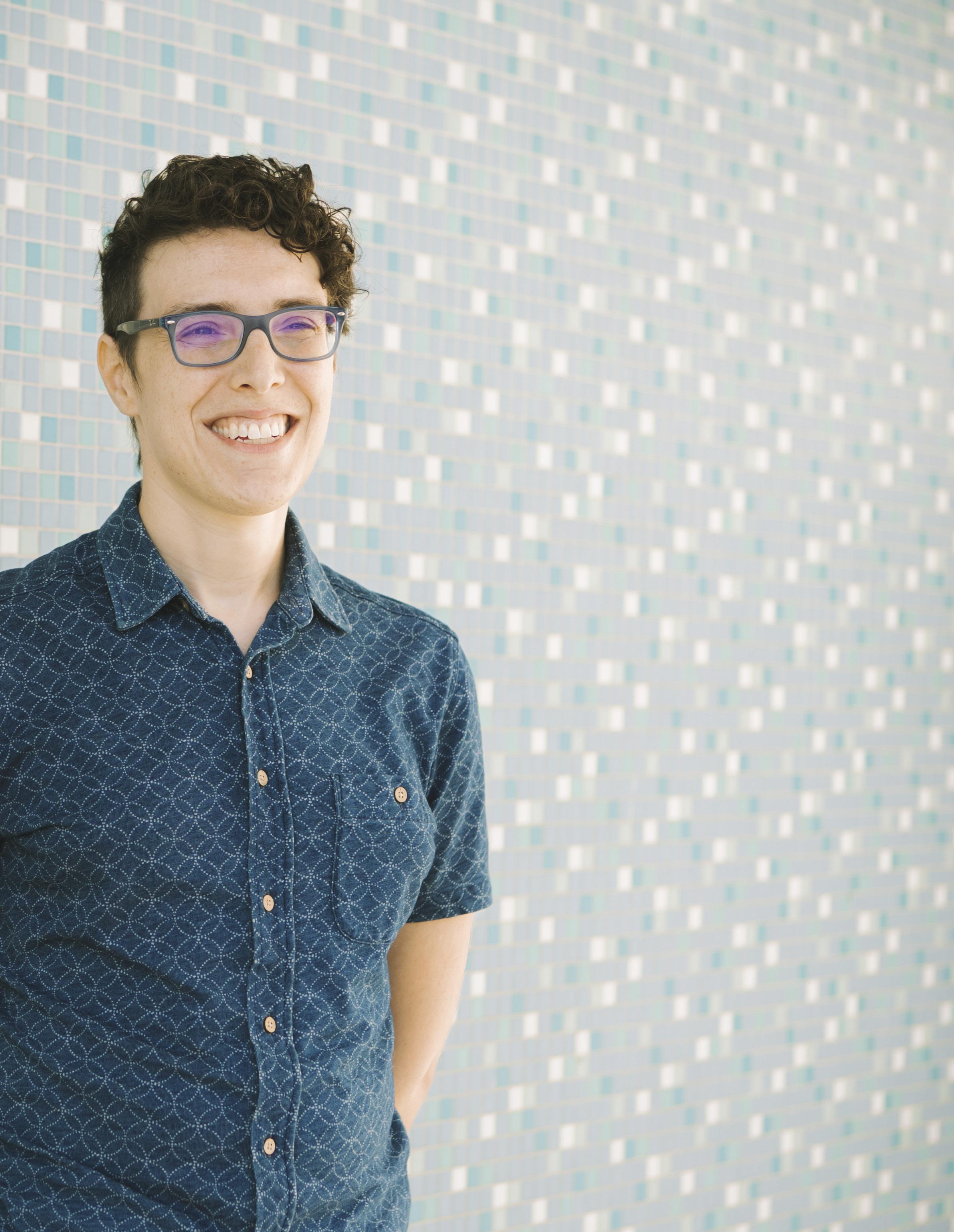
Zoe V
A N BRUNT

Rina YANG
“Rina has this ability to pair the expertise of an elegant, formal approach to cinematography with a sort of rockn-roll sensibility,” notes Daniela Taplin Lundberg of Stay Gold Features, and one of the producers of the 2022 Sundance Grand Prize Winner, Nanny, which Yang lensed. “Her approach to color and tone is what gave the film its particularly unique and elevated sensibility. Rina’s framing is incredible and her ability to pivot and make things work when things don’t go entirely according to plan is amazing.”
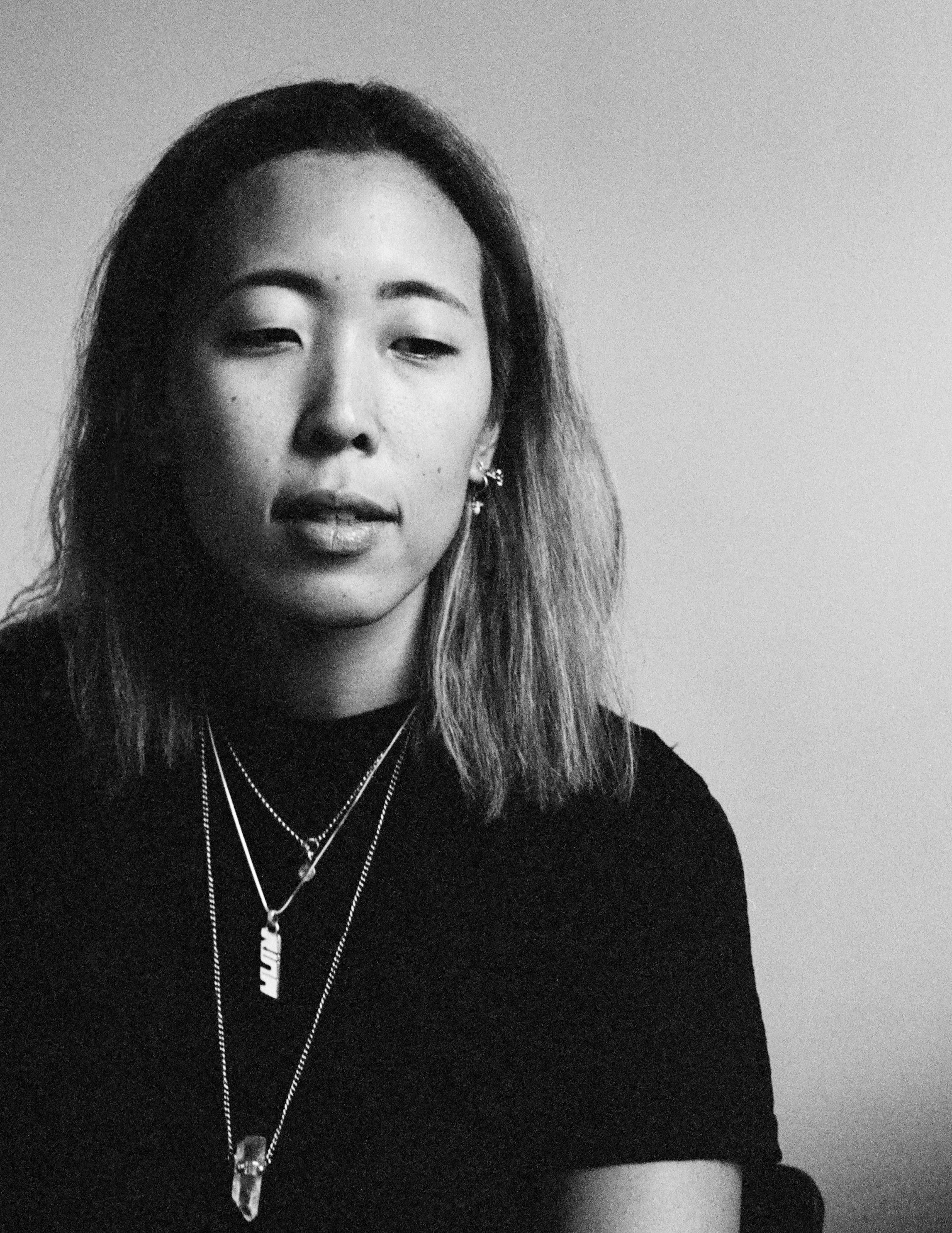
Yang developed two unique visual languages for Nanny, an Amazon-acquired indie feature about an African immigrant who cares for the child of a wealthy Manhattan family. Yang wanted to differentiate the private life of the main character, Aisha, from her professional life. “We conducted tests at Panavision NYC and worked on the show LUT’s with my longtime colorist, Joseph Bicknell at Company 3 [NYC],” she explains. “I wanted Aisha’s everyday life to have a more grounded and spontaneous feel, which was brought out by Panavision H-series
DIRECTOR OF PHOTOGRAPHY
PRODUCTION CITY: NEW YORK
ICG MEMBER FOR 4 YEARS
PORTRAIT COURTESY OF OLIVIA ROSE
spherical lenses and a more handheld approach. Amy’s world, which is a rich, white family living in Tribeca, was shot solely with Panavision Ultra Panatar anamorphic lenses. We wanted to subtly heighten the visuals when Aisha is in that world, and Ultra Panatars are only ×1.3 anamorphic, so that’s a very subtle effect. The focus falloff and the flare felt like the right choice.”
Growing up in a small city in Japan, Yang studied still life and portrait painting in school. “I didn’t see it as training, it was more pure interest and fascination,” she reflects. “Looking back, I learned to observe the scene in front of me and translate the light and shadows in different shades of paint in my own way.” Yang went to film school in London, where she is based, and started as a runner on small shoots – mostly short films and indie features. She went on to work on music videos, commercials and TV, getting noticed and making history in the U.K. entertainment world.
Yang is the first Asian woman to join the British Society of Cinematographers (BSC) as a fully accredited member, and the first female Director of Photography to win a cinematography award at the British Arrows. She also was nominated for Best Cinematographer in Fiction at the BAFTA Cymru Awards 19, making history in both commercials and narrative categories. Those honors had her fielding inquiries from U.S.-based productions, which led to shooting episodes of Euphoria and Taylor Swift’s video for All Too Well . Her most recent project, Flint Strong, is a feature written by Barry Jenkins and directed by Oscar nominee Rachel Morrison, ASC.
“I feel proud,” Yang allows, adding, “we certainly have a long way to go to achieve diversity. We need to help people get into the industry with subsidies and funding to kick start young careers in film – not everyone can afford to do internships and work for free until they actually get paid.”
COMPILED
BY TERESA MUÑOZ
The input of Local 600 members is of the utmost importance, and we rely on our membership as the prime (and often the only) source of information in compiling this section. In order for us to continue to provide this service, we ask that Guild members submitting information take note of the following requests:
Please provide up-to-date and complete crew information (including Still Photographers, Publicists, Additional Units, etc.). Please note that the deadline for the Production Credits is on the first of the preceding cover month (excluding weekends & holidays).

Submit your jobs online by visiting: www.icg600.com/MY600/Report-Your-Job
Any questions regarding the Production Credits should be addressed to Teresa Muñoz at teresa@icgmagazine.com
PRODUCTION CREDITS
20TH TELEVISION
“A BLACK LADY SKETCH SHOW" SEASON 4
DIRECTOR OF PHOTOGRAPHY: KEVIN ATKINSON

OPERATORS: SERGIO DE LUCA, ERIC DYSON, GABE DINIZ
ASSISTANTS: CRAIG JENNETTE, BRYAN JONES, DAVID ERICKSON, KELLSIE DOMNITZ, MATTHEW BOREK, LANI WASSERMAN
STEADICAM OPERATOR: SERGIO DE LUCA
STEADICAM ASSISTANT: CRAIG JENNETTE
LOADER: BEN IKER
DIGITAL UTILITY: PHIL COSTA
STILL PHOTOGRAPHER: TINA THORPE
“9-1-1" SEASON 6
DIRECTOR OF PHOTOGRAPHY: JOAQUIN SEDILLO, ASC
OPERATORS: RICH STEVENS, DUANE MIELIWOCKI, SOC, DALE VANCE, SOC
ASSISTANTS: KENNETH LITTLE, CLAUDIO BANKS, TOBY WHITE, STEPHEN FRANKLIN, MELVINA RAPOZO, JIHANE MRAD
CAMERA UTILITY: PAULINA GOMEZ
DIGITAL UTILITY: BRYANT POWELL
“911:
LONE STAR" SEASON 4
DIRECTORS OF PHOTOGRAPHY: NATHANAEL VORCE, PJ RUSS
OPERATORS: BRICE REID, JACK MESSITT, JAMES HAMMOND, DEAN MORIN
ASSISTANTS: CARLOS DOERR, KAORU "Q" ISHIZUKA, PENNY SPRAGUE, KELSEY CASTELLITTO, BLAIR ROGERS, EVAN WILHELM, BEN PERRY
STEADICAM OPERATOR: BRICE REID
RONIN OPERATOR: DEAN MORIN
Discover what the studio can do
for you
DIGITAL IMAGING TECH: MIKE SANCHEZ
CAMERA UTILITY: JOE PACELLA
DIGITAL UTILITIES: BASSEM BALAA, BEAU MORAN
“HOW I MET YOUR FATHER" SEASON 2
DIRECTOR OF PHOTOGRAPHY: GARY BAUM, ASC
OPERATORS: JAMIE HITCHCOCK, DEBORAH O'BRIEN, DAMIAN DELLA SANTINA, ALLEN MERRIWEATHER
ASSISTANTS: BRADLEY TRAVER, SEAN ASKINS, YUKA KADONO
DIGITAL IMAGING TECH: DEREK LANTZ
CAMERA UTILITIES: DAN LORENZE, RICHIE FINE LOADER: KIERSTEN DIRKES
VIDEO CONTROLLER: JOHN O'BRIEN
STILL PHOTOGRAPHER: PATRICK WYMORE
“UNTITLED RONNY CHIENG" PILOT
DIRECTOR OF PHOTOGRAPHY: TIMOTHY GILLIS OPERATORS: PHILIP MARTINEZ, LUCAS OWEN ASSISTANTS: GAVIN FERNANDEZ, RANDY MALDONADO GALARZA, AUSTIN RESTREPO, RACHEL FEDORKOVA
LOADERS: ETHAN FERNANDEZ, KARRON MCKENZIE
DIGITAL UTILITY: ADAM KIM
STILL PHOTOGRAPHERS: GREGORY PACE, GIOVANNI RUFINO
ABC STUDIOS
“CRIMINAL MINDS" SEASON 16
DIRECTOR OF PHOTOGRAPHY: ANTHONY VIETRO OPERATORS: JAMIE STERBA, BEN VANCLEAVE ASSISTANTS: DAVE EGERSTROM, JOHN STRADLING, JAMIE FELZ, ERIC GUTHRIE, MIKE CAHOON
STEADICAM OPERATOR: BEN VANCLEAVE
STEADICAM ASSISTANT: DAVE EGERSTROM
DIGITAL IMAGING TECH: SAM MCCONVILLE
LOADER: GOBE HIRATA
DIGITAL UTILITY: ALEXA HEGRE
“JIMMY
KIMMEL LIVE!” SEASON 20
LIGHTING DIRECTOR: CHRISTIAN HIBBARD
OPERATORS: GREG GROUWINKEL, PARKER BARTLETT, GARRETT HURT, MARK GONZALES
STEADICAM OPERATOR: KRIS WILSON
JIB OPERATORS: MARC HUNTER, RANDY GOMEZ, JR., NICK GOMEZ
CAMERA UTILITIES: CHARLES FERNANDEZ, SCOTT SPIEGEL, TRAVIS WILSON, DAVID FERNANDEZ, ADAM BARKER
VIDEO CONTROLLER: GUY JONES
STILL PHOTOGRAPHERS: KAREN NEAL, MICHAEL DESMOND
2ND UNIT
DIRECTORS OF PHOTOGRAPHY: BERND REINBARDT, STEVE GARRETT

“GREY'S ANATOMY" SEASON 19
DIRECTORS OF PHOTOGRAPHY: BYRON SHAH, JEANNE TYSON
OPERATORS: STEPHEN CLANCY, JANICE MIN, GREG WILLIAMS
ASSISTANTS: NICK MCLEAN, KIRK BLOOM, FORREST THURMAN, LISA BONACCORSO, CHRIS JONES, J.P. RODRIGUEZ
STEADICAM OPERATOR: STEPHEN CLANCY
STEADICAM ASSISTANTS: NICK MCLEAN, KIRK BLOOM
LOADER: MARTE POST
DIGITAL UTILITY: SPENCER ROBINS
107 DECEMBER 2022 PRODUCTION CREDITS
thestudiobh.com | thestudio@bhphoto.com CINEMATOGRAPHY - POST PRODUCTION - DIGITAL WORKFLOWS
Exclusive for ICG members: Ask us about our purchasing program for members including our comprehensive set of financial services. Please contact thestudio@bhphoto.com for more details THE
STUDIO
“STATION 19" SEASON 6
DIRECTORS OF PHOTOGRAPHY: DARYN OKADA, ASC, BRIAN GARBELLINI
OPERATORS: HARRY GARVIN, LISA STACILAUSKAS, SOC, DAVID MUN ASSISTANTS: TONY SCHULTZ, GEORGE MONTEJANO, III, SALVADOR VEGA, DUSTIN FRUGE, ANDREW DEGNAN, HANNAH LEVIN
STEADICAM OPERATOR: HARRY GARVIN
STEADICAM ASSISTANT: TONY SCHULTZ
DIGITAL IMAGING TECH: ANDREW LEMON
UTILITIES: GRANT JOHNSON, BELLA RODRIGUEZ CRANE TECHS: CHRIS DICKSON, DERRICK ROSE
A+E STUDIOS
“THE LINCOLN LAWYER” SEASON 2
DIRECTOR OF PHOTOGRAPHY: PEDRO GOMEZ MILAN OPERATORS: DENNIS NOYES, BRETT JUSKALIAN ASSISTANTS: JOE CHEUNG, BRENDAN DEVANIE, PENNY SPRAGUE, BEN PERRY
DIGITAL IMAGING TECH: FRANCESCO SAUTA
CAMERA UTILITY: ANDREW VERA LOADER: RAUL PEREZ
BEACHWOOD SERVICES
“DAYS OF OUR LIVES” SEASON 56
DIRECTOR OF PHOTOGRAPHY: VINCE STEIB OPERATORS: MARK WARSHAW, MICHAEL J. DENTON, JOHNNY BROMBEREK, STEVE CLARK
CAMERA UTILITIES: STEVE BAGDADI, GARY CYPHER VIDEO CONTROLLER: ALEXIS DELLAR HANSON
BIG INDIE LITTLE ROCK, INC.
“ERIC LARUE”
DIRECTOR OF PHOTOGRAPHY: ANDREW WHEELER
OPERATOR: JOHN C. LEHMAN ASSISTANTS: SEBASTIEN THIBEAU, MARY-MARGARET PORTER, DARELL BURKE, CHRISTOPHER RYAN MARLOWE, ANTHONY SCOPINO STILL PHOTOGRAPHER: DANA KATHLEEN HAWLEY
BIG INDIE HONDO, INC.
“HONDO AKA FALLOUT” SEASON 1
DIRECTORS OF PHOTOGRAPHY: ALEJANDRO MARTINEZ, TEODORO MANIACI, BRUCE MCCLEERY
OPERARTORS: PYARE FORTUNATO, ROBERT CAMPBELL ASSISTANTS: TOSHIRO YAMAGUCHI, BRENDAN RUSSELL, CORNELIA KLAPPER, ALEC NICKEL
LOADERS: TRUMAN HANKS, LORENZO ZANINI STILL PHOTOGRAPHER: JOJO WHILDEN
BIG INDIE RED ONE, INC.
“RED ONE”
DIRECTOR OF PHOTOGRAPHY: DAN MINDEL, ASC OPERATORS: LUKAS BIELAN, CHRIS MCGUIRE ASSISTANTS: SERGIUS NAFA, BESS JOHNSON, MICHAEL KLIMCHAK, BILLY MCCONNELL
DIGITAL IMAGING TECH: ZACH HILTON
LOADER: KEVIN GASPAR
DIGITAL UTILITY: GARREN SMILEY
STILL PHOTOGRAPHER: FRANK MASI, SMPSP
BOTTOM DOLLAR PRODUCTIONS
“MINX" SEASON 2
DIRECTOR OF PHOTOGRAPHY: BLAKE MCCLURE
OPERATOR: NICK MEDRUD
ASSISTANTS: LOGAN HALL, KELSEY JUDDO, NICHOLAS KRAMER, RACHEL WIEDERHOEFT
DIGITAL IMAGING TECH: SPENCER SHWETZ
LOADER: MIKE WILLIAMS
DIGITAL UTILITY: BRANDON GUTIERREZ
STILL PHOTOGRAPHER: JOHN JOHNSON
BROOKSTREET PICTURES
“KNOX
GOES AWAY”
DIRECTOR OF PHOTOGRAPHY: MARSHALL ADAMS
OPERATORS: MATT CREDLE, SAM O'MELIA
ASSISTANTS: SUMMER MARSH, SCOTT MARTINEZ, TRIGG FERRANO, COLLEEN HALEY
CAMERA UTILITY: BROOK KARNER
DIGITAL LOADER: DANA FYTELSON
CBS
“ENTERTAINMENT TONIGHT” SEASON 41 LIGHTING DESIGNER: DARREN LANGER
DIRECTOR OF PHOTOGRAPHY: KURT BRAUN OPERATORS: JAMES B. PATRICK, ALLEN VOSS, ED SARTORI, BOB CAMPI, RODNEY MCMAHON, ANTHONY SALERNO
JIB OPERATOR: JAIMIE CANTRELL
CAMERA UTILITY: TERRY AHERN
VIDEO CONTROLLERS: MIKE DOYLE, PETER STENDAL
“NCIS” SEASON 20
DIRECTOR OF PHOTOGRAPHY: WILLIAM WEBB, ASC OPERATORS: GREG COLLIER, CHAD ERICKSON ASSISTANTS: JAMES TROOST, NATE LOPEZ, HELEN TADESSE, YUSEF EDMONDS, ANNA FERRARIE LOADER: MIKE GENTILE
“NCIS: LOS ANGELES" SEASON 14
DIRECTOR OF PHOTOGRAPHY: VICTOR HAMMER OPERATORS: TERENCE NIGHTINGALL, RICHIE HUGHES ASSISTANTS: KEITH BANKS, JIMMY FERGUSON, PETER CARONIA, JACQUELINE NIVENS, WILLIAM SCHMIDT
DIGITAL IMAGING TECH: RYNE NINER DIGITAL UTILITY: TAYLOR O'NEIL STILL PHOTOGRAPHER: RON JAFFE
“THE NEIGHBORHOOD" SEASON 5
DIRECTOR OF PHOTOGRAPHY: CHRIS LAFOUNTAINE, ASC OPERATORS: BRUCE REUTLINGER, KRIS CONDE, CHRIS WILCOX, KEVIN HAGGERTY ASSISTANTS: CHRIS TODD, JEFF ROTH, CRAIG LA FOUNTAINE
DIGITAL IMAGING TECH: RYNE NINER
VIDEO CONTROLLER: KELSEY NINER
CAMERA UTILITIES: VICKI BECK, TREVOR LA FOUNTAINE
TECHNO JOB OPERATOR: SCOTT ACOSTA TECHNO JIB TECH: JESSE WILLIAMS STILL PHOTOGRAPHER: MONTY BRINTON
“THE TALK” SEASON 13
LIGHTING DIRECTOR: MARISA DAVIS
PED OPERATORS: ART TAYLOR, MARK GONZALES, ED STAEBLER
HANDHELD OPERATORS: RON BARNES, KEVIN MICHEL, JEFF JOHNSON
JIB OPERATOR: RANDY GOMEZ
“SWEETWATER”
HEAD UTILITY: CHARLES FERNANDEZ UTILITIES: MIKE BUSHNER, DOUG BAIN, DEAN FRIZZEL, BILL GREINER, JON ZUCCARO VIDEO CONTROLLER: RICHARD STROCK STILL PHOTOGRAPHER: RON JAFFE
“WALKER INDEPENDENCE"
DIRECTOR OF PHOTOGRAPHY: BROOK WILLARD OPERATORS: AIKEN WEISS PAUL ELLIOTT ASSISTANTS: RENE VARGAS, JEFFERSON JONES, OSCAR CIFUENTES, DANIEL DUERRE DIGITAL IMAGING TECH: MARSHALL HENDERSHOT LOADER: LINDSAY HEATLEY
DIGITAL UTILITITES: JORDAN HERRON, DANIEL WIERL
CMS
“MOTHER COUCH!”
OPERATOR: KELLY BORISY ASSISTANTS: NORRIS FOX, JONATHAN CLARK LOADERS: MONICA BARRIOS-SMITH, CASSIDY MINARIK
COLTRANE PRODUCTIONS
“BOSCH: LEGACY" SEASON 2
DIRECTOR OF PHOTOGRAPHY: RODNEY TAYLOR, ASC OPERATORS: ERIC SCHILLING, GARY HATFIELD ASSISTANTS: DAVID LEB, RYO KINNO, NATHAN CRUM, BENNY BAILEY
STEADICAM OPERATOR: ERIC SCHILLING STEADICAM ASSISTANT: DAVID LEB
DIGITAL IMAGING TECH: TIM NAGASAWA LOADER: SONIA BARRIENTOS
DIGITAL UTILITY: JARED WILSON
COOLER WATERS
“WINNING TIME: RISE OF THE LAKERS DYNASTY” SEASON 2
DIRECTOR OF PHOTOGRAPHY: TODD BANHAZL
OPERATORS: DOMINIC BARTOLONE, JESSICA LAKOFF CANNON, JUSTIN CAMERON
ASSISTANTS: DAVID EDSALL, SCOTT JOHNSON, ARTURO ROJAS, GARY BEVANS, JASON ALEGRE, RYAN JACKSON, RIO ALLEN
STEADICAM OPERATOR: DOMINIC BARTOLONE
STEADICAM ASSISTANT: DAVID EDSALL
LOADER: EMILY GOODWIN
DIGITAL UTILITY: BRANDON JOHNSON STILL PHOTOGRAPHER: WARRICK PAGE
CRANETOWN MEDIA, LLC “LIONESS"
DIRECTORS OF PHOTOGRAPHY: PAUL CAMERON, ASC, MARYSE ALBERTI, ERIC KORETZ
OPERATORS: KIMO PROUDFOOT, GEORGE BILLINGER, SOC, JONNY MEYER ASSISTANTS: STEVEN WOLFE, THOMAS BARRIOS, KEVIN POTTER, RICHARD DABBS, DUSTIN WHITTLESEY, JASON HOCHREIN
CAMERA UTILITY: SAGE LARSON
DIGITAL IMAGING TECH: MARK WILENKIN LOADER: LAUREN CUMMINGS
STILL PHOTOGRAPHER: BILL GRAY
“THE ROOKIE” SEASON 5
DIRECTORS OF PHOTOGRAPHY: KYLE JEWELL, PAUL THIERAULT
OPERATORS: MIGUEL PASK, COBY GARFIELD, DOUGH OH
ASSISTANTS: JIMMY THIBO, JASON GARCIA, CHRIS MACK, RICHARD KENT, KELLY BERG, TYLER ERNST
STEADICAM OPERATOR: MIGUEL PASK
STEADICAM ASSISTANT: JIMMY THIBO LOADER: ANNIE LI
DIGITAL IMAGING TECH: JOHN MILLS
DIGITAL UTILITY: NICHOLAS WEAVER
STILL PHOTOGRAPHER: RAYOND LIU
DELUCA FILM
“CRASHER" SEASON 1
DIRECTORS OF PHOTOGRAPHY: TIM SUHRSTEDT, DON KING (UNDERWATER)
OPERATORS: LAWRENCE KARMAN, SHAWN HIATT ASSISTANTS: DAVID WHITE, BAILEY NAGY, HAYDN PAZANTI, LIAM WHITE, WARNER WACHA (UNDERWATER)
STEADICAM OPERATOR: LAWRENCE KARMAN
DIGITAL IMAGING TECH: DANIELE COLOMBERA LOADER: NOHEA KAHAULELIO
STILL PHOTOGRAPHER: KATRINA MARCINOWSKI
EYE PRODUCTIONS, INC.
“BLUE BLOODS” SEASON 13
DIRECTOR OF PHOTOGRAPHY: DONALD THORIN OPERATORS: STEPHEN CONSENTINO, GEOFFREY FROST ASSISTANTS: NICHOLAS DEEG, GLEN CHIN, KENNETH MARTELL, JONATHAN SCHAEFER, MICHAEL GUTHRIE, MAXWELL SLOAN, MATEO GONZALEZ, HAROLD ERKINS, MYO CAMPBELL LOADERS: NANDIYA ATTIYA, MICHAEL PARRY STILL PHOTOGRAPHERS: LINDA KALLERUS, ALYSSA LONGCHAMP, EMILY ARAGONES
“MAGNUM
P.I."
SEASON 5
DIRECTORS OF PHOTOGRAPHY: NEWTON TERMEER, YARON LEVY OPERATORS: KEITH JORDAN, SCOTT MASON, RUBEN CARRILLO ASSISTANTS: JEFF PELTON, NIGEL NALLY, WILL WACHA, KANOA DAHLIN, KAIMANA PINTO, BRANDON HO
STEADICAM OPERATOR: KEITH JORDAN
DIGITAL IMAGING TECH: BLANE EGUCHI LOADER: GEOFF LAU
UTILITY: KRISTINA ZAZUETA
DIGITAL UTILITY: MATHEW MEDEIROS
STILL PHOTOGRAPHER: ZACK DOUGAN
DECEMBER 2022 PRODUCTION CREDITS 108
CREW PHOTO
FILM HEROES, LLC
“UNTITLED JOHN SWAB PROJECT AKA LAND OF GRACE”
DIRECTOR OF PHOTOGRAPHY: BRANDON LEE COX
OPERATORS: CHRISTIAN RAMIREZ-COLL, RAUL ROSADO MALDONADO, RAPHY MOLINARY-MACHADO
ASSISTANTS: CARLOS GARCIA, NATASHA LUNA, ZORAIDA LUNA LUNA, THATIANA HERNANDEZ
CAMERA UTILITY: JOSE LUIS RODRIGUEZ MALDONADO
DIGITAL IMAGING TECH: OMAR RIVERA ABREU
STILL PHOTOGRAPHER: LAURA MAGRUDER
G HOP, SKIP, & JUMP PRODUCTIONS
“WHILE YOU WERE BREEDING" SEASON 1
DIRECTOR OF PHOTOGRAPHY: BENJAMIN KASULKE
OPERATORS: MARC CARTER, GARRETT ROSE
ASSISTANTS: SHARLA CIPICCHIO, LITONG ZHEN
DIGITAL IMAGING TECH: CHARLES ALEXANDER
KANAN PRODUCTIONS, INC.
“POWER BOOK, III: RAISING KANAN” SEASON 3
DIRECTORS OF PHOTOGRAPHY: CHRIS LAVASSEUR, FRANCIS SPIELDENNER
OPERATORS: JEFFREY DUTEMPLE, GREGORY FINKEL ASSISTANTS: MARK FERGUSON, SUREN KARAPETYAN,
EMILY DEBLASI, KEITH ANDERSION
FRONT ROW LEFT TO RIGHT: GEORGE VALENZUELA (TECHNO JIB ASSISTANT), NICK GOMEZ (TECHNO JIB OPERATOR), WILL IM (TECH ASSISTANT), RICH KIM (DIRECTOR), ADRIEN PRUETT (DIRECTOR OF PHOTOGRAPHY), ZANE TOWNSEND (LEAD AC), JERRY GARCIA (AC), DAVID CLAAR (AC), WENDELL UREN (AC), JOHN BEATTLE (CAMERA OPERATOR)
BACK ROW: GEORGE MAXWELL (LIGHTING DIRECTOR), MAXWELL BARRETT (TECH SUPERVISOR), KEVIN MCKNIGHT ( CAMERA OPERATOR), DANIEL YOUTH (TECH), BRETT SMITH (CAMERA OPERATOR), BRACK BRADLEY (CAMERA OPERATOR), CARRIE DUFRENSE (CAMERA OPERATOR), DEREK BARANOWSKI (CAMERA OPERATOR), JOHN LIPARI (CAMERA OPERATOR), AMBRIA CORNELIUS (CAMERA OPERATOR), GREG THOMPSON (CAMERA OPERATOR), CHRIS VALADARES (AC), SHEA ALLISON (AC)

NBC UNIVERSAL TELEVISION, LLC
DIGITAL IMAGING TECH: HUNTER FAIRSTONE
LOADERS: BRIAN CARDENAS, PAUL SPANG, JC QUIROZ STILL PHOTOGRAPHERS: CARA HOWE, DAVID SCOTT HOLLOWAY, MATT INFANTE, ERIC LIEBOWITZ
PUBLICIST: EVELYN SANTANA
MOFA PRODUCTIONS
“HERE'S YIANNI”
DIRECTOR OF PHOTOGRAPHY: RUSSELL SWANSON OPERATORS: BEKA VENEZIA, MICHAEL HAUER ASSISTANTS: PETER STAUBS, JULIAN BASS, STORR TODD, ASH HIATT
DIGITAL IMAGING TECH: PETER SYMONOWICZ LOADER: COURTNEY DENK
MINIM PRODUCTIONS, INC,
“SNOWFALL” SEASON 6
DIRECTORS OF PHOTOGRAPHY: CHRISTIAN HERRERA, LUIS SANSANS
OPERATORS: DAVID CHAMEIDES, DICK CROW ASSISTANTS: ALEX LIM, GINA VICTORIA, JOSE DE LOS ANGELES, FERNANDO ZACARIAS LOADERS: JACQUES VINCENT, AIDAN OSTROGOVICH UTILITIES: SELENESOL MASSIEL SINGLETON, BEN MOHLER
STILL PHOTOGRAPHER: RAY MICKSHAW
“BUPKIS" SEASON 1
DIRECTOR OF PHOTOGRAPHY: BRIAN BURGOYNE
OPERATORS: JONATHAN BECK, KOREY ROBINSON
ASSISTANTS: ALEXANDER WORSTER, ANDREW JUHL, ANJELA COVIAUX, YALE GROPMAN
DIGITAL IMAGING TECH: ANDREW PISANO
LOADER: DANIEL BROWN
STILL PHOTOGRAPHER: HEIDI GUTMAN
“CHICAGO PD" SEASON 10
DIRECTOR OF PHOTOGRAPHY: JAMES ZUCAL
OPERATORS: VICTOR MACIAS, JAMISON ACKER, CHRIS HOOD
ASSISTANTS: KYLE BELOUSEK, DON CARLSON, NICK WILSON, MARION TUCKER, CHRIS POLMANSKI, MAX MOORE
STEADICAM OPERATOR: VICTOR MACIAS
STEADICAM ASSISTANT: KYLE BELOUSEK
LOADER: STEVEN CLAY
DIGITAL UTILITY: REBECCA JOHNSON
STILL PHOTOGRAPHER: LORI ALLEN
“FBI" SEASON 5
DIRECTOR OF PHOTOGRAPHY: BART TAU
OPERATORS: AFTON GRANT, MICHAEL LATINO
ASSISTANTS: LEE VICKERY, YURI INOUE, GEORGE LOOKSHIRE, NKEM UMENYI
LOADERS: RAUL MARTINEZ, CONNOR LYNCH STILL PHOTOGRAPHER: BENNETT RAGLIN
109 DECEMBER 2022 PRODUCTION CREDITS
PHOTO BY: TOM GRISCOM
“LEGO MASTERS”
“GRAND CREW" SEASON 2
DIRECTOR OF PHOTOGRAPHY: RICK PAGE
OPERATOR: PHIL MASTRELLA, LAUREN GADD, MARQUES SMITH, SOC
ASSISTANTS: DUSTIN MILLER, JULIUS GRAHAM, GRACE THOMAS, JENNIFER LAI, RIKKI JONES, ERNEST DICKERSON, JR.
DIGITAL IMAGING TECH: NICK GILBERT DIGITAL UTILITY: JASON CHUN
“LAW & ORDER" SEASON 22
DIRECTOR OF PHOTOGRAPHY: CRAIG DIBONA, ASC OPERATORS: CHRIS HAYES, TOM WILLS ASSISTANTS: ALEX WATERSTON, IAN BRACONE, DEREK DIBONA, EMILY DUMBRILL LOADERS: MAX SCHWARZ, MATT ELDRIDGE
“LAW & ORDER: ORGANIZED CRIME" SEASON 3
DIRECTOR OF PHOTOGRAPHY: JIM DENAULT OPERATORS: JON BEATTIE, JAY SILVER ASSISTANTS: KEVIN WALTER, ALEKSANDR ALLEN, KEVIN HOWARD, KJERSTIN ROSSI LOADERS: BRANDON OSBORN, VINCE FERRARI
“LAW & ORDER: SPECIAL VICTIMS UNIT" SEASON 24
DIRECTOR OF PHOTOGRAPHY: FELIKS PARNELL
OPERATORS: JON HERRON, CHRIS DEL SORDO ASSISTANTS: MIKE GUASPARI, CHRISTIAN CARMODY, RYAN HADDON, MARY NEARY LOADERS: LIAM GANNON, JAMES WILLIAM STILL PHOTOGRAPHER: ALYSSA LONGCHAMP
“NEW AMSTERDAM” SEASON 5
DIRECTORD OF PHOTOGRAPHY: ANDY VOEGELI, CHRISTOPHER RAYMOND
OPERATORS: GARETH MANWARING, PEDRO CORCEGA ASSISTANTS: JAMES MADRID, MATT MONTALTO, ROBERT WRASE, PHILLIP THOMPSON LOADERS: CHRIS BAZATA, MARINO SANNUTI
“THE EQUALIZER” SEASON 3
DIRECTORS OF PHOTOGRAPHY: TERRENCE BURKE, RON FORTUNATO
OPERATORS: JOSPEPH BLODGETT, TODD SOMODEVILLA, JASON MASON, RICARDO SARMIENTO
ASSISTANTS: ADAM GONZALEZ, JOHN FITZPATRICK, JELANI WILSON, BRYANT BAILEY, JAY ECKARDT, WARIS SUPANPONG, MICHAEL LOBB, JASON RASWANT, NIALANEY RODRIGUEZ, DANTE CORROCHER, ALEJANDRO LAZARE
DIGITAL IMAGING TECHS: TIFFANY ARMOUR-TEJADA, NATHANIEL SPIVEY
LOADERS: NAJOOD ALTERKAWI, TOM FOY, JAMAR OLIVE, SAM SHOEMAKER
STILL PHOTOGRAPHERS: MICHAEL GREENBERG, ALYSSA LONGCHAMP
PARAMOUNT TELEVISION PRODUCTIONS
“FATAL
ATTRACTION”
DIRECTORS OF PHOTOGRAPHY: JULIO MACAT, ASC, CORT FEY
OPERATORS: CRAIG COCKERILL, NICOLE LOBELL ASSISTANTS: SHANE CARLSON, GAYLE HILARY, CHRISTINE HODINH, KOKO LEE
STEADICAM OPERATOR: CRAIG COCKERILL LOADER: DYLAN NEAL
UTILITY: RENE RIOS
PICROW STREAMING, INC.
“HIALEAH: DADE F*CKIN COUNTY ” PILOT
DIRECTOR OF PHOTOGRAPHY: SONNELL VELAZQUEZ
OPERATORS: EDUARDO MARIOTA, HEIXAN ROBLES
ASSISTANTS: ABNER MEDINA ALEJANDRO, ANDRES VILA, ANTONIO SILVA
LOADER: NESTOR CESTERO
DIGITAL UTILITY: SAMUEL VELEZ ROMERO
PINK CHAIR PRODUCTIONS, LLC
“THE FRONT ROOM”
DIRECTOR OF PHOTOGRAPHY: AVA BERKOFSKY OPERATORS: JESSE SANCHEZ-STRAUSS, LUCAS OWEN
ASSISTANTS: REBECCA HELLER, CHRISTINA CARMODY, FAE WEICHSEL, DARNELL MCDONALD
DIGITAL IMAGING TECH: ZACK SAINZ
DIGITAL LOADER: DON GRAHAMER
STILL PHOTOGRAPHER: JON PACK
RED KING CINEMA
“THE SHADE”
DIRECTOR OF PHOTOGRAPHY: TOM FIZGERALD OPERATOR: THOMAS DEAN ASSISTANTS: DANIEL MASON, FELIX GIUFFRIDA, CHRIS MALENFANT, KYRA KILFEATHER
DIGTAL IMAGING TECHS: MATTIE HAMER, KYO MOON, NICK PASQUARIELLO
LOADER: EMILY KHAN
STILL PHOTOGRAPHER: FUAD FUJI PANJALI
REMOTE BROADCASTING, INC.
“THE GOLDBERGS" SEASON 10
DIRECTOR OF PHOTOGRAPHY: JASON BLOUNT OPERATORS: SCOTT BROWNER, NATE HAVENS ASSISTANTS: TRACY DAVEY, GRETCHEN HATZ, GARY WEBSTER, TOMMY IZUMI
DIGITAL IMAGING TECH: KEVIN MILLS LOADER: DILSHAN HERATH
REUNION 2017, LLC
“THE CONNERS” SEASON 5
DIRECTOR OF PHOTOGRAPHY: DONALD A. MORGAN, ASC OPERATORS: RANDY BAER, JOHN DECHENE, VITO GIAMBALVO, JOHN BOYD ASSISTANT: MARIANNE FRANCO CAMERA UTILITIES: JOHN WEISS, ADAN TORRES VIDEO CONTROLLER: VON THOMAS
ROCK AND ROCK PRODUCTIONS, LLC
“UNTITLED BAND PROJECT”
OPERATOR: BO WEBB ASSISTANTS: KIT MARLOWE, CATARINA LUZ MENDEZ STILL PHOTOGRAPHER: JACKSON LEE DAVIS
SAD CLOWN PRODUCTIONS
“CALL ME KAT”
DIRECTORS OF PHOTOGRAPHY: PATTI LEE, ASC, ANTAR ABDERRAHMAN
OPERATORS: MARIANNE FRANCO, BRAD GRIMMET, JOHN DECHENE, CHUN MING HUANG
ASSISTANTS: BRAD TRAVER, KENNETH WILLIAMS, ROBYN LINK
STEADICAM OPERATOR: BRAD GRIMMET
DIGITAL IMAGING TECH: CLIFF JONES
CAMERA UTILITY: MATT FISHER
DIGITAL UTILITY: JOSE GOMEZ
STILL PHOTOGRAPHER: LISA ROSE
SALT SPRING MEDIA, INC.
“SEVERANCE” SEASON 2
DIRECTOR OF PHOTOGRAPHY: JESSICA LEE GAGNE
OPERATORS: PETER AGLIATA, RACHEL LEVINE, SCOTT MCGUIRE, NADINE MARTINEZ, ALAN MEHLBRECH DIGITAL IMAGING TECH: LUKE TAYLOR
LOADERS: DEVEREUX ELMES, AMELIA SUMMAR STILL PHOTOGRAPHER: JON PACK PUBICIST: PEGGY MULLOY
SHOWTIME
“BILLIONS” SEASON 7
DIRECTORS OF PHOTOGRAPHY: JOSEPH GALLAGHER, GIORGIO SCALI, BRAD SMITH
OPERATORS: ALAN PIERCE, NICOLA BENIZZI
ASSISTANTS: GRAHAM BURT, LEONARDO GOMEZ, KELLON INNOCENT, SEAN MCNAMARA
LOADER: HUSSEIN FARRAJ
STILL PHOTOGRAPHERS: PATRICK HARBRON, WILLIAM DOUGLAS MEILS
SONY PICTURES TELEVISION
“JEOPARDY!” SEASON 36
DIRECTOR OF PHOTOGRAPHY: JEFF ENGEL
OPERATORS: DIANE L. FARRELL, SOC, MIKE TRIBBLE, JEFF SCHUSTER, L. DAVID IRETE
JIB ARM OPERATOR: MARC HUNTER
HEAD UTILITY: TINO MARQUEZ
CAMERA UTILITY: RAY THOMPSON
VIDEO CONTROLLER: JEFF MESSENGER
VIDEO UTILITIES: MICHAEL CORWIN, JEFF KLIMUCK
STILL PHOTOGRAPHER: CAROL KAELSON
“OBLITERATED"
SEASON 1
DIRECTOR OF PHOTOGRAPHY: ABRAHAM MARTINEZ
OPERATORS: BRIAN NORDHEIM, DAVID SAMMONS, MICHAEL KALE BONSIGNORE
ASSISTANTS: CHRIS NORRIS, ROB SALVIOTTI, ARTU ARIN, JULIAN QUIAMBAO, DORIAN BLANCO, JESSE HEIDENFELD, DIANA DE AGUINAGA
UTILITY: KATE DENMAN
DIGITAL IMAGING TECH: RAUL RIVEROS
“WHEEL OF FORTUNE” SEASON 37
DIRECTOR OF PHOTOGRAPHY: JEFF ENGEL
OPERATORS: DIANE L. FARRELL, SOC, L.DAVID IRETE, RAY GONZALES, MIKE TRIBBLE
HEAD UTILITY: TINO MARQUEZ
CAMERA UTILITY: RAY THOMPSON
VIDEO CONTROLLER: JEFF MESSENGER
VIDEO UTILITIES: MICHAEL CORWIN, JEFF KLIMUCK
JIB ARM OPERATOR: STEVE SIMMONS
STILL PHOTOGRAPHER: CAROL KAELSON
STALWART PRODUCTIONS, LLC
“INVITATION TO A BONFIRE" SEASON 1
DIRECTOR OF PHOTOGRAPHY: KATE REID
OPERATORS: DENNIS DWYER, JOHN GARRETT
ASSISTANTS: ZACK SHULTZ, TALIA KROHMAL, DEAN EGAN, RICHELLE TOPPING
DIGITAL IMAGING TECH: KEENAN KIMETTO LOADER: GABRIELLA PEZZELLI
STILL PHOTOGRAPHER: ROBERT CLARK
“FEAR THE WALKING DEAD” SEASON 8
DIRECTOR OF PHOTOGRAPHY: JAN RICHTER-FRIIS
OPERATORS: CHRISTIAN SATRAZEMIS, KRIS HARDY, JORDAN JONES
ASSISTANTS: JAMES SPRATTLEY, JAMES DUNHAM, TREY TWITTY, PETER JOHNSTON, ERIC LEFTRIDGE, BRODY DOCAR
DIGITAL IMAGING TECH: PAUL SCHILENS LOADER: ANDREW FLORIO
CAMERA UTILITY: JEREMY HILL
TERRITORY PICTURES ENTERTAINMENT, INC.
“HORIZON”
DIRECTOR OF PHOTOGRAPHY: J. MICHAEL MURO OPERATORS: ALAN JACOBY, MICHAEL ALBA
ASSISTANTS: ROGER SPAIN, CAMERON KEIDEL, BLAKE HOOKS, STEPHANIE SAATHOFF, NOAH MURO, SETH PESCHANSKY, TED BUERKLE CAMERA LOADER: ZAC PRANGE
DIGITAL IMAGING TECH: TIM BALCOMB STILL PHOTOGRAPHER: RICHARD FOREMAN PUBLICIST: DIANE SLATTERY
THE GUZ, INC.
“NOT DEAD YET" SEASON 1
DIRECTOR OF PHOTOGRAPHY: GRANT SMITH
OPERATORS: BRIAN PITTS, JOE HERNANDEZ ASSISTANTS: RYAN GUZDZIAL, JESS FAIRLESS, ANDIE GILL, MATT BERBANO
LOADER: TOSHADEVA PALANI
DIGITAL UTILITY: LY TRAN
TMON, INC., NO TICKETS PRODUCTIONS, LLC
“TURN ME ON”
DIRECTOR OF PHOTOGRAPHY: MATTHEW MITCHELL, OPERATOR: CAROLYN PENDER
ASSISTANTS: ANDREW BRADFORD, ALAN WOLFE, ALEXIS ABRAMO
UNIVERSAL
“GRAND CREW” SEASON 2
DIRECTOR OF PHOTOGRAPHY: RICK PAGE
OPERATORS: PHIL MASTRELLA, LAUREN GADD, MARQUES SMITH, SOC
ASSISTANTS: DUSTIN MILLER, JENNIFER LAI, J. GRAHAM, RIKKI JONES, GRACE THOMAS, TIMOTHY TILLMAN
DIGITAL IMAGING TECH: NICK GILBERT
DIGITAL UTILITIES: JASON CHUN, KAREN CLANCY
“KILLING IT” SEASON 2
DIRECTOR OF PHOTOGRAPHY: JUDD OVERTON OPERATORS: PATRICK MCGINLEY, SCOTT HOFFMAN, JOSH WILLIAMSON
DECEMBER 2022 PRODUCTION CREDITS 110
CREW PHOTO
ASSISTANTS: BLAIR ROGERS, PETER DEPHILIPPIS, GEOFF GOODLOE, ULRIKE LAMSTER, AARON BOWEN, WILL EVANS
DIGITAL IMAGING TECH: PAUL MALETICH
DIGITAL LOADER: SAM ZAPIAIN
DIGITAL UTILITY: SUZY DIETZ
VOODOO PRODUCTION SERVICES, LLC
“BREED OF GREED”
DIRECTOR OF PHOTOGRAPHY: DAVID MOXNESS
OPERATORS: RYAN FORTE, NICK TIMMONS, SCOTT KOENIGSBERG
ASSISTANTS: ROBERT CLINE, JOE TELLO, DEAN MARTINEZ, BRIAN CARDENAS, MATT ALBANO, GREG MCMAHON
STILL PHOTOGRAPHER: ANTONY PLATT
WARNER BROS.
“ALL AMERICAN HOMECOMING”
DIRECTOR OF PHOTOGRAPHY: HANS CHARLES
OPERATORS: MICHELLE CRENSHAW, TAMMY FOUTS
ASSISTANTS: ALDO PORRAS, ROB MONROY, ANDREW PORRAS, DAION CHESNEY
DIGITAL IMAGING TECH: TIMOTHY GAER
DIGITAL UTILITY: MAX PEREZ
“YOUNG SHELDON” SEASON 6
DIRECTOR OF PHOTOGRAPHY: BUZZ FEITSHANS, IV
OPERATORS: NEIL TOUSSAINT, AARON SCHUH
ASSISTANTS: MATTHEW DEL RUTH, GRANT YELLEN, BRAD GILSON, JR., JAMES COBB
STEADICAM OPERATOR: AARON SCHUH
LOADERS: BAILEY SOFTNESS, CONNER MCELROY
WONDER STREET PRODUCTIONS
“EAST NEW YORK”
DIRECTORS OF PHOTOGRAPHY: ZEUS MORAND, JENDRA JARNAGIN
OPERATORS: JULIEN ZEITOUNI, PETER NOLAN, DAVID ISERN, ALAN JACOBSEN, LUCAS OWEN
BACK ROW LEFT TO RIGHT: SHAWN HIATT (B CAM OPERATOR), LIAM WHITE ()B CAM 2ND AC), HAYDN PAZANTI (B CAM 1ST AC) TIM SUHRSTEDT,ASC (DIRECTOR OF PHOTOGRAPHY), DANIELE COLOMBERA (DIT), DAVID WHITE (A CAM 1ST AC), LAWRENCE “DOC” KARMAN (A CAM/STEADICAM OP)

FRONT ROW LEFT TO RIGHT: CHERIE BROWN (DIGITAL UTILITY), NOHEA KAHAULELIO (LOADER), BAILEY NAGY (A CAM 2ND AC)
BY KATRINA MARCINOWSKI
COMMERCIALS
BULLITT, LLC
“HEINEKEN”
ASSISTANTS: SAMANTHA SILVER, VINCENT TUTHS, ERIKA HOULE, EVAN WALSH, MARC CHARBONNEAU, ELIZABETH CASINELLI, ANABEL CAICEDO, KYLE TERBOSS, CORY MAFFUCCI, NOLAN MALONEY, JAMES DEMETRIOU, KATHERINE RIVERA, CHRISTOPHER PATRIKIS
DIGITAL IMAGING TECHS: MATTHEW RICHARDS, JESSICA TA
LOADERS: MANUEL GARCIA, TOM FOY, ALEX LILJA, DAVID DIAZ
TECHNOCRANE TECH: JORDAN HRISTOV
STILL PHOTOGRAPHERS: SCOTT MCDERMOTT, PATRICK HARBRON
WOODBRIDGE PRODUCTIONS
“THE BLACKLIST” SEASON 10
DIRECTORS OF PHOTOGRAPHY: DEREK WALKER, MICHAEL O'SHEA
OPERATORS: DEVIN LADD, JAY SILVER ASSISTANTS: MIKE GUASPARI, EDWIN HERRERA, EDGAR VELEZ, KAIH WONG
LOADERS: REMINGTON LONG, BERNARDO RUIZ POZO
STILL PHOTOGRAPHERS: PATRICK HARBRON, WILL HART
DIRECTOR OF PHOTOGRAPHY: TRENT OPALOCH
OPERATOR: MICHAEL BERG
ASSISTANTS: MICHAEL GAROFALO, ADRIANA BRUNETTO-LIPMAN, SCOTT GAROFALO
DIGITAL IMAGING TECH: JEFF FLOHR
CRANE TECH: BRADY WESTON
LIBRA HEAD TECH: PAUL BODE
CHROMISTA, LLC
“MONTEFIORE, DR OZUAH SHOOT”
DIRECTOR OF PHOTOGRAPHY: DON DAVIS
OPERATOR: MICHAEL GAROFALO
ASSISTANTS: ALIVIA BORAB, RODRIGO MILLAN GARCE, DANIEL RODRIGUEZ, BRENDAN CRILLEY, JASON RASWANT
DIGITAL IMAGING TECH: MARIUSZ CICHON
CMS PRODUCTIONS
“PROJECT RUNWAY PROMO, TRESEMMÉ”
DIRECTOR OF PHOTOGRAPHY: ZOE SIMONE-YI
ASSISTANTS: PETER MORELLO, JEFFREY TAYLOR
STEADICAM OPERATOR: YOUSHENG TANG
DIGITAL IMAGING TECH: ARTUR DZIEWECZYNSKI
111 DECEMBER 2022 PRODUCTION CREDITS
PHOTO
“CRASHERS”
EPOCH MEDIA GROUP, LLC
“AIRBNB”
DIRECTOR OF PHOTOGRAPHY: IGOR MARTINOVIC
ASSISTANTS: RICHARD GIOIA, JORDAN LEVIE
DIGITAL IMAGING TECH: MICHAEL KELLOGG
JANUARY PRODUCTIONS
“D&G EYEWEAR & BAGS”
DIRECTOR OF PHOTOGRAPHY: JUSTIN BROWN
OPERATOR: ROHAM RAHMANIAN (UNDERWATER)
ASSISTANTS: JUSTIN CHEFE, DREW PARROTTE
DIGITAL IMAGING TECH: IAN SPOHR
CRANE OPERATOR: MIKE RYAN
MATRIX TECH: SIMON SHIN
MINTED CONTENT, INC.
“CNN (MORE THAN) A COOKING SHOW PROMO”
DIRECTOR OF PHOTOGRAPHY: KRAMER MORGENTHAU, ASC
ASSISTANTS: KEN THOMPSON, NATHANIEL PINHEIRO
STEADICAM OPERATOR: YOUSHENG TANG
DIGITAL IMAGING TECH: MARIUSZ CICHON
MJZ
“MCDONALD'S”
DIRECTOR OF PHOTOGRAPHY: JEANNE VIENNE
OPERATOR: CHRIS BOTTOMS
ASSISTANTS: LAURA GOLDBERG, ERIC MATOS, DAISY SMITH
DIGITAL IMAGING TECH: CID PINEDA
RADICAL MEDIA
“HONDA”
DIRECTOR OF PHOTOGRAPHY: ERIC SCHMIDT
OPERATORS: GILBERT SALAS, XAVIER HENSELMAN
ASSISTANTS: LILA BYALL, CARRIE LAZAR, GAVIN GROSSI
DIGITAL IMAGING TECH: JOHN SPELLMAN
RESET CONTENT, LLC
“WALMART”
OPERATOR: BRENDAN POUTIER
ASSISTANTS: TOM ATWELL, JAMISON HENSON, ADAM DEREZENDES
SMUGGLER, INC.
“P57”
DIRECTOR OF PHOTOGRAPHY: BRYAN NEWMAN OPERATOR: VINCENT VENNITTI ASSISTANTS: JOHN CLEMENS, JOHNNY SOUSA, SCOTT HALL MILLER
DIGITAL IMAGING TECH: MARIUSZ CICHON
“APPLEBEE'S”
DIRECTOR OF PHOTOGRAPHY: LAURA MERIANS ASSISTANT: FILIPP PENSON
DIGITAL IMAGING TECH: ANTHONY HECHANOVA
MUSIC VIDEOS
FREENJOY
“TZ3”
DIRECTORS OF PHOTOGRAPHY: KAI SAUL, ROSS RICHARDSON
OPERATORS: GREG ARCH, ANDREW BRINKHAUS, CHRIS CUNNINGHAM
ASSISTANTS: COREY BRINGAS, ETHAN MCDONALD, CHRIS SLANY, DAVID E. THOMAS, JR., JASON FAUST, MICHAEL LANDRIAN, ERIC MATOS, ALEX ZOLAD
DIGITAL IMAGING TECH: GIANENNIO SALUCCI
LOADER: JACKSON DAVIS
CAMERA UTILITY: BRENNAN MILLER
TECHNOCRANE OPERATOR: RANDY JOHNSON TECHNOCRANE TECH: JAMES DELATORRE REMOTE HEAD TECH: MARK DODD
DECEMBER 2022 PRODUCTION CREDITS 112
COMPANY PAGE URL AMAZON 4&5, 7, 9 WWW.AMAZONSTUDIOSGUILDS.COM ASTERA 29 WWW.ASTERA-LED.COM BAND PRO 25 WWW.BANDPRO.COM B&H THE STUDIO 107 WWW.THESTUDIOBH.COM CINE GEAR EXPO 115 WWW.CINEGEAREXPO.COM JL FISHER 24 WWW.JLFISHER.COM NETFLIX 11, 13 WWW.FILM.NETFLIXAWARDS.COM PARAMOUNT 15, 17 WWW.PARAMOUNTPICTURESFYC.COM SUNDANCE FILM FESTIVAL 116 WWW.SUNDANCE.ORG TERADEK 2&3 TERADEK.COM/SERVE4K UNIVERSAL 19, 21, 23 WWW.UNIVERSALPICTURESAWARDS.COM Advertisers Index ADVERTISING REPRESENTATIVES WEST COAST & CANADA ROMBEAU INC. Sharon Rombeau Tel: (818) 762-6020 Fax: (818) 760-0860 Email: sharonrombeau@gmail.com EAST COAST & EUROPE ALAN BRADEN INC. Alan Braden Tel: (818) 850-9398 Email: alanbradenmedia@gmail.com

Seeing Korean War-era Corsairs barreling through the sky then gracefully touching down on a makeshift landing strip in Savannah, GA, and having full access to those planes to photograph, was more than I could have imagined. [DP] Erik Messerschmidt [ASC] has to be one of the most unassuming people I’ve met – he never raised his voice, he had childlike energy, and you’d never have known he’d won an Oscar while working on this show. It was a perfect balance between Erik and the more serious [director], J.D. Dillard, who was so focused on honoring the people the story was being told about. From landing strips to beaches with Elizabeth Taylor to gun battles under the night sky to Corsair flybys over the Atlantic, Devotion was a complete actionpacked experience. I am really looking forward to seeing it in IMAX.
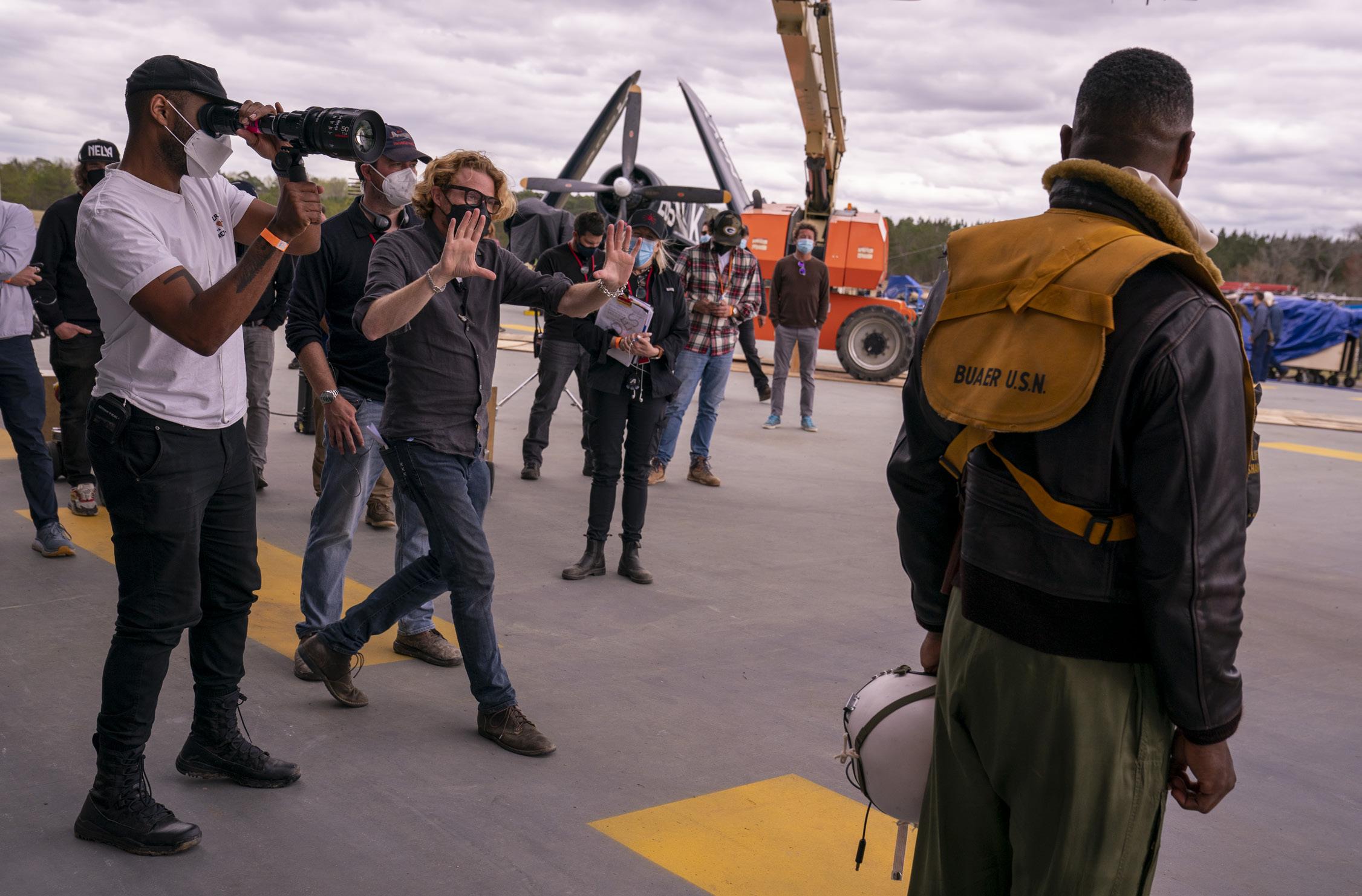
114 DECEMBER 2022
STOP MOTION 12.2022
DEVOTION 114 DECEMBER 2022
Eli Joshua Adé
cinegearexpo.com















































































 BY PAULINE ROGERS
PHOTO BY EMILY ARAGONES / TRISTAR PICTURES
BY PAULINE ROGERS
PHOTO BY EMILY ARAGONES / TRISTAR PICTURES
















 B-CAMERA 1ST AC ROB BULLARD SAYS ACKROYD WOULD “WORK WITH US TO FLUSH OUT WHERE TO PUT HIS CAMERA, AND THEN HE’D LEAVE US TO OUR OWN DEVICES, ENCOURAGING US TO GO FOR IT.” ACKROYD’S ADVICE TO THE CREW WAS SIMPLE: “THINK AS IF EVERY SHOT YOU MAKE IS GOING TO END UP IN THE FILM.”
ABOVE: ACKROYD WITH SET DRESSER STEVEN BRENNAN (RIGHT); 1ST AC NOLAN BALL AND GAFFER BEN HELD BEHIND CAMERA.
B-CAMERA 1ST AC ROB BULLARD SAYS ACKROYD WOULD “WORK WITH US TO FLUSH OUT WHERE TO PUT HIS CAMERA, AND THEN HE’D LEAVE US TO OUR OWN DEVICES, ENCOURAGING US TO GO FOR IT.” ACKROYD’S ADVICE TO THE CREW WAS SIMPLE: “THINK AS IF EVERY SHOT YOU MAKE IS GOING TO END UP IN THE FILM.”
ABOVE: ACKROYD WITH SET DRESSER STEVEN BRENNAN (RIGHT); 1ST AC NOLAN BALL AND GAFFER BEN HELD BEHIND CAMERA.















 Christina Voros
Mike Parry
A-Camera Operator Scott Dropkin, SOC
Christina Voros
Mike Parry
A-Camera Operator Scott Dropkin, SOC




 Erik Messerschmidt, ASC, goes “above” and “beyond” for Sony Pictures’ Korean War-era drama, Devotion
by Kevin H. Martin
Photos by Eli joshua Adé / Sony Pictures Entertainment
Erik Messerschmidt, ASC, goes “above” and “beyond” for Sony Pictures’ Korean War-era drama, Devotion
by Kevin H. Martin
Photos by Eli joshua Adé / Sony Pictures Entertainment














 What makes someone an innovator? An internal drive to make something better? An external motivation to pursue progression, whatever the field or application? Or perhaps a community like this labor union, 2022 edition of Generation NEXT , ICG freelancer Margot Lester talked to some of the best and brightest new(ish) members of Local 600 who are advancing their jobs and this industry with innovative technologies, next level, using old-school gear in new-school ways, adapting and improving legacy systems, and making inroads toward improved representation. Perhaps the best definition of an innovator is simply someone
What makes someone an innovator? An internal drive to make something better? An external motivation to pursue progression, whatever the field or application? Or perhaps a community like this labor union, 2022 edition of Generation NEXT , ICG freelancer Margot Lester talked to some of the best and brightest new(ish) members of Local 600 who are advancing their jobs and this industry with innovative technologies, next level, using old-school gear in new-school ways, adapting and improving legacy systems, and making inroads toward improved representation. Perhaps the best definition of an innovator is simply someone
 By Margot Lester
By Margot Lester





 MCCONVILLE
MCCONVILLE










 BY CHRISTINA BELLE
BY CHRISTINA BELLE











